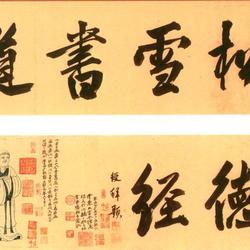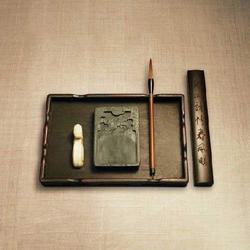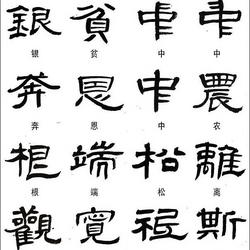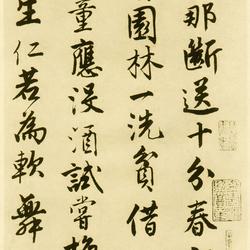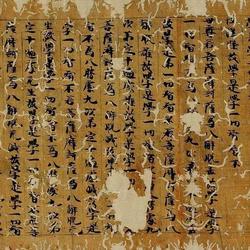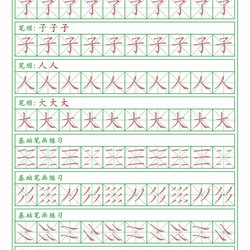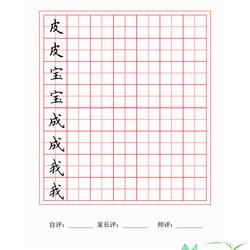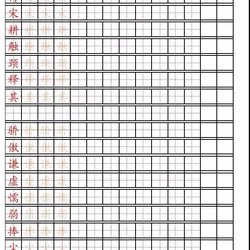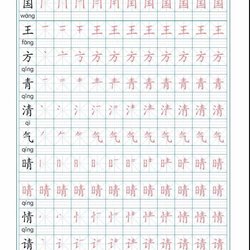Huairen's Collection of Wang Xizhi's "Holy Religion Preface" The Beginning of "Collection of Characters" High Definition is More Convenient
Huairen collected Wang Xizhi's "Preface to the Holy Religion" because seven Buddha statues are engraved on the head of the stele, which is also called "The Preface to the Seven Buddhas and the Holy Religion". In the third year of Xianheng (672), it was built at Hongfu Temple in Chang'an, the capital. "The Preface to the Holy Teachings of the Tripitaka" was written by Emperor Taizong of the Tang Dynasty in recognition of Master Xuanzang who went to various countries in the Western Regions to obtain Buddhist scriptures and translated the essential texts of the Tripitaka after returning to China. Prince Li Zhi (Gaozong) also wrote the appendix, Zhuge Shenli cut the stone, and Zhu Jingzang engraved the words. The stele is 9.4 feet high and 4.2 feet wide. There are 30 lines in total, ranging from more than 80 words per line. Now the Forest of Steles in Xi'an, Shaanxi Province.
For the "Ji Wang" category, the "Preface to the Holy Religion" is the first to be recommended. The inscriptions on the stele were collected and collected by Huairen over a period of 25 years, borrowed from the original works of Wang Xi stored in the inner palace, so they are highly regarded by the world. The inscriptions on the stele are selected from various inscriptions written by Wang Wangxi, such as Zhi, Qu, or, Qun, Ran, Lin, Huai, Jiang, Feng, Lang, Shi, Chong, You, Tuo, Wei, Lan, Shi, Ji, etc., all taken from " "Lanting Preface". Due to Huairen's profound knowledge and rigorous attitude towards calligraphy, the stipples on this stele are vigorous, ups and downs, and subtle, fully embodying the characteristics and charm of Wang's calligraphy, achieving a natural position, orderly structure, peace and simplicity. realm. "Of course, this method of collecting characters also has considerable limitations. For example, there are few changes in repeated characters, and the structure of characters combined with radicals lacks echo. Since this monument, collections of characters written by Wang Xizhi or other great calligraphers have been used for inscriptions. Others continue to appear, such as the "Xingfu Temple Stele" collected by Monk Daya, and the "New Translation of the Diamond Sutra" prefaced by Tang Xuan, all of which are excellent works, but "The Preface to the Sacred Teachings of Wang Xi" is still the most successful.
The origin of the Preface to the Holy Doctrine:
Master Xuanzang, a monk in the Tang Dynasty, traveled west to seek Buddhist scriptures. He went through untold hardships and risked his life before reaching India. When he returned to Chang'an to study for Buddhist scriptures, the whole country was shocked. Taizong was very moved by Xuanzang's great spirit of arduously studying for Buddhist scriptures, and called him "a great event in the dynasty". He also highly praised his achievements in Buddhism, so in the 19th year of Zhenguan, he On February 6, he was ordered to translate Sanskrit scriptures at Hongfu Temple in Chang'an. He also gave him a preface to his translation of "Yoghishastra", which is the origin of "Preface to the Sacred Teachings".
After the "Preface to the Holy Religion" was written, in order to immortalize it for posterity and make it known to the world, preparations were made to engrave it on a stele for circulation. And because Emperor Taizong loved Xi Zhi's calligraphy, everyone believed that this stele was not "not valuable enough" but the calligraphy of the calligraphy sage Wang Xizhi. However, Xizhi was from Jin Dynasty and could not write again, so he asked Huairen, a monk from Hongfu Temple, to do the work of collecting calligraphy and spelling. Shi Huairen was originally a monk who was good at Wang Xizhi's calligraphy. It is said that he was also a descendant of Wang Xizhi. Huairen used the method of collecting calligraphy to spell out the full text of "The Preface to the Holy Religion" in Wang Xizhi's calligraphy. In order to facilitate Huairen's calligraphy collection work, Taizong specifically agreed to provide a large number of Wang Xizhi's calligraphy collections in the palace for the collection of calligraphy and copying.
Huairen, a calligrapher and monk in the Tang Dynasty, lived in Hongfu Temple in Chang'an (today's Xi'an, Shaanxi Province). He once copied Wang Xizhi's handwriting into the Preface to the Holy Teachings of the Tripitaka of the Tang Dynasty, which is unique among the inscriptions. Zhou Yue of the Northern Song Dynasty recorded in "Ancient and Modern Dharma Script Garden": "The Preface to the Sacred Teachings was made by Emperor Wen. At that time, various Buddhist committees in the capital, Hongfu Temple, Huairen, gathered the Youjun running script and laid stones. It took many years to complete, and Yishao's authentic works were collected among them. ." The contemporary Kang Youwei said in "Guang Yi Zhou Shuang Ji": "The Youjun books collected by Huairen in the Preface to the Holy Religion are of natural position and orderly writing. They can be described as extraordinary talents."
The full text of "Holy Religion Preface" has a total of 1,904 words, including three parts: a preface by Emperor Taizong of the Tang Dynasty, a note by Emperor Gaozong Li Zhi, and a sutra translated by Xuanzang himself. Huairen went through a long process Twenty-four years of collecting, piecing together, and painstaking efforts finally resulted in this monument. This shows that "Preface to the Holy Religion" is the culmination of Wang Xizhi's calligraphy. This stele draws heavily on the strengths of Wang's writings, pays great attention to changes and connections, and is also quite precise in imitation. Therefore, it can be said that the "Holy Calligraphy" was selected and synthesized from Wang's writings, which is enough to represent the essence of Wang's writings. It can be called the best example.
Jiang Heng, a native of the Qing Dynasty, said in "Inscriptions and Postscripts of Zhuocuntang": "Shamen Huairen is the grandson of Youjun, and he got his family law, so the "Preface to the Holy Religion of Jizi" is full of energy and energy, and it goes hand in hand with the "Preface to Lanting". He is the ancestor of calligraphy through the ages." After the publication of "The Preface to the Holy Religion of Collection of Characters", calligraphers of all dynasties since the Song, Ming and Qing Dynasties spoke highly of this work, calling it "a model for a hundred generations. The imitation of Xi's calligraphy must begin with Huairen." Indeed, this is This inscription fully demonstrates the elegance and variety of Wang Xizhi's calligraphy art. The merits of this stele are immeasurable, and it is still a rare and precious inscription for us to learn calligraphy.
"Huairen Collection of Wang Xizhi's Preface" is a reflection of the Tang people's respect for Wang Xizhi's calligraphy. It is also the most successful and influential of the many collections of Wang Xizhi's calligraphy inscriptions.
Its main features are:
(1) There are many words. There are more than 1,900 words in the stele. The words are elegant and elegant, and the styles complement each other. There is a lot of room for learning and copying.
(2) There are many fonts. The whole stele is a mixture of Wang Xizhi's regular script, running script and cursive script. It boldly matches, combines and integrates, combines movement and stillness, and expresses it freely. It has an important enlightenment effect on later calligraphy, especially contemporary calligraphy.
(3) There are many changes. Firstly, the writing techniques are very rich, including regular script, running script, cursive script, official script and seal script. Secondly, the knotting of characters is novel and vivid, finding surprises in the ordinary, opening and closing in a measured way, and the straight and straight lines depend on each other, and are flexible and colorful; Repeated characters and radicals all reflect changes and innovations. In the history of calligraphy, it can be said that "collection of characters" began with Huairen.
Don’t forget to bookmark this post, it’s easier to copy than a copybook!
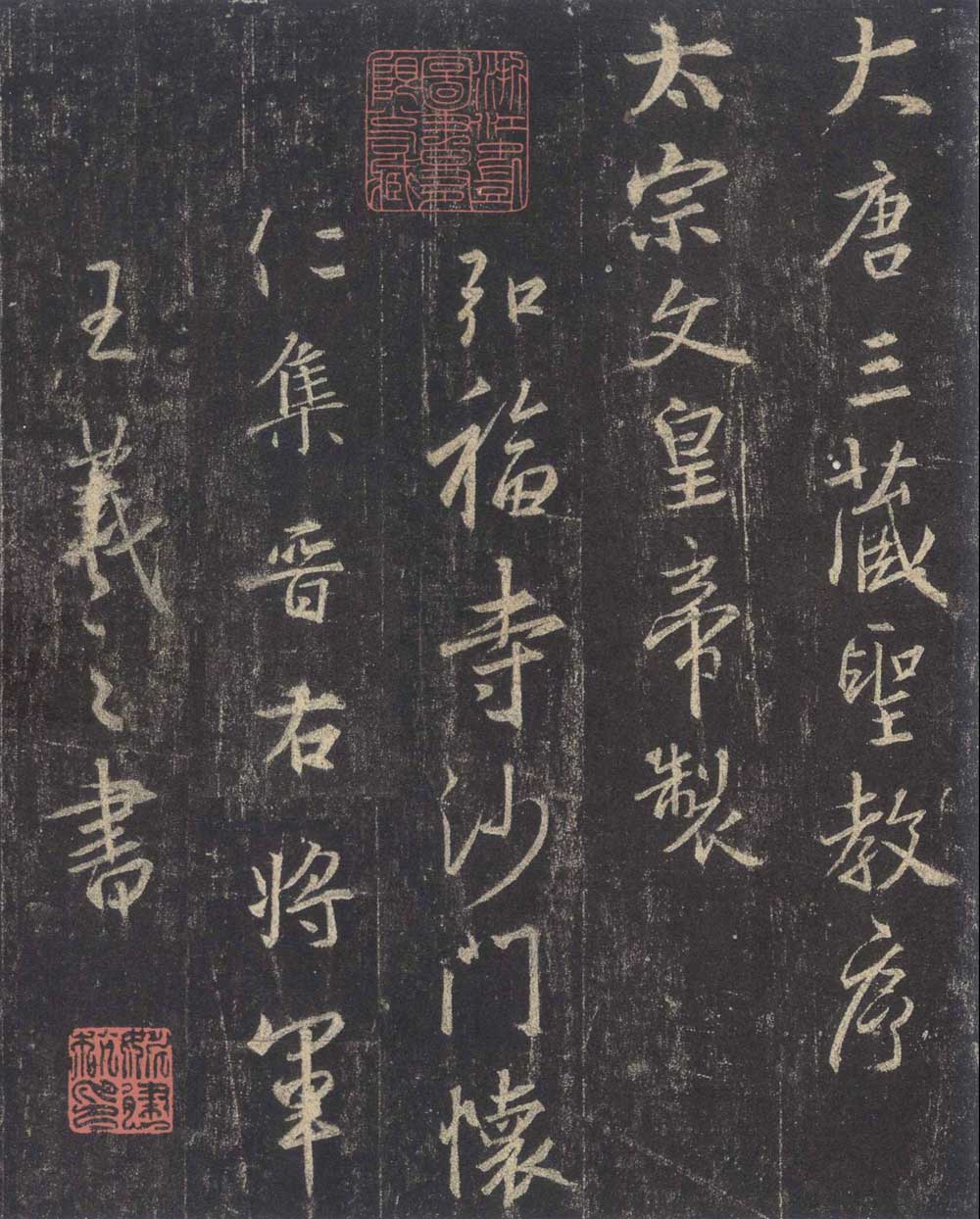
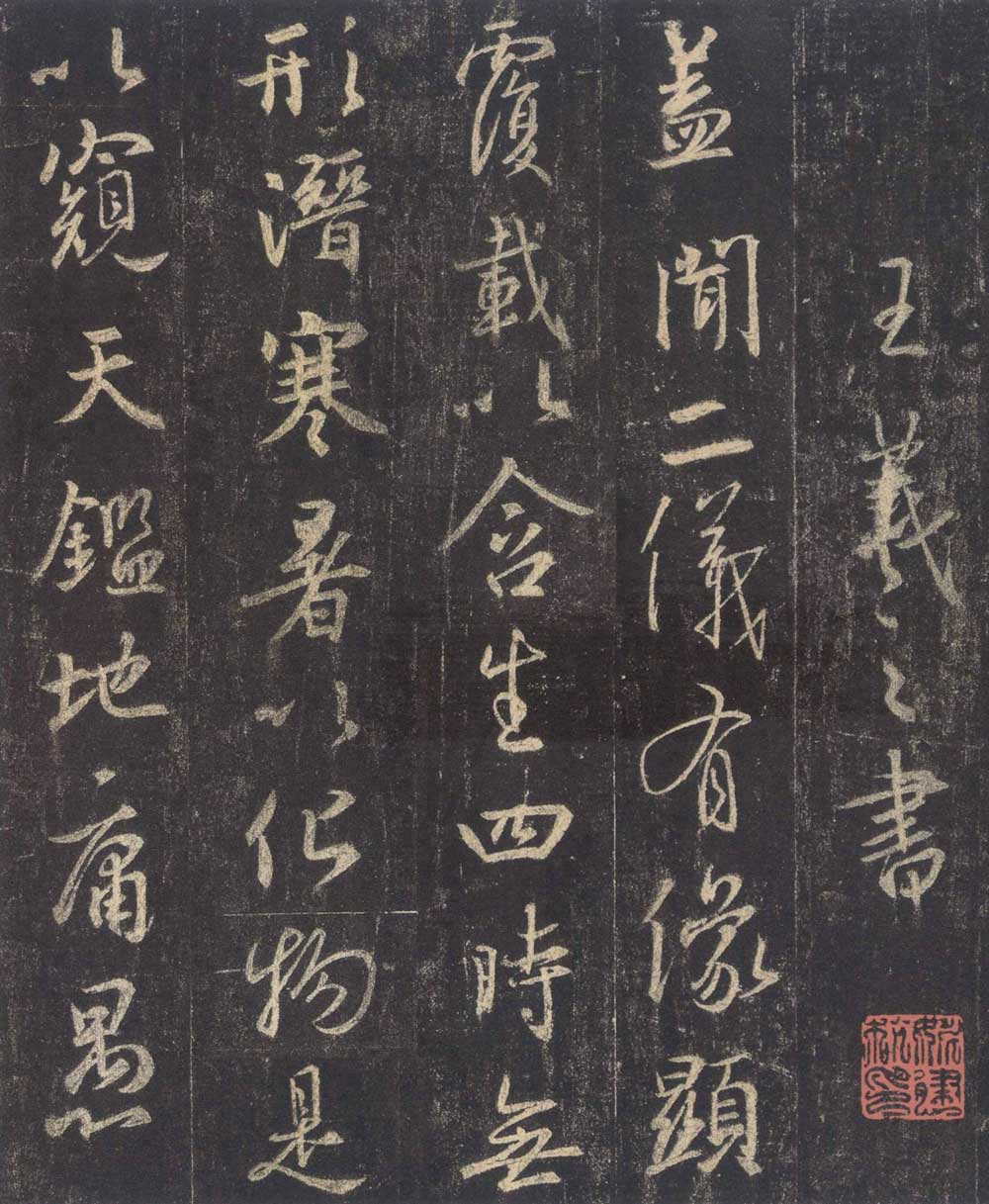
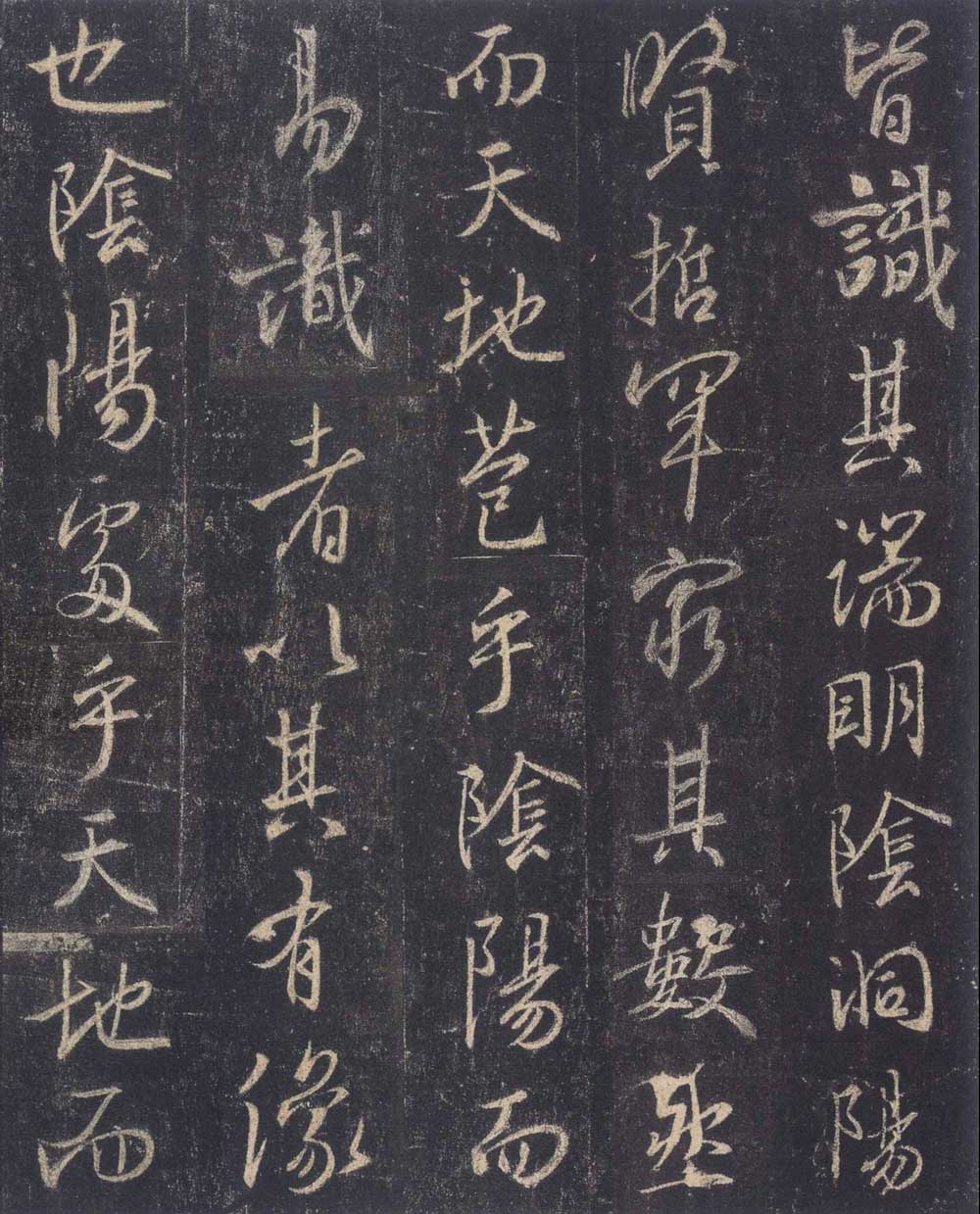
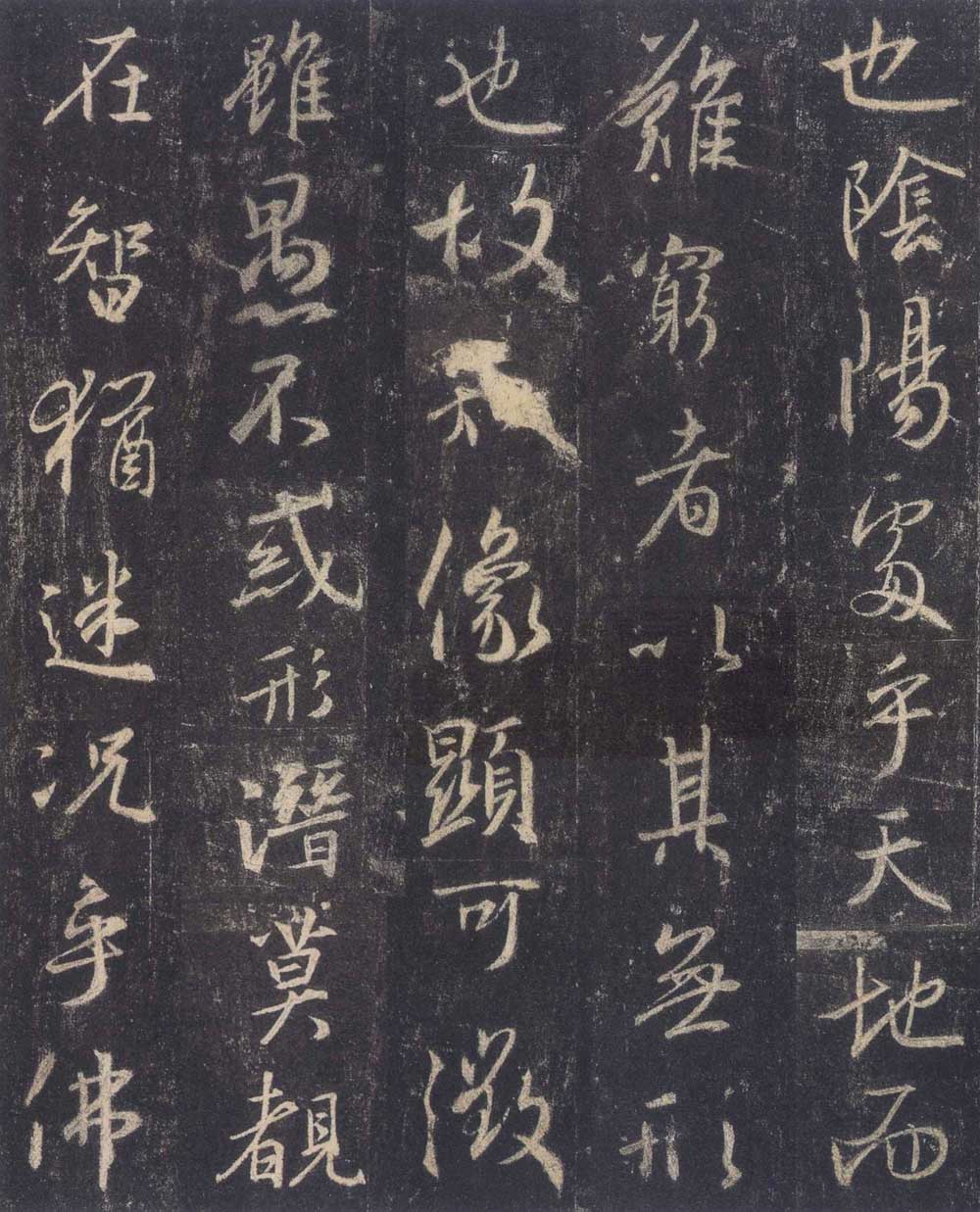
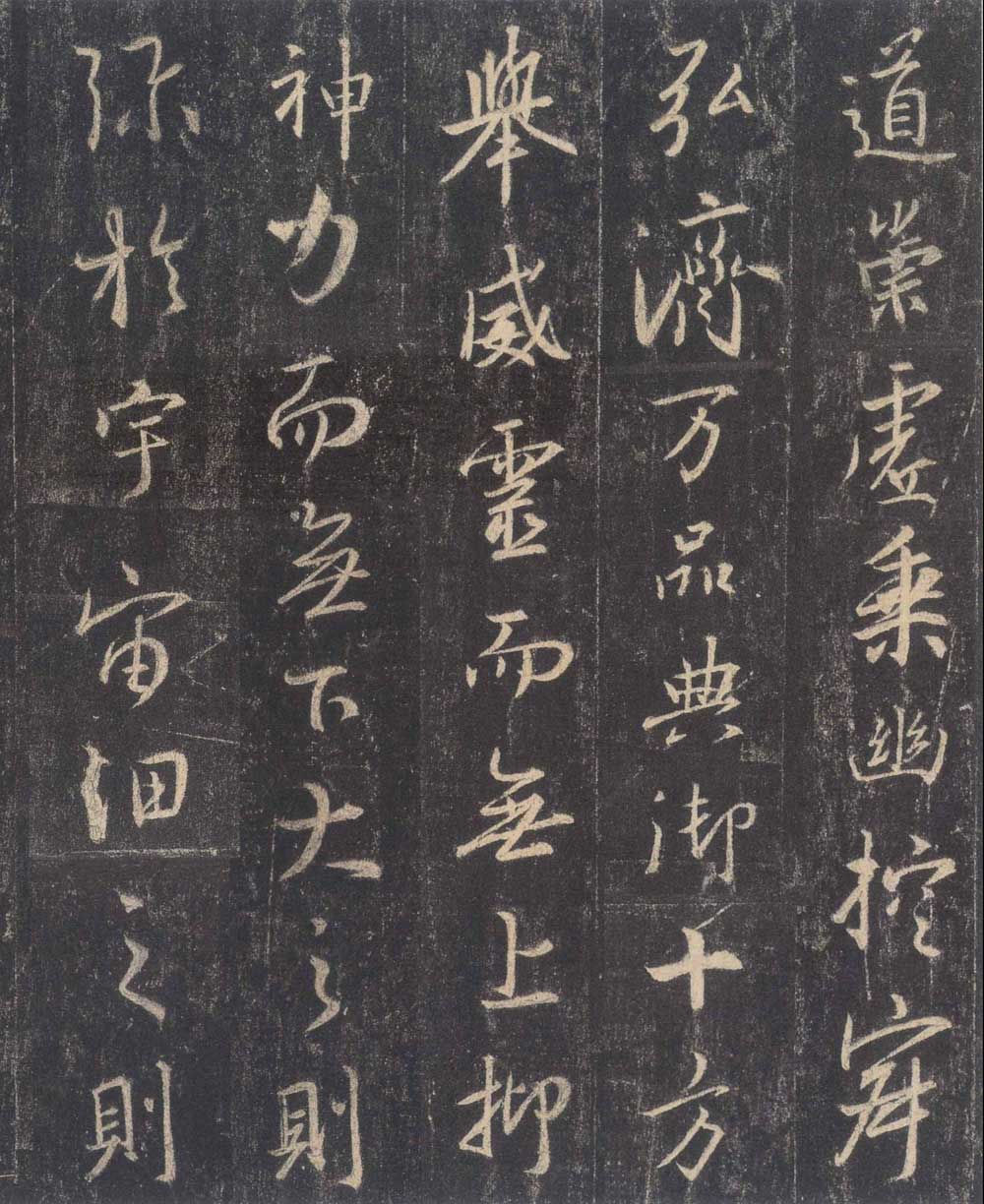
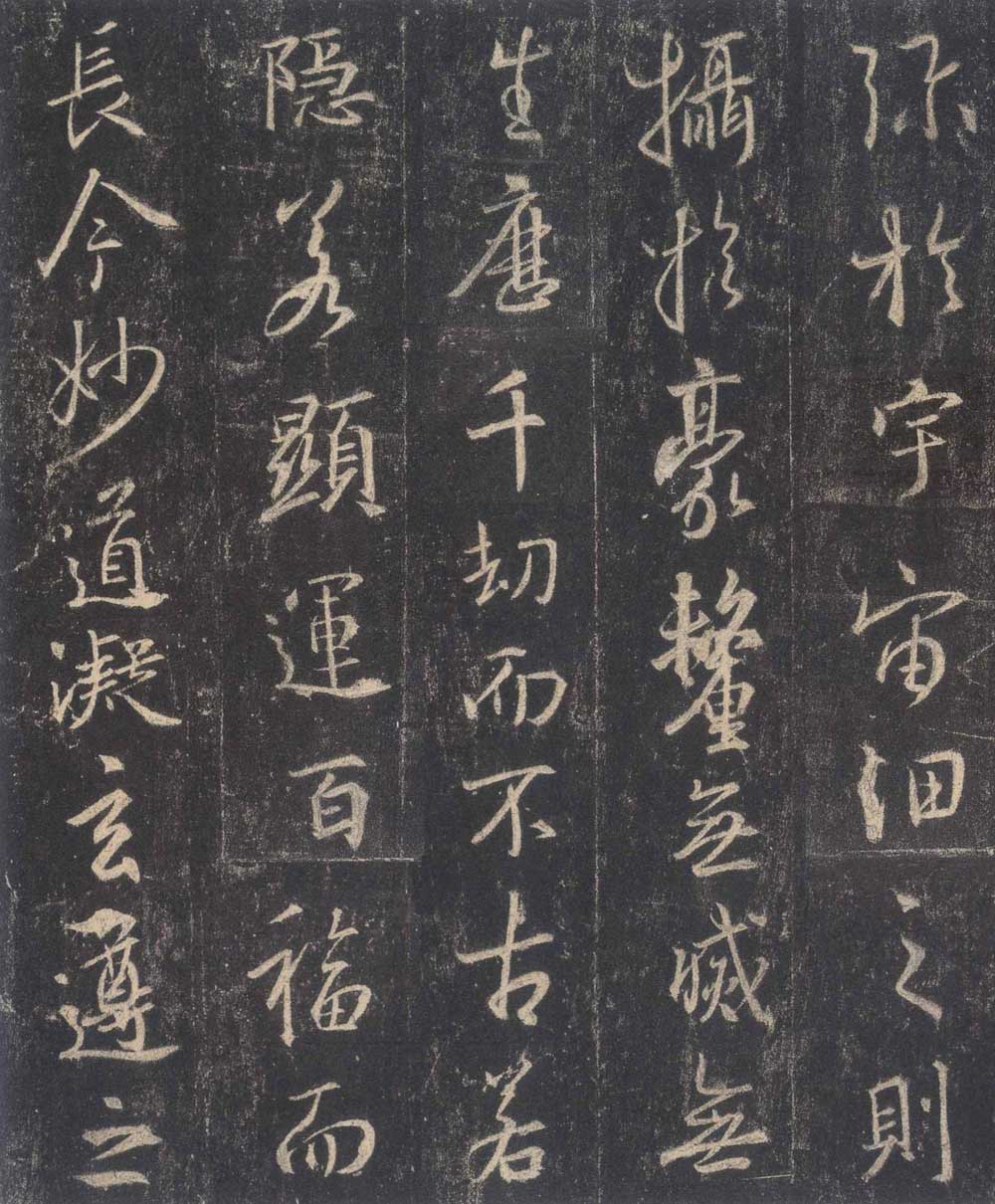
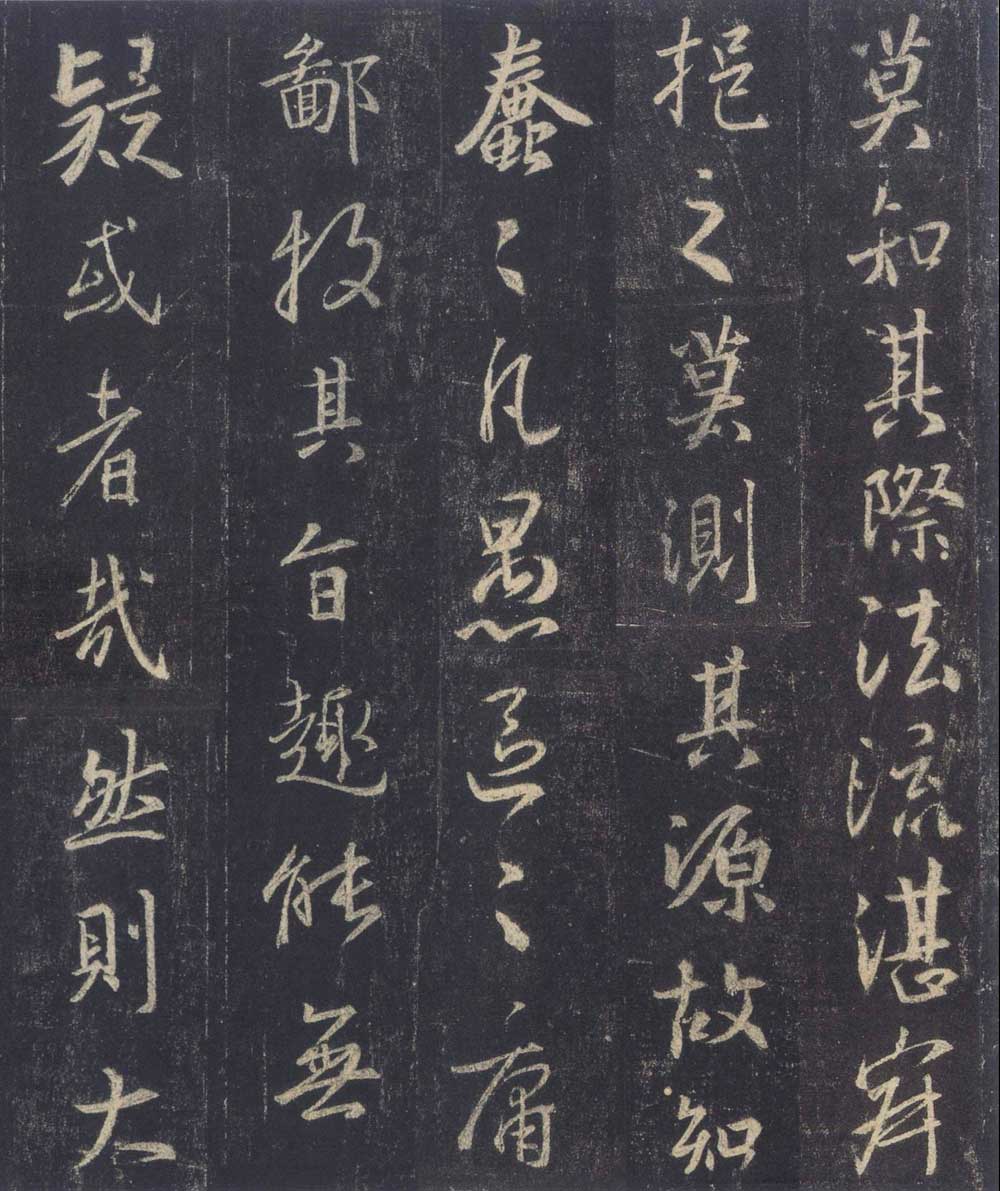
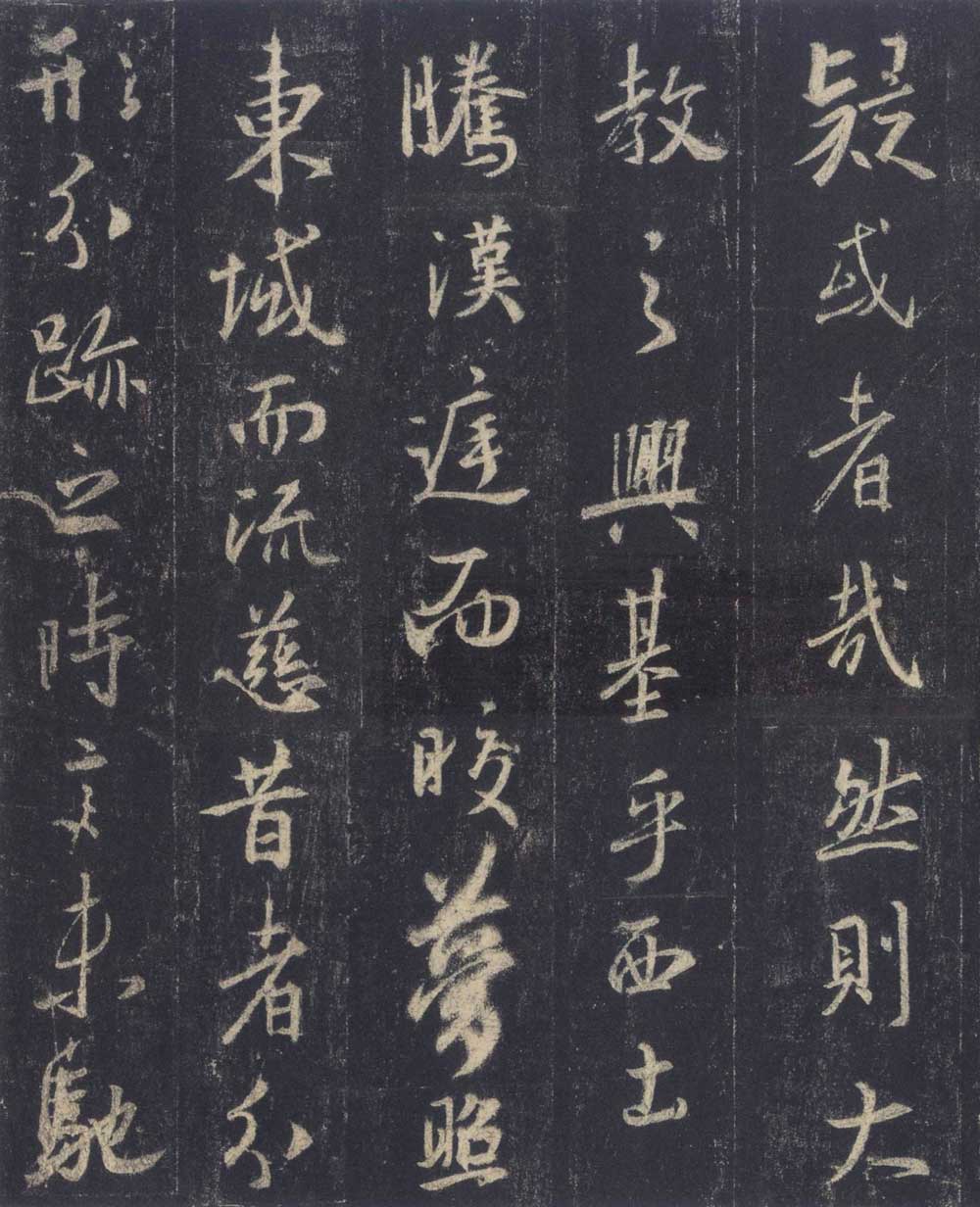
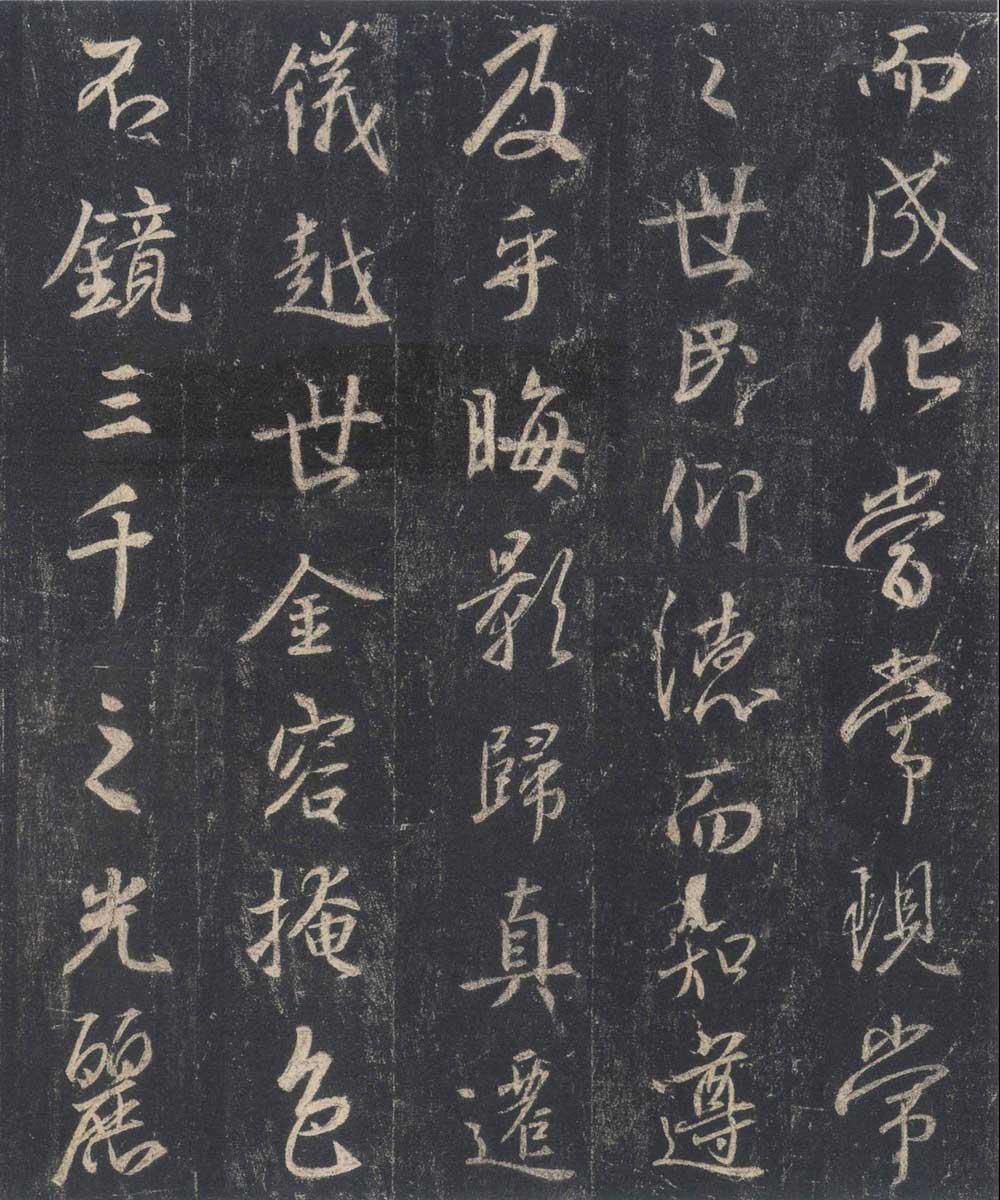
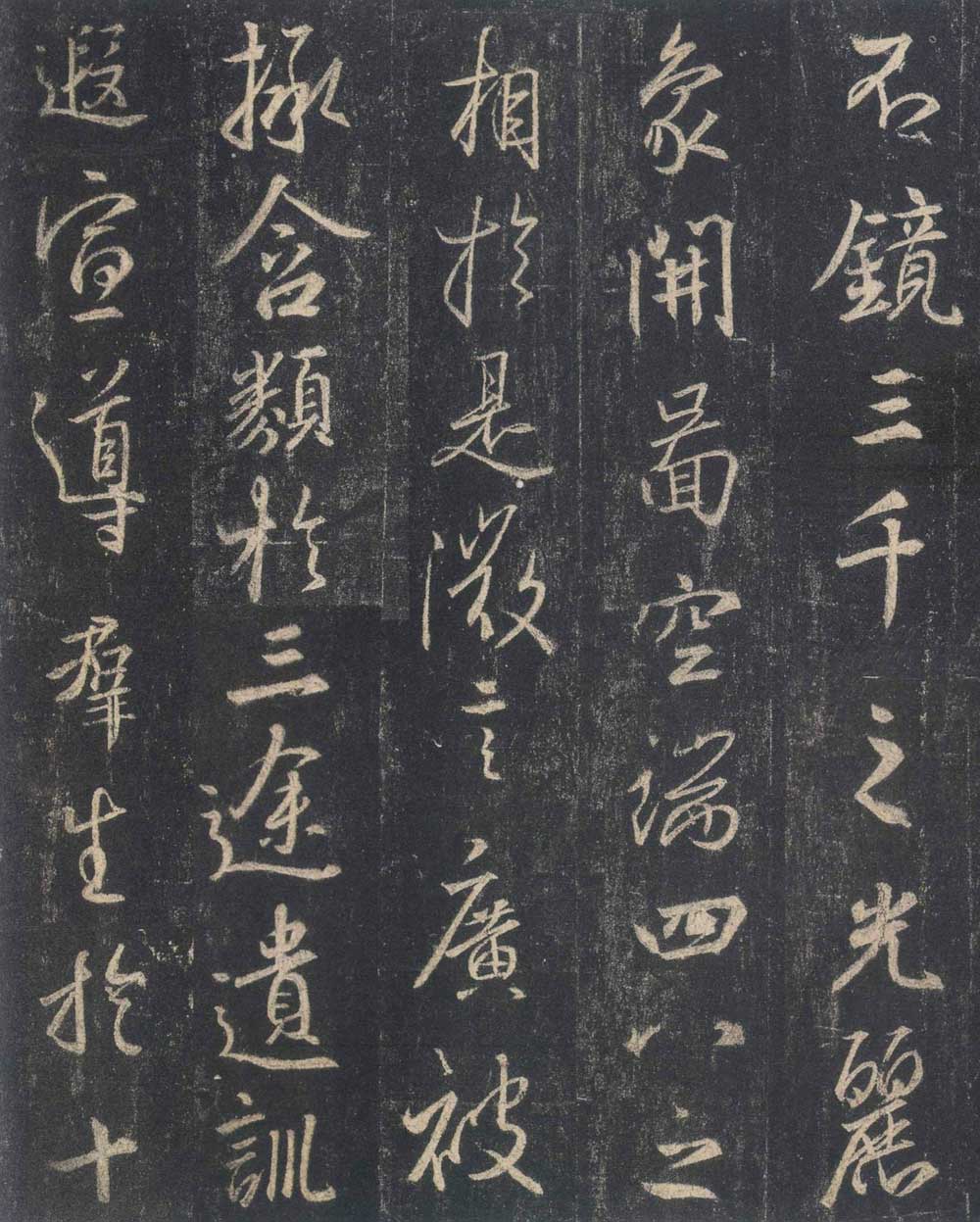
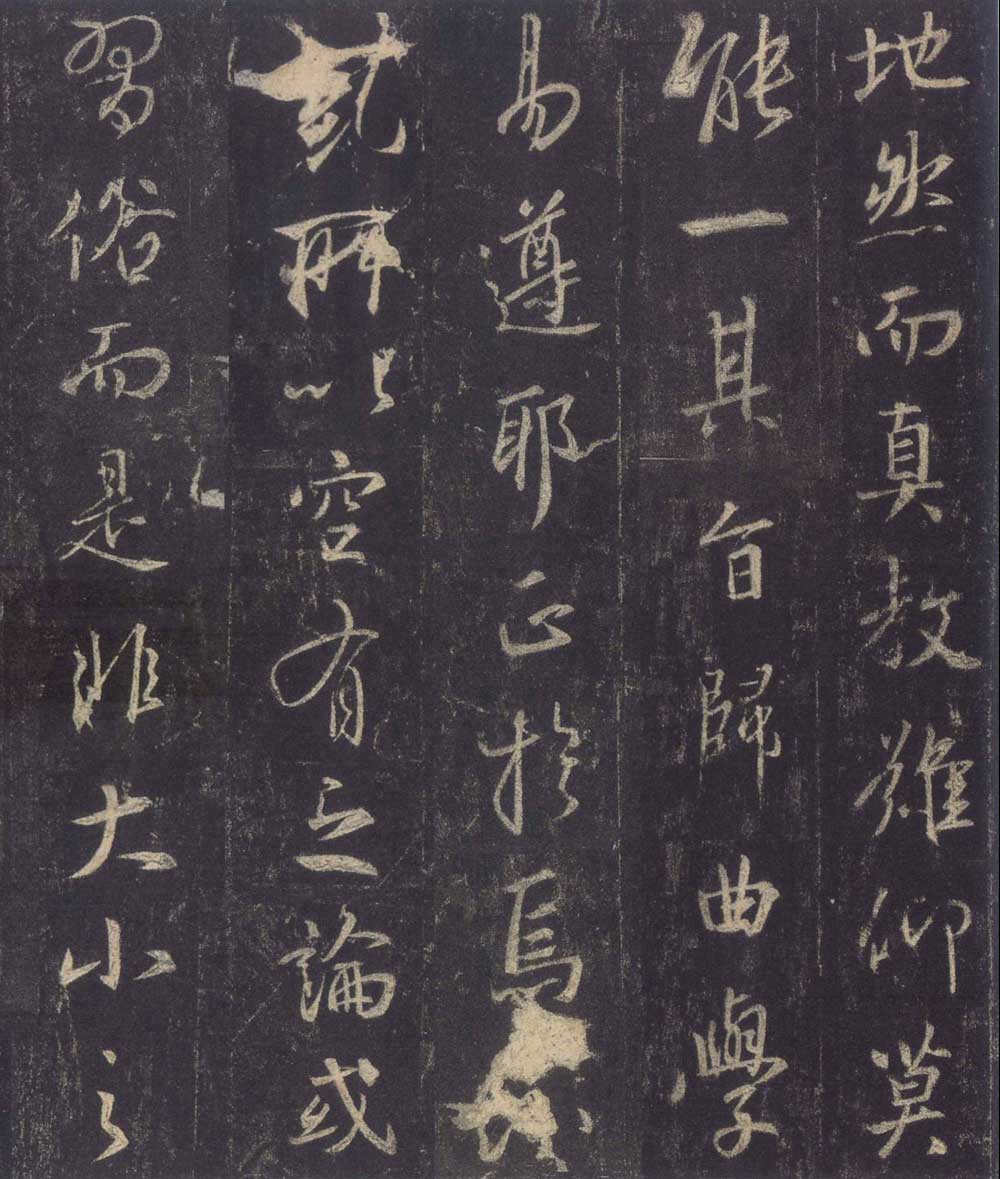
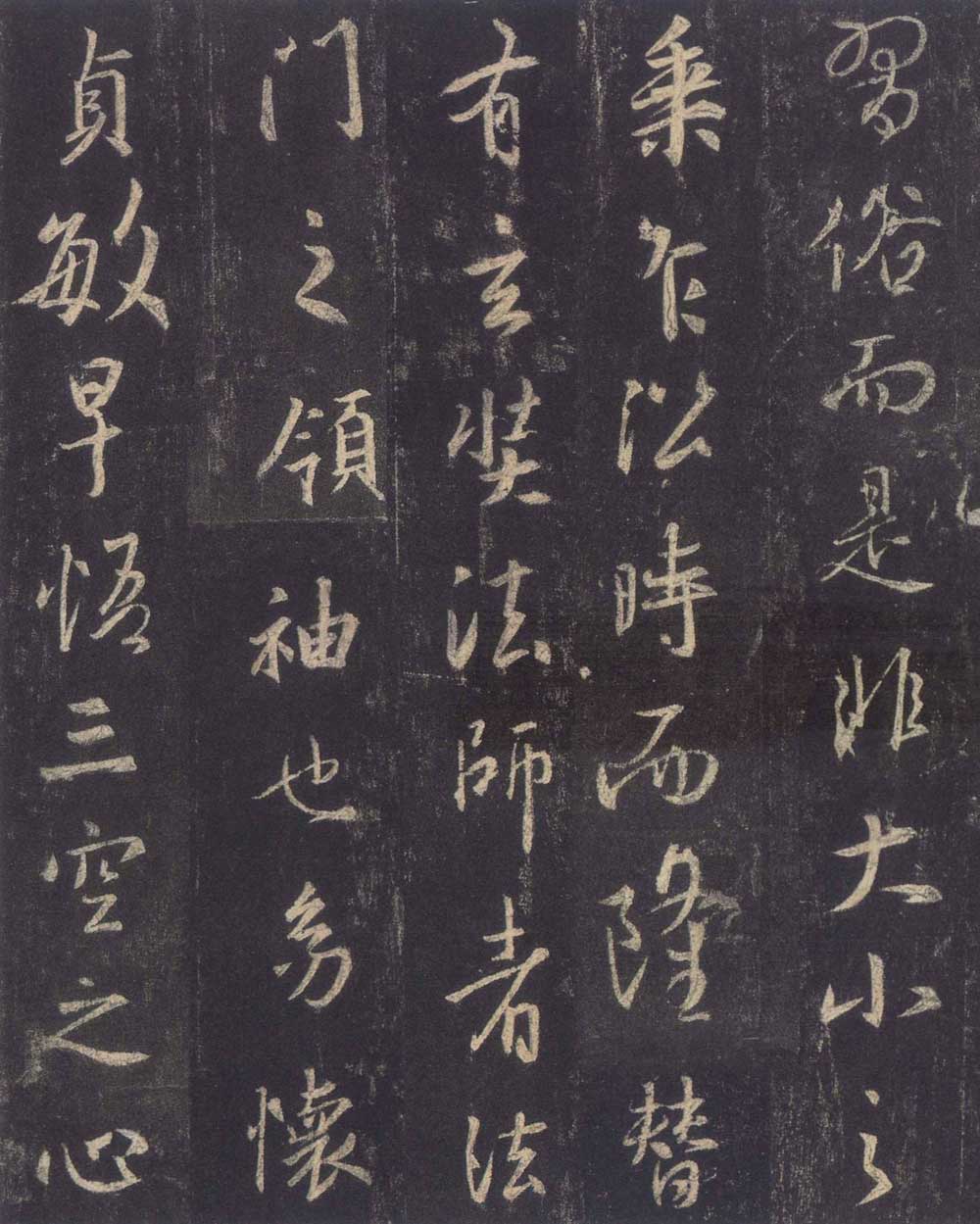
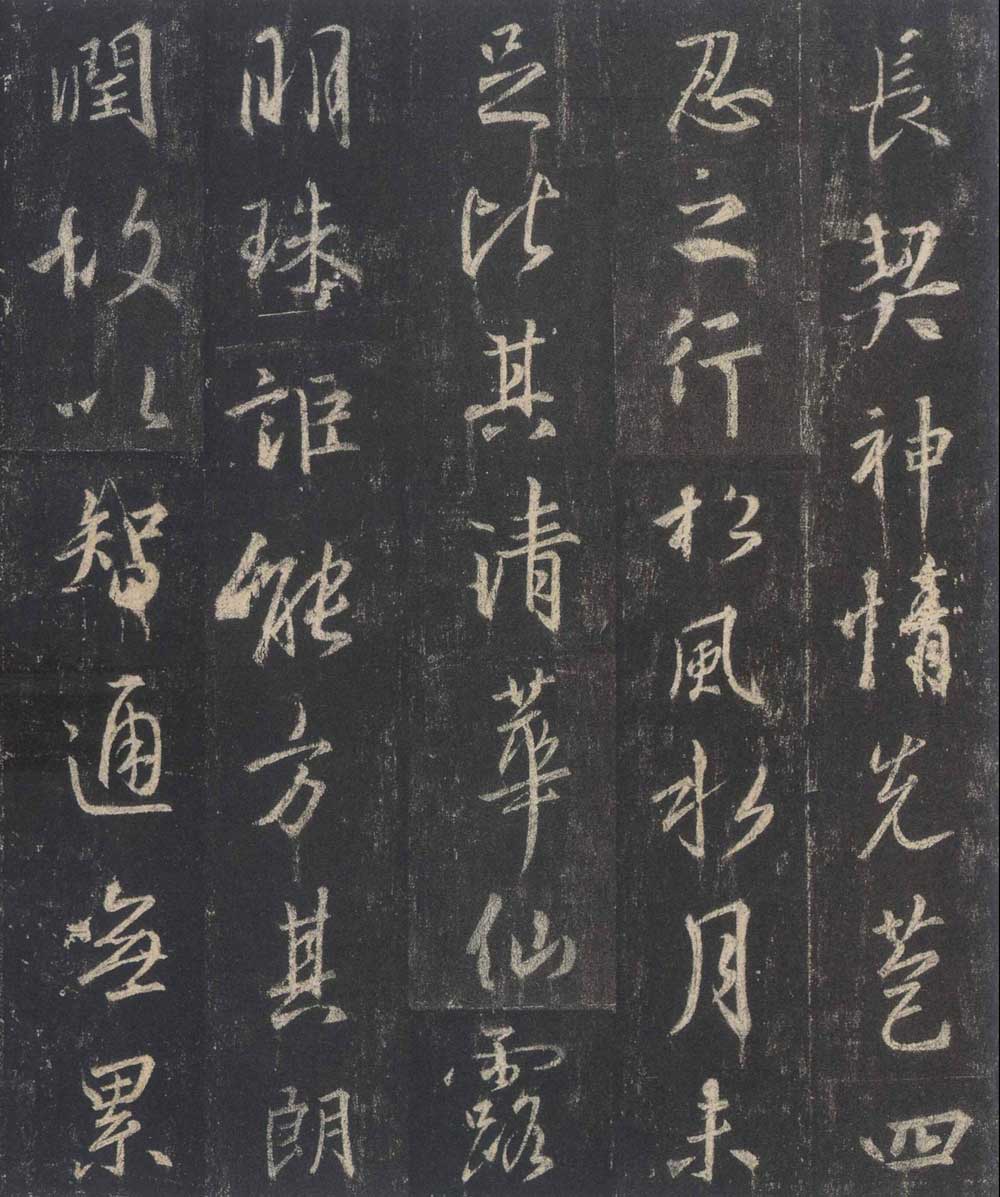
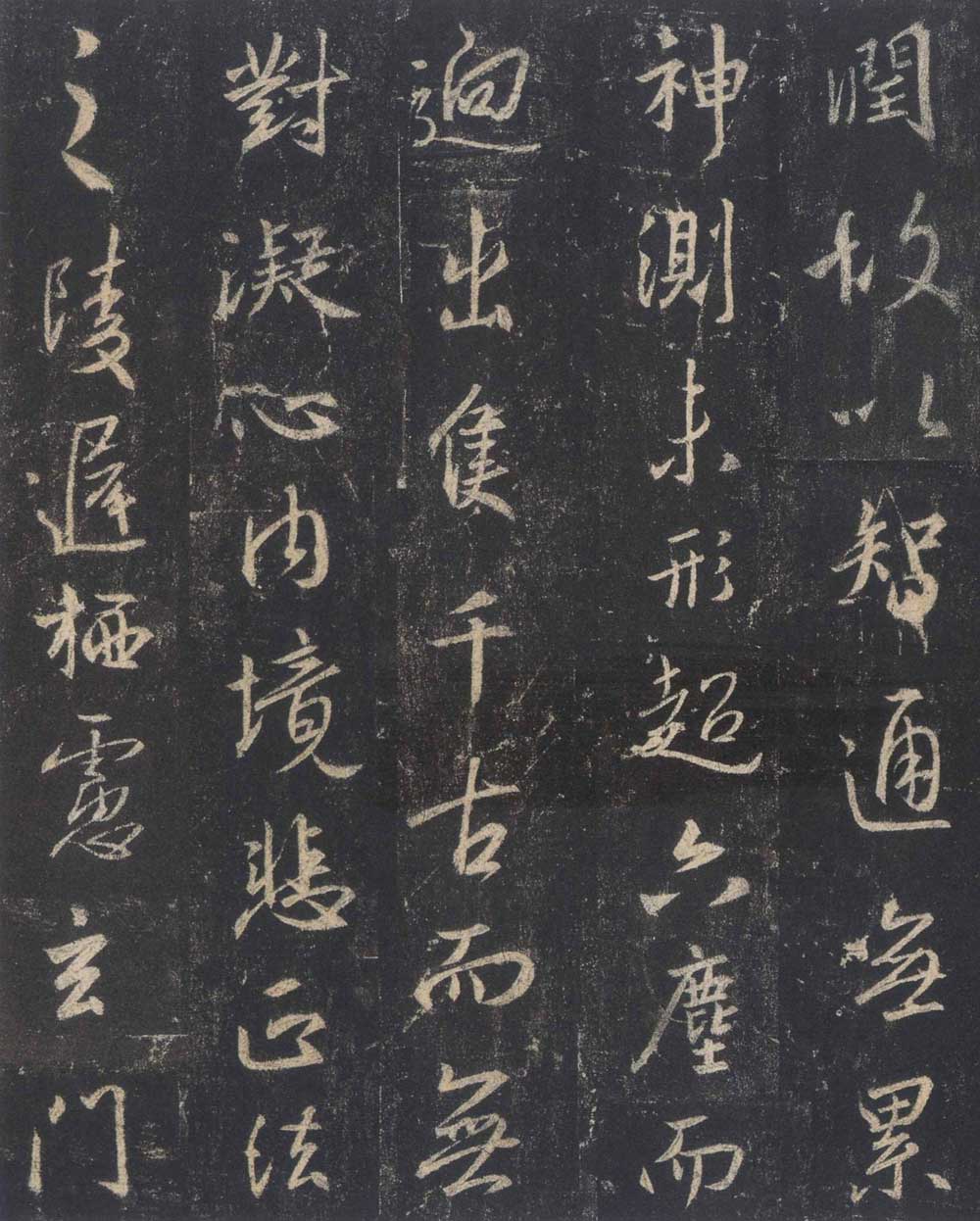
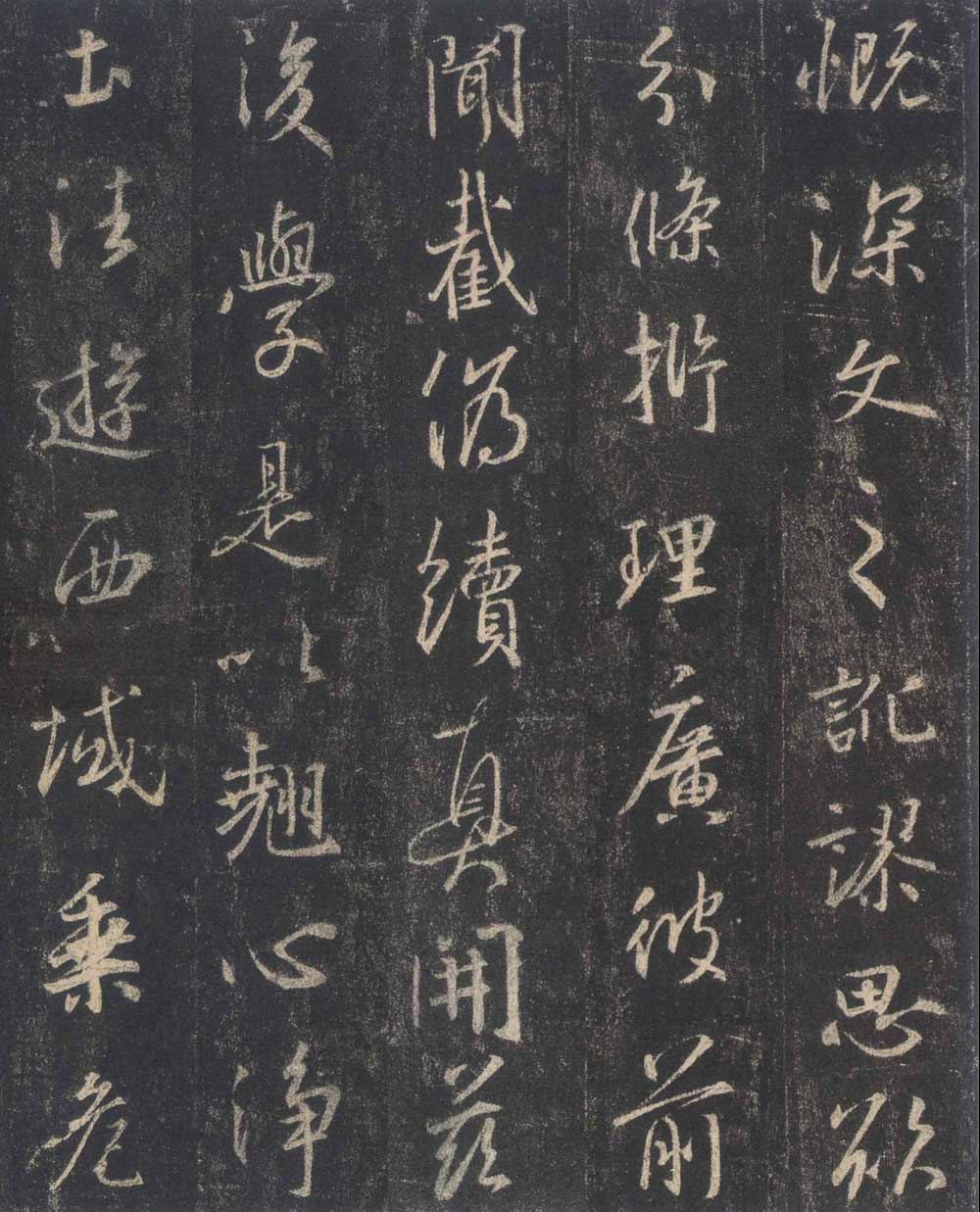
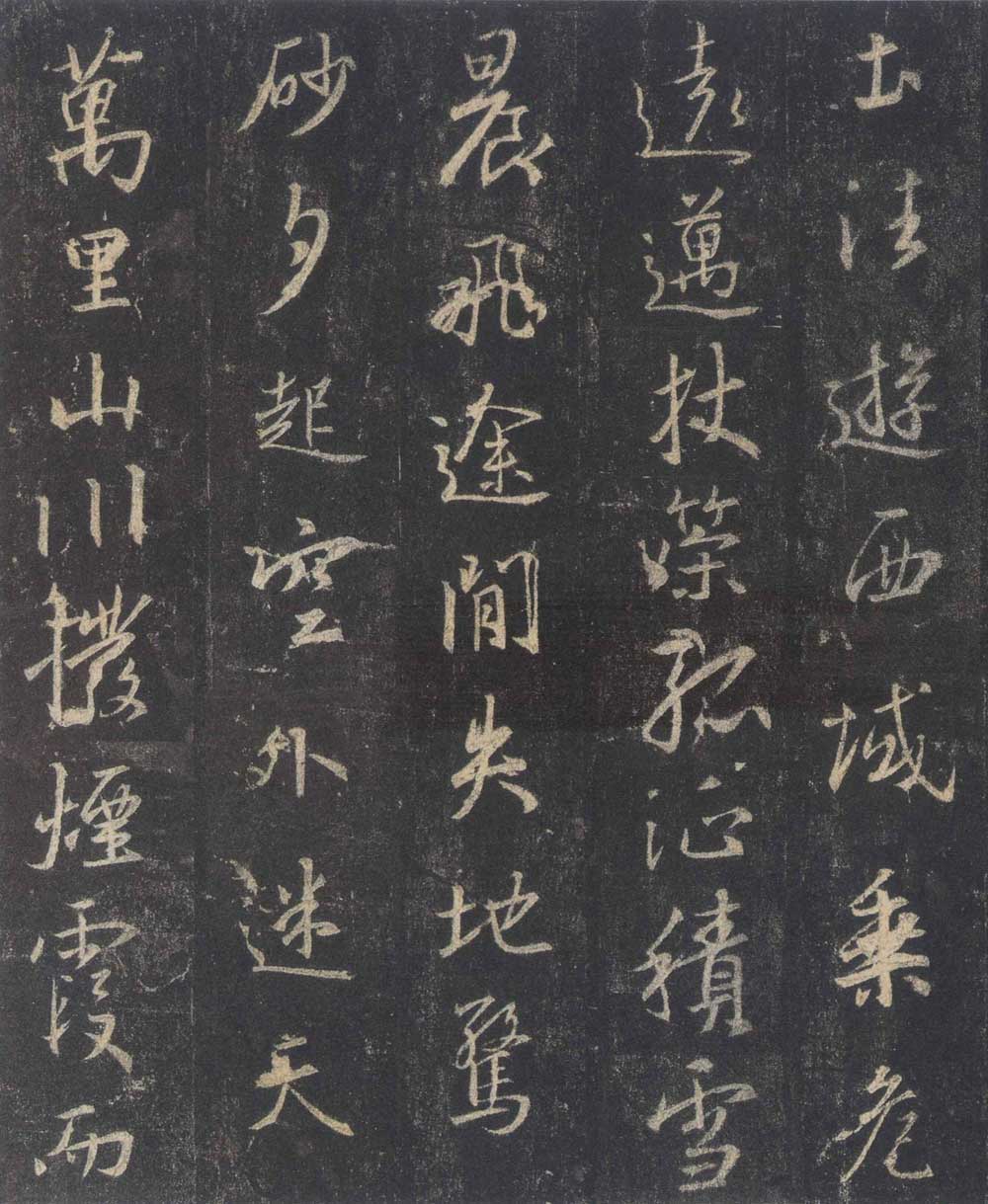
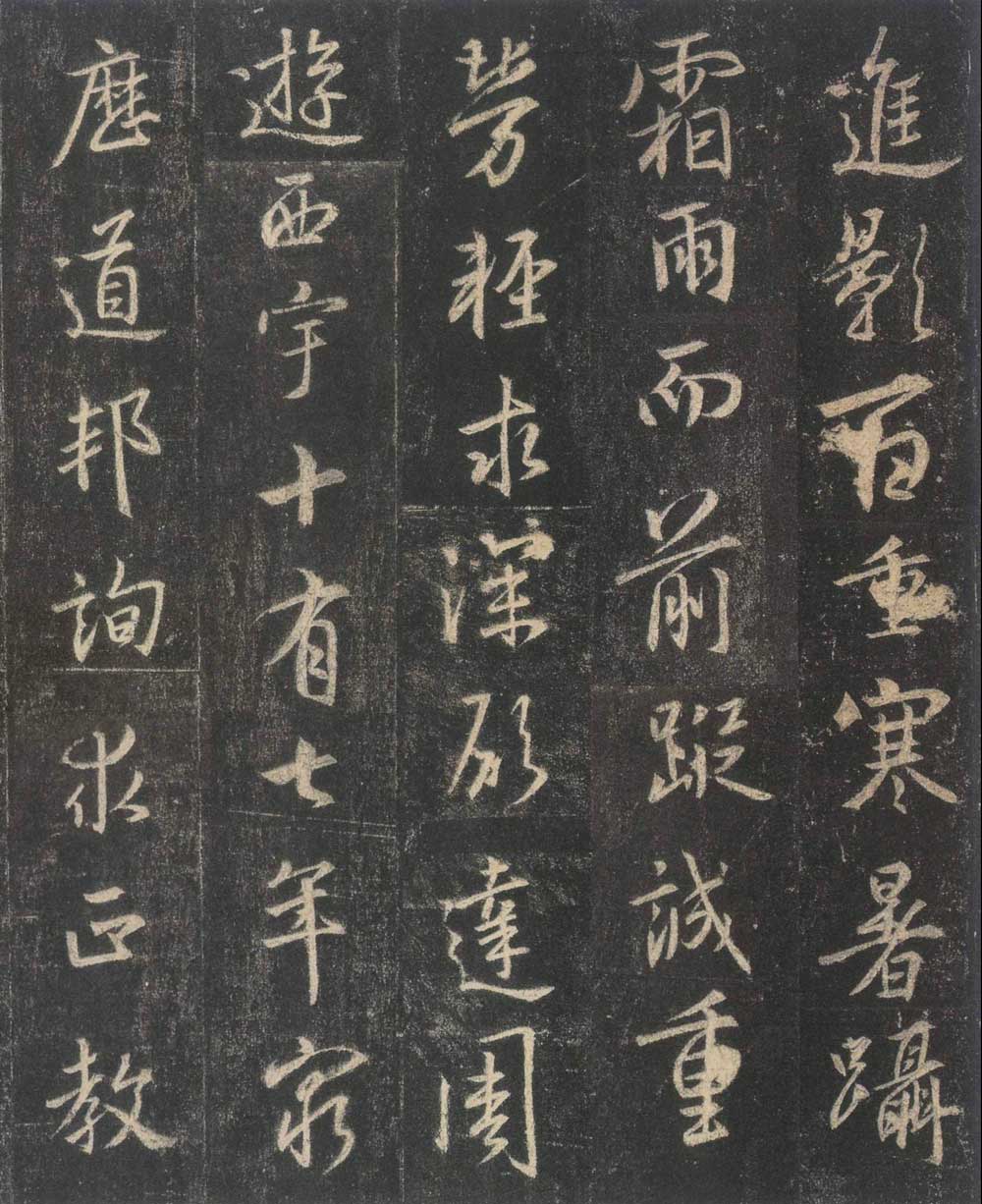
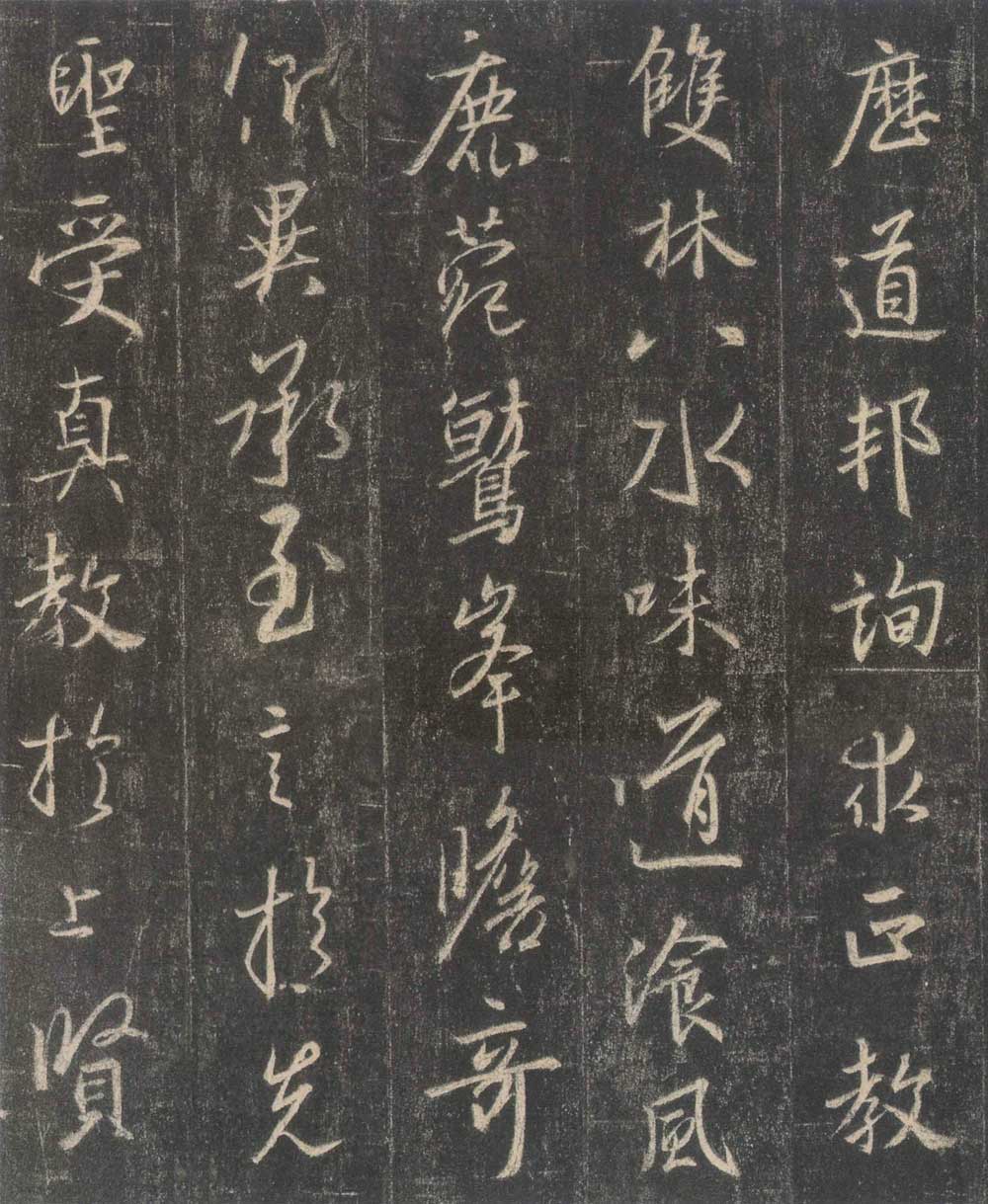
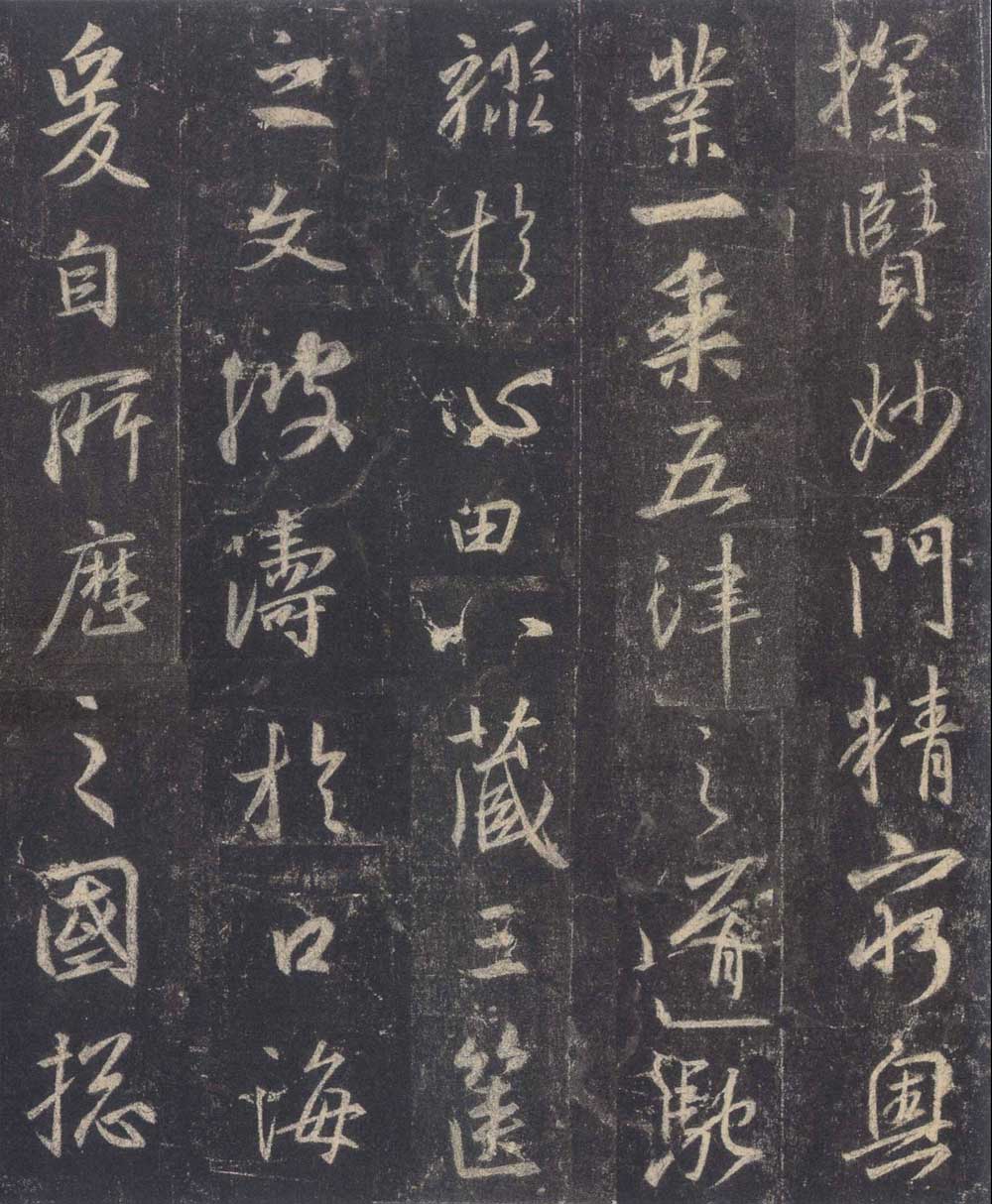
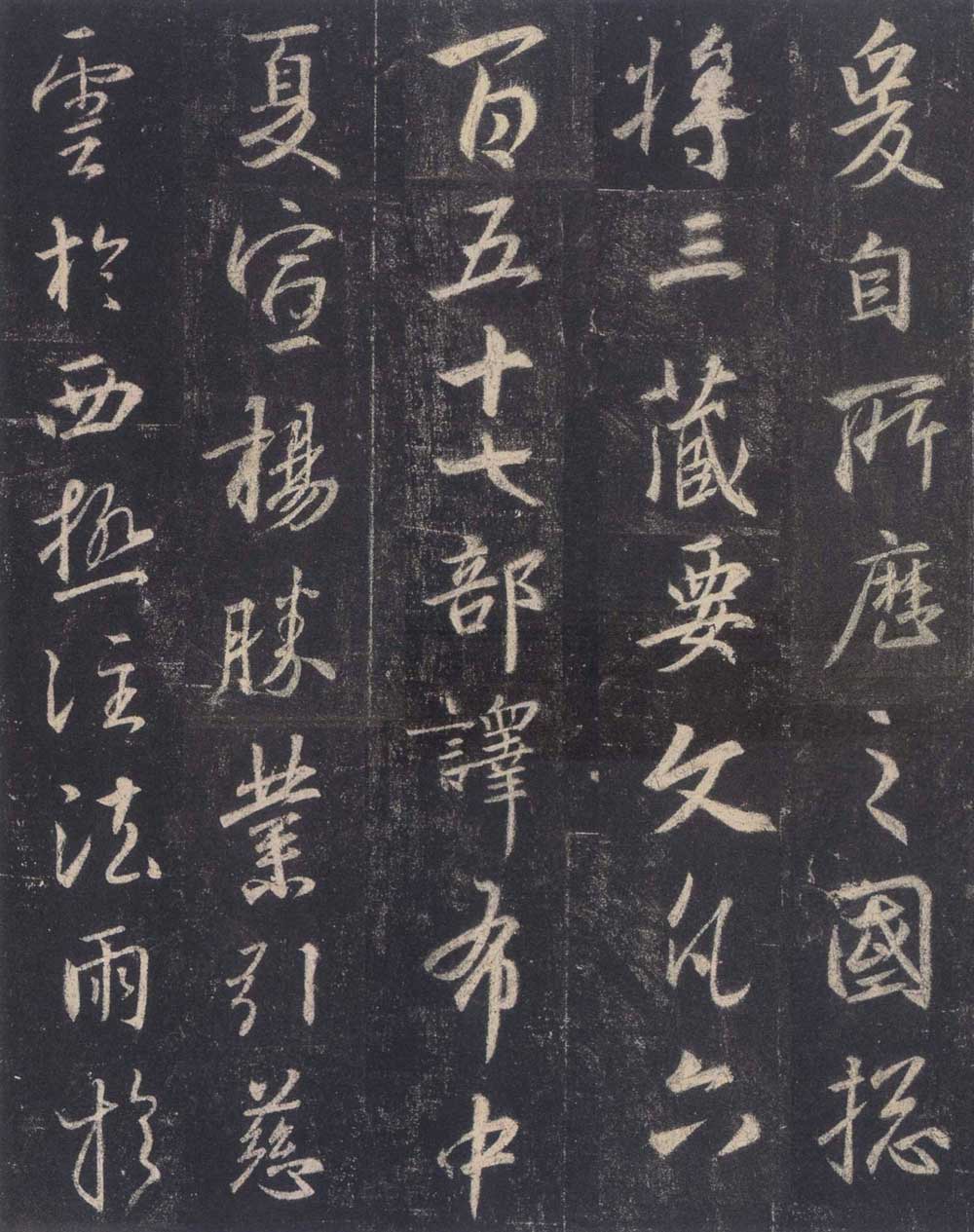
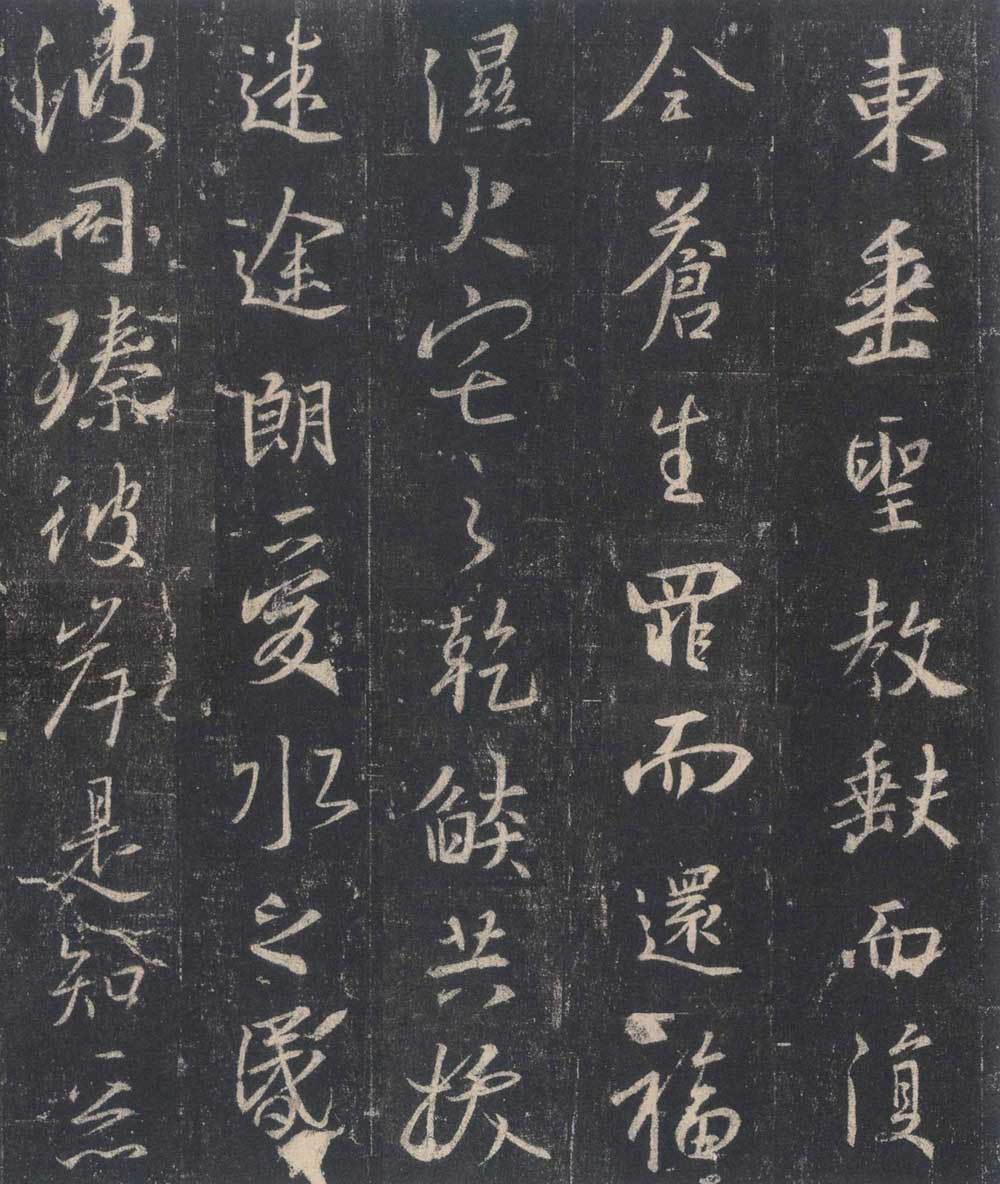
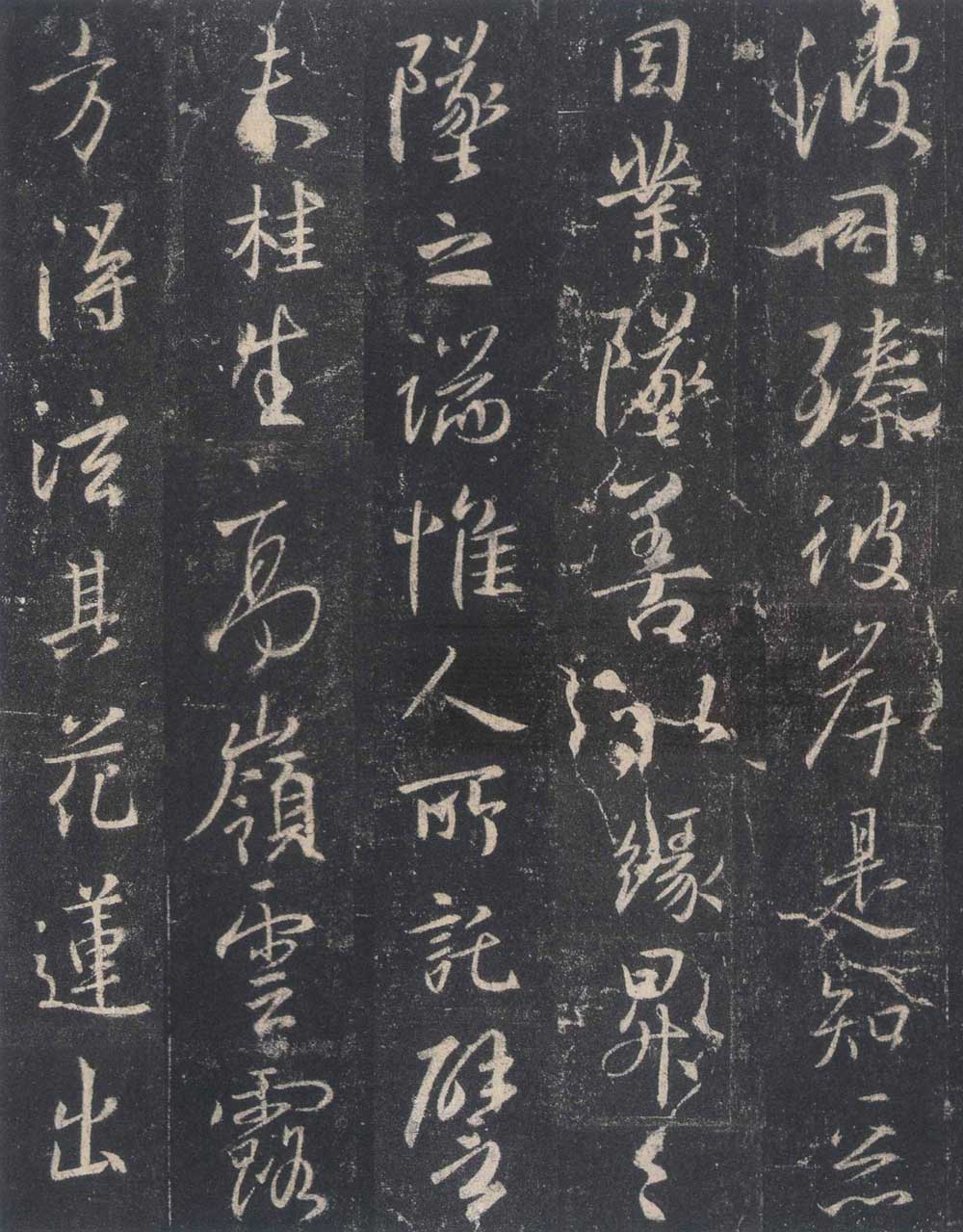
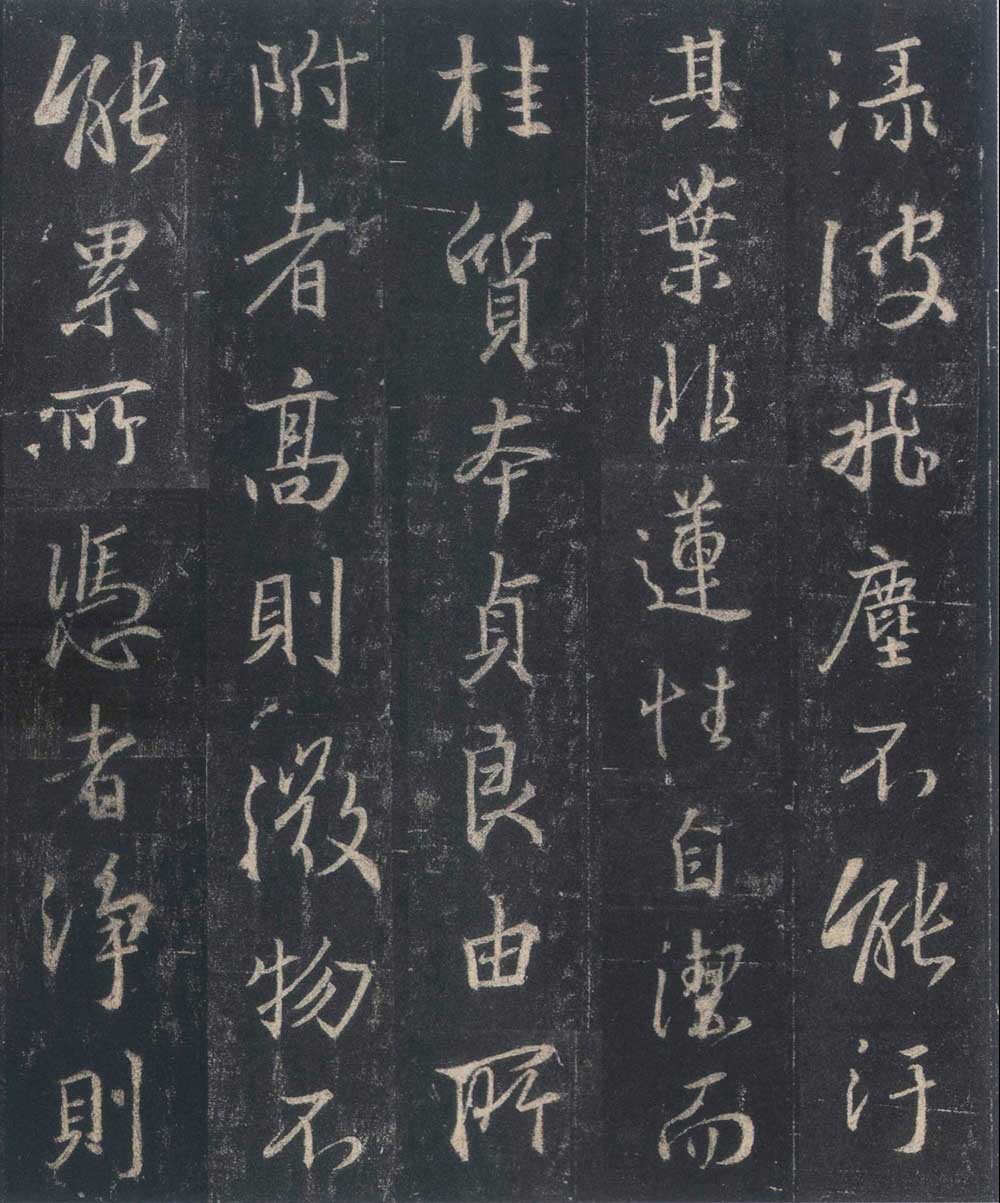
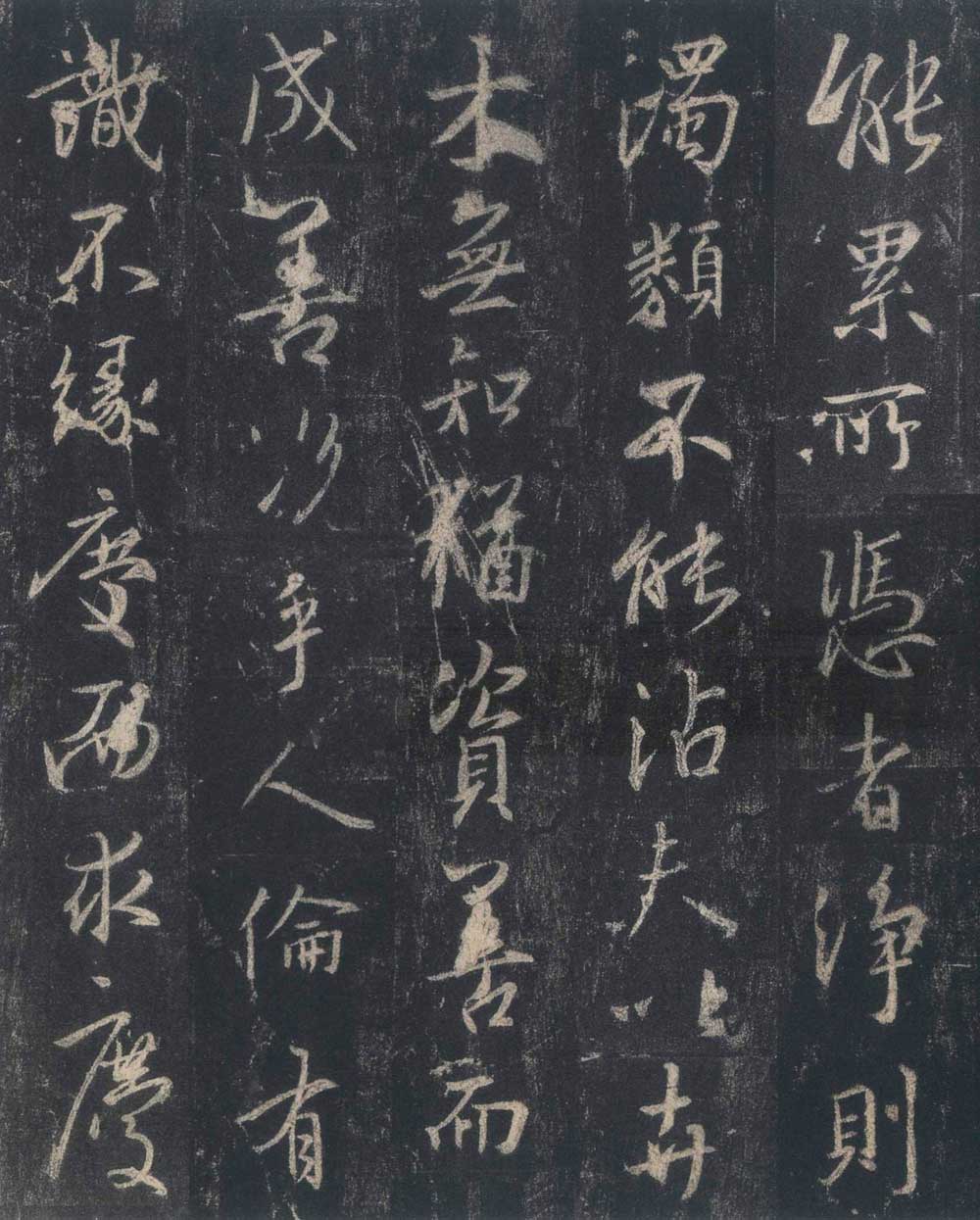
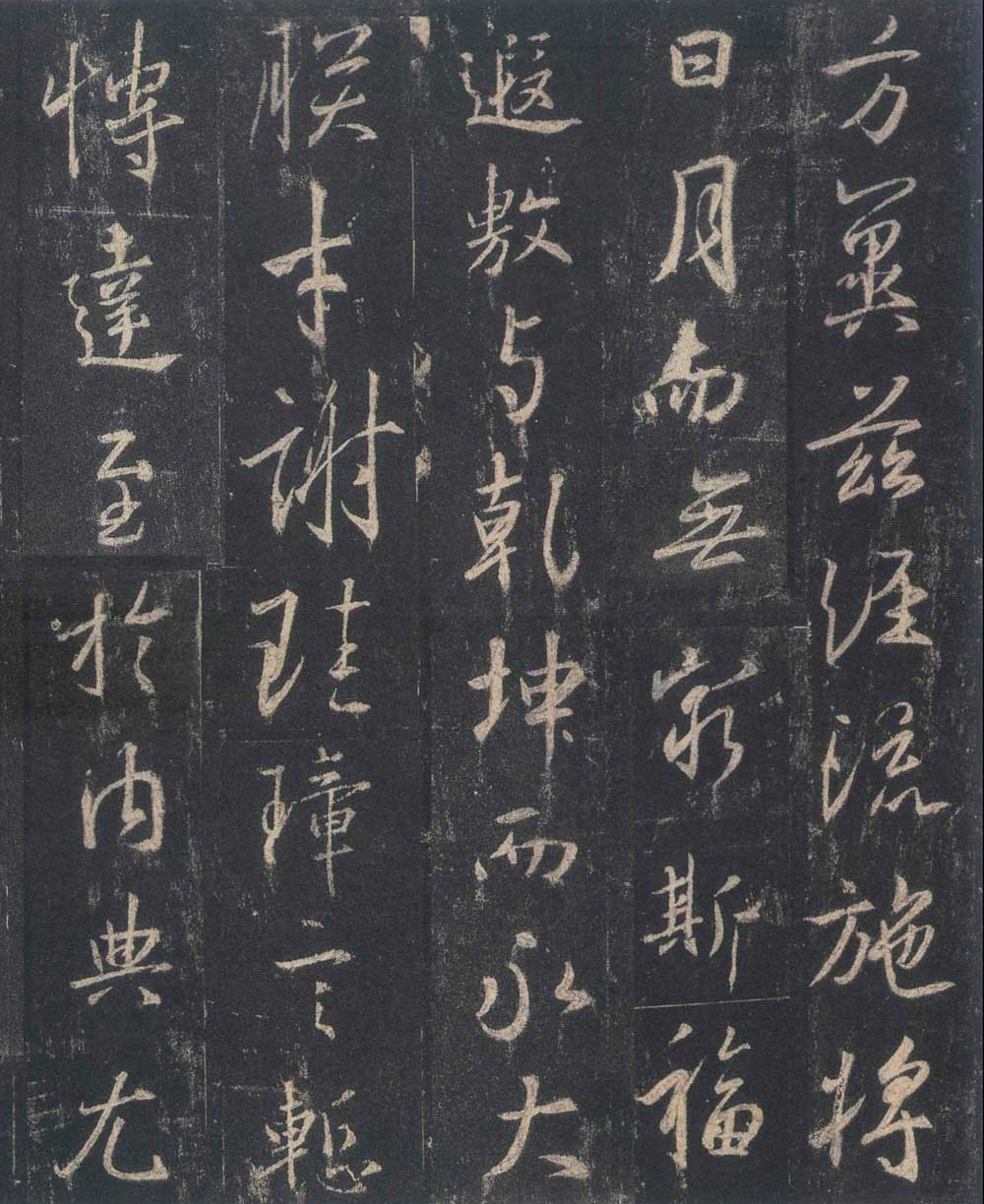
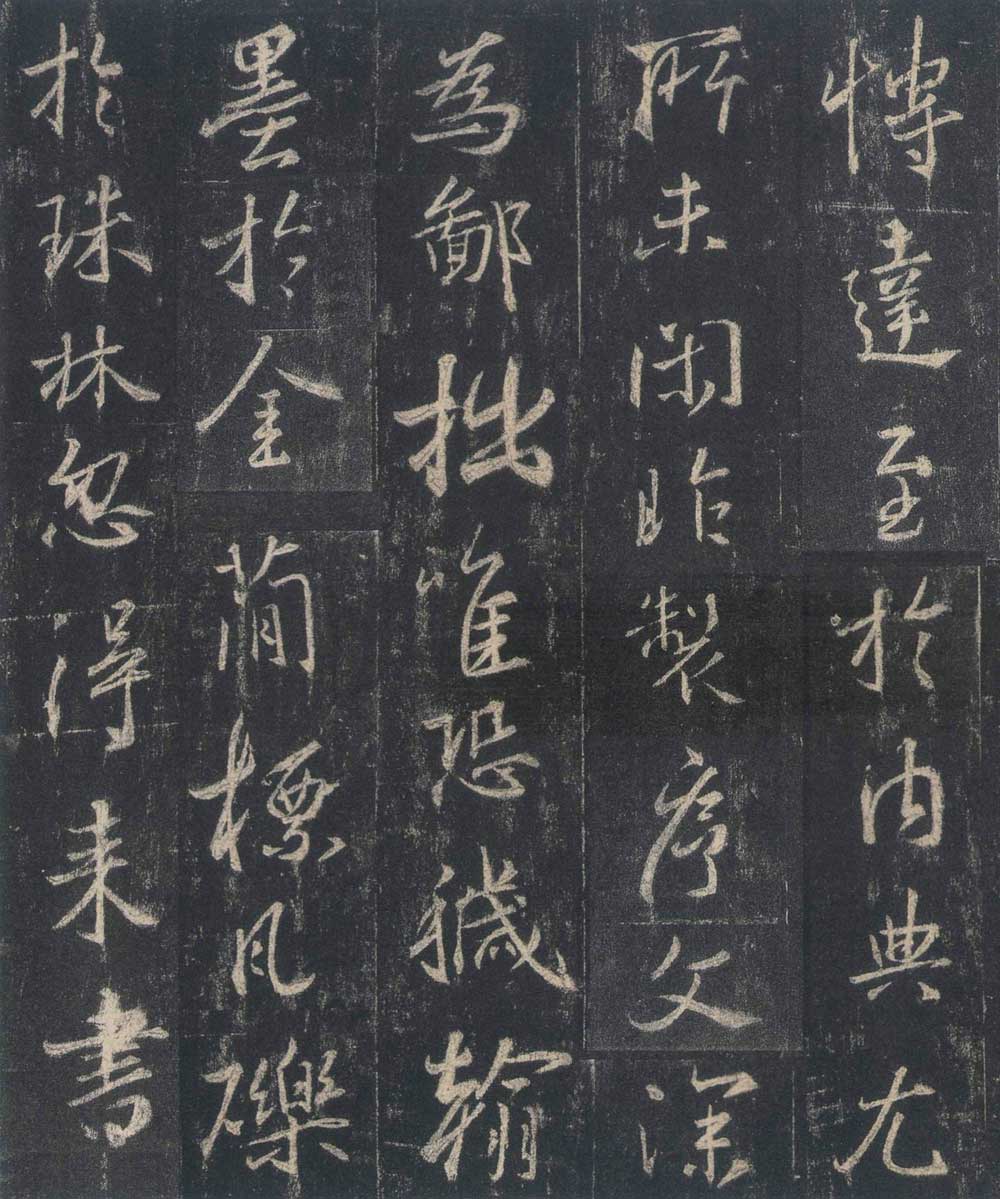
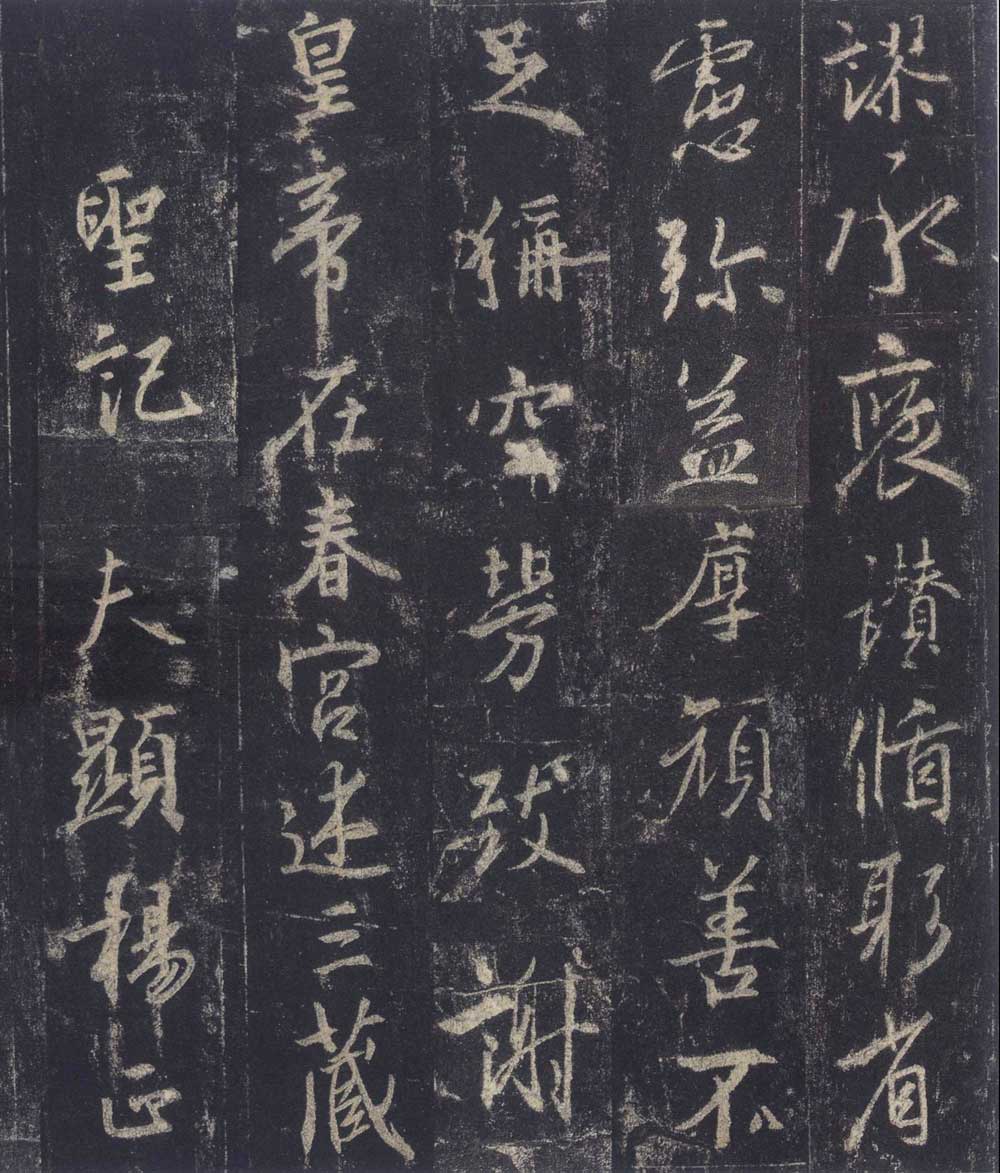
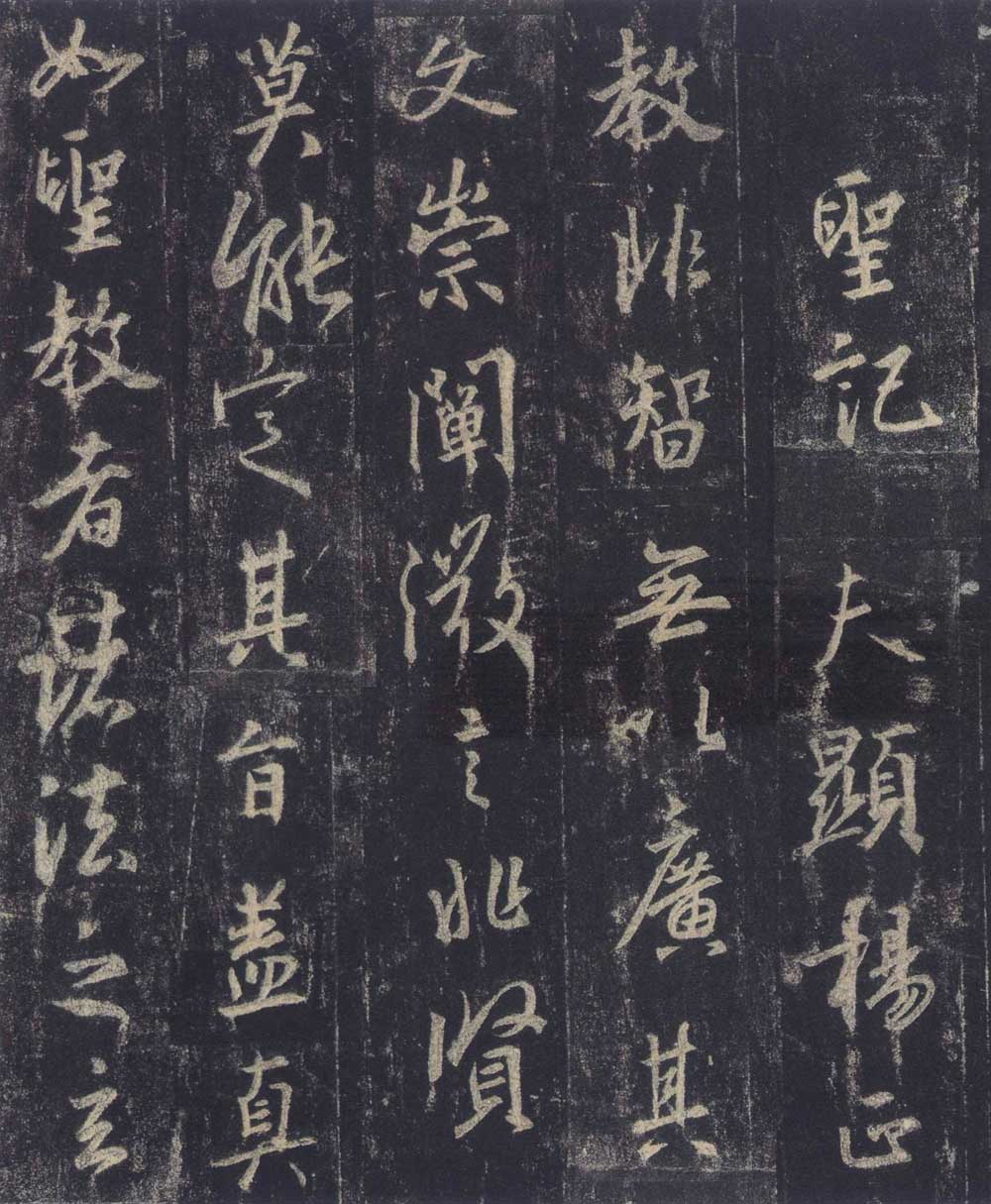
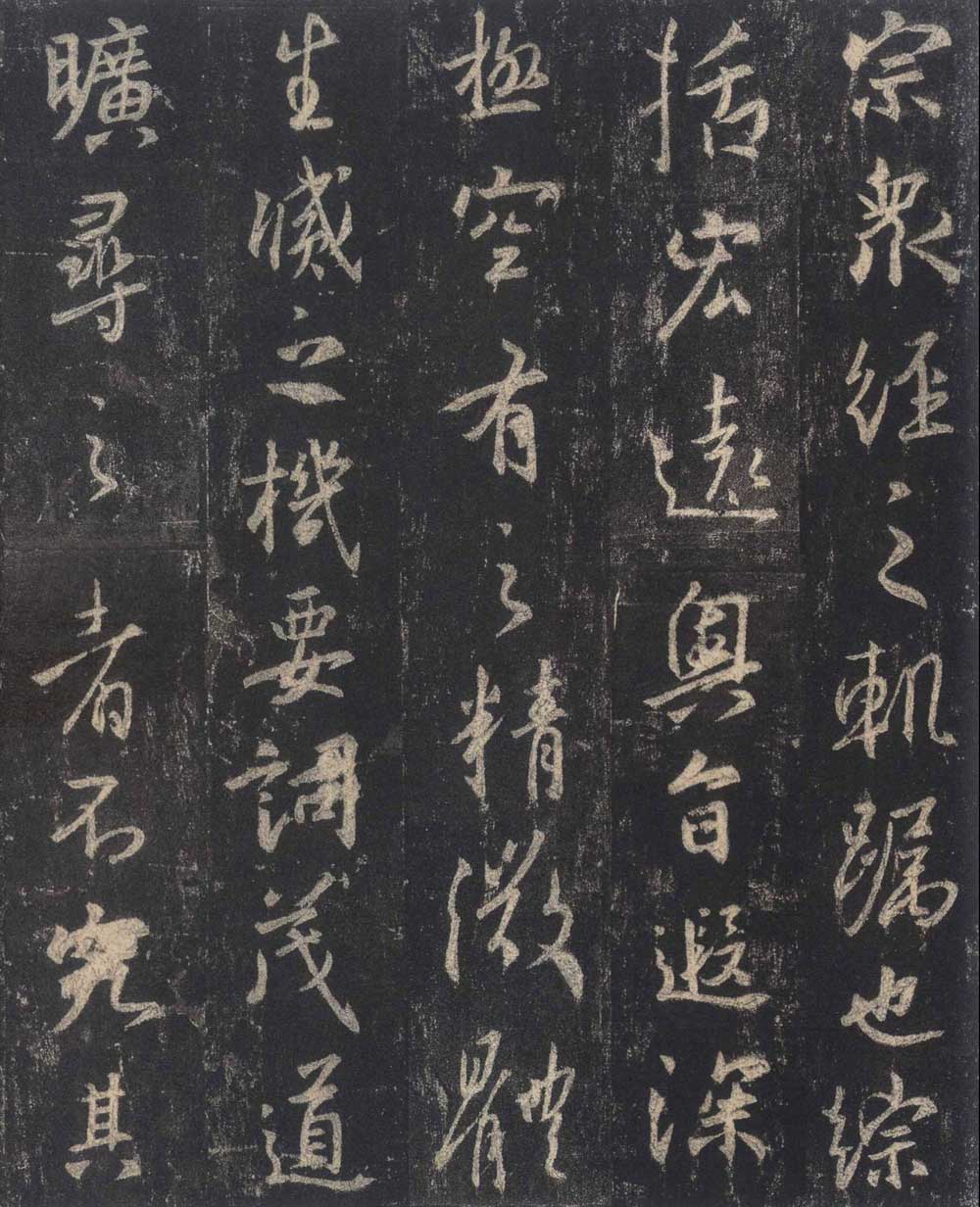
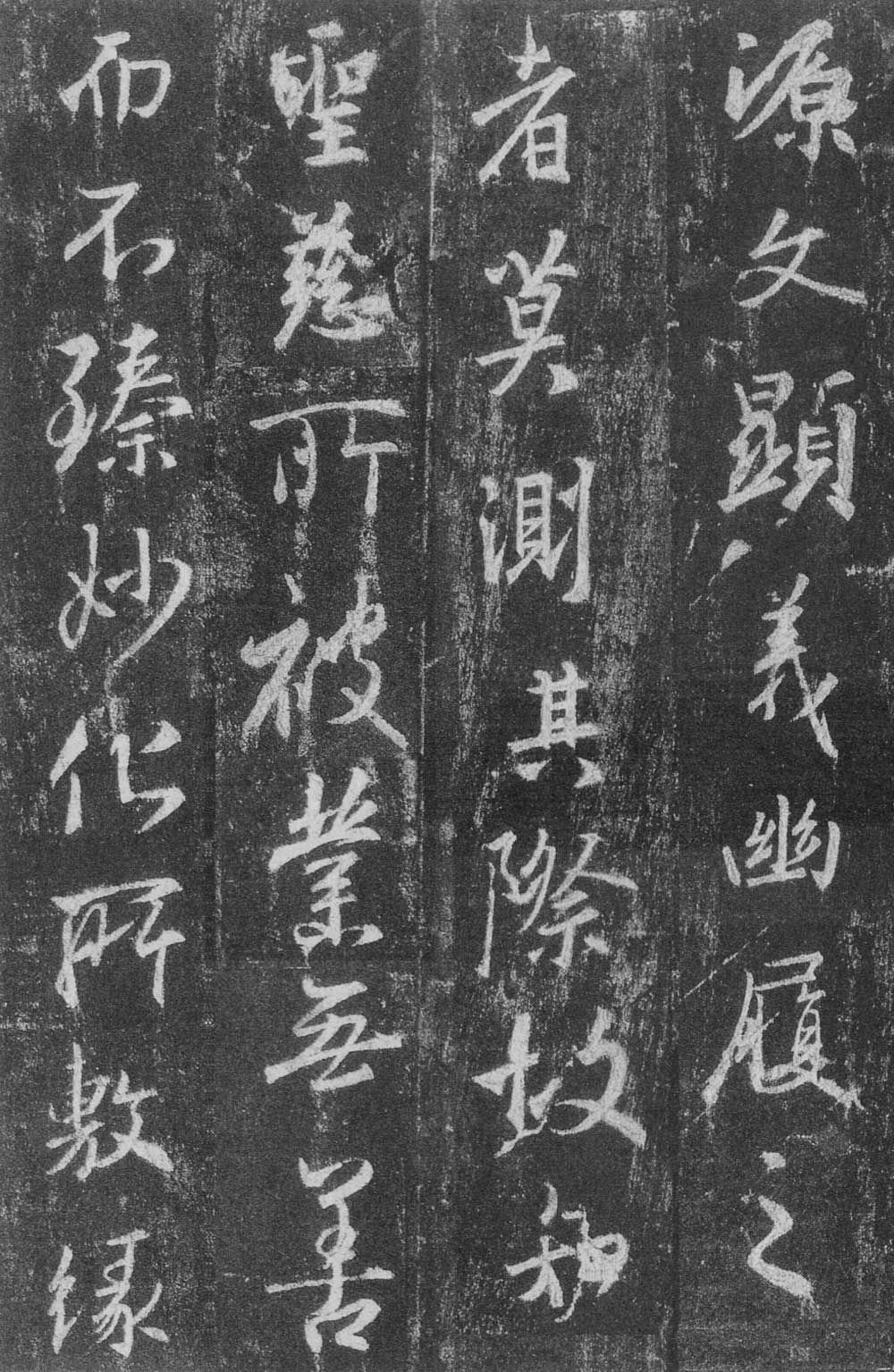
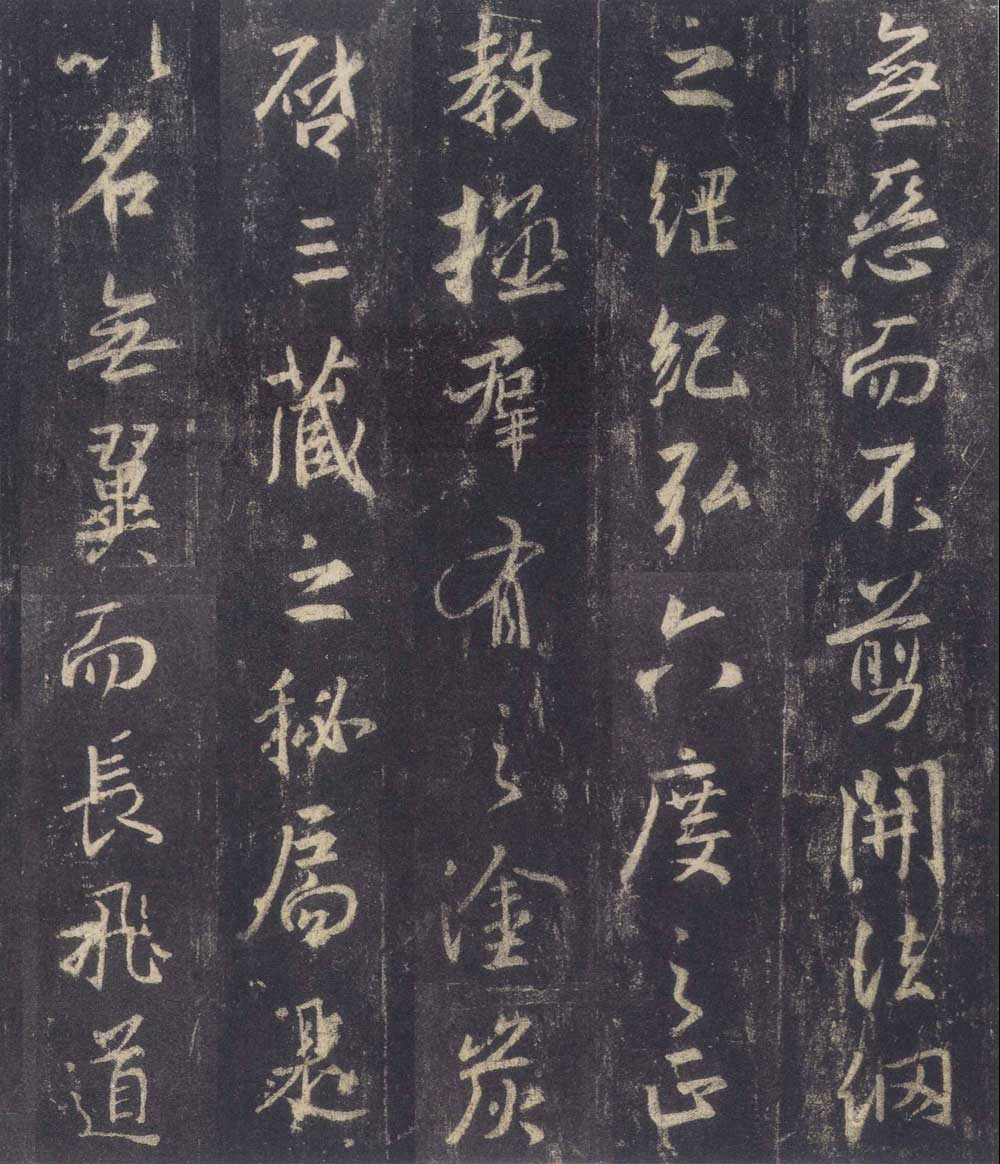
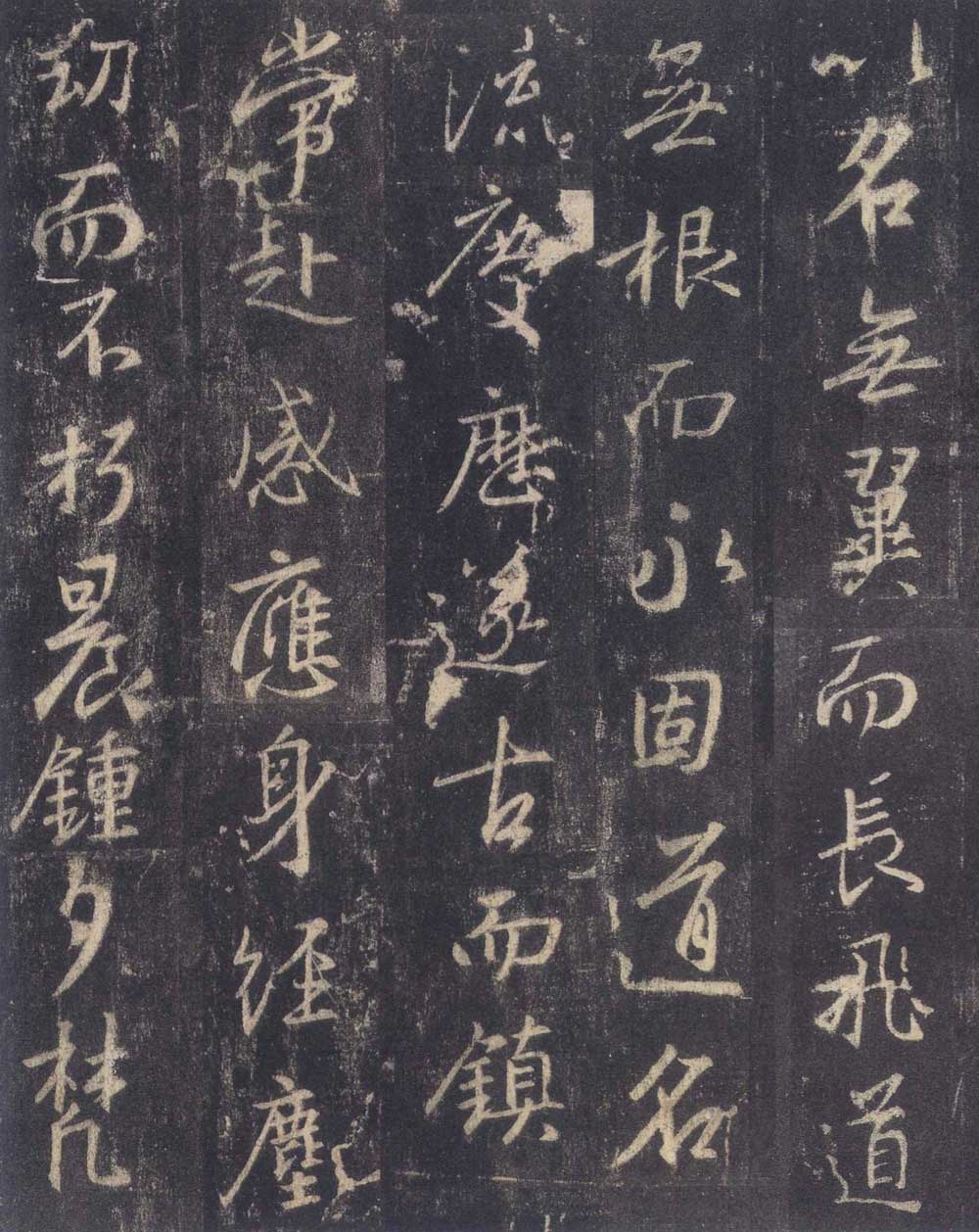
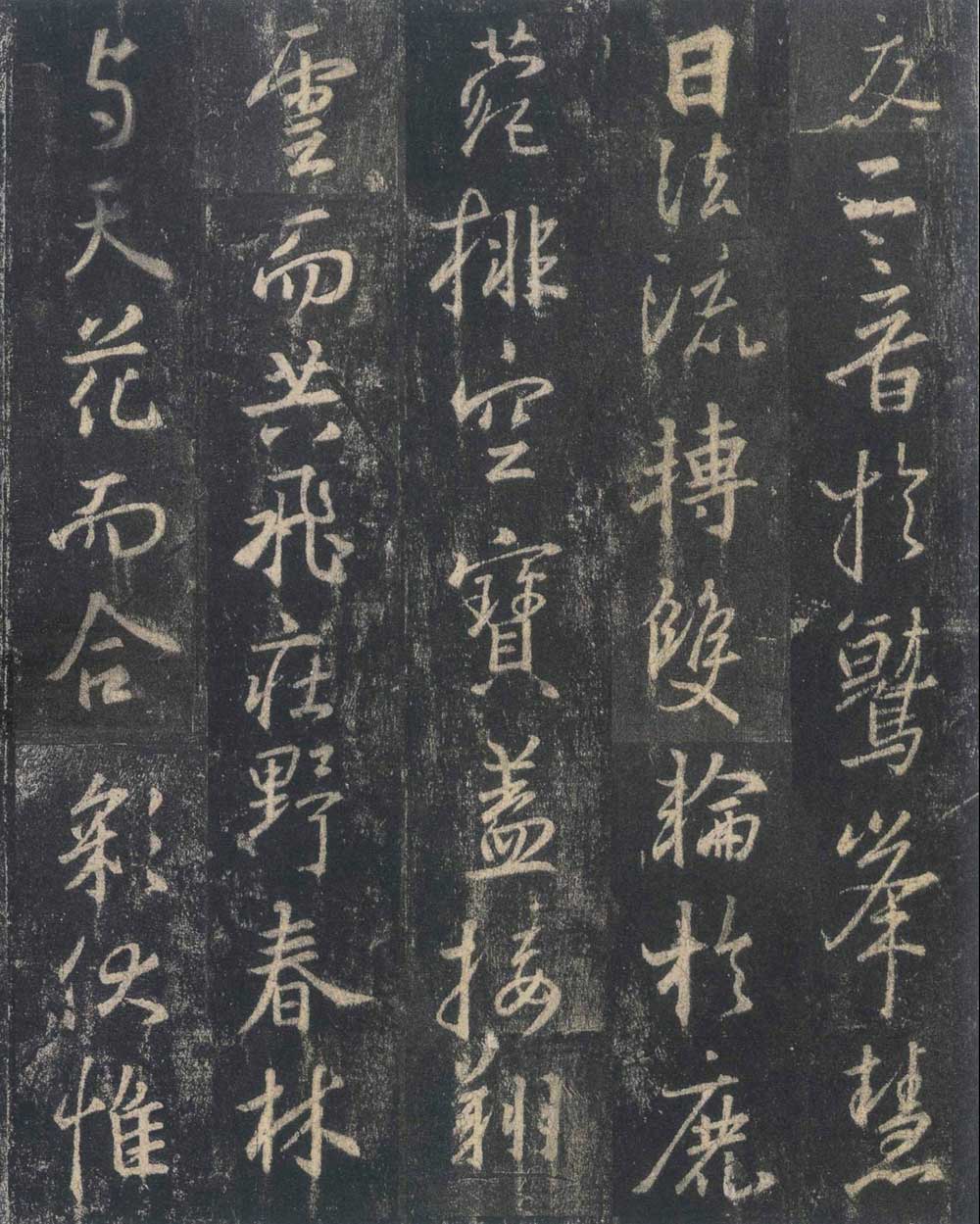
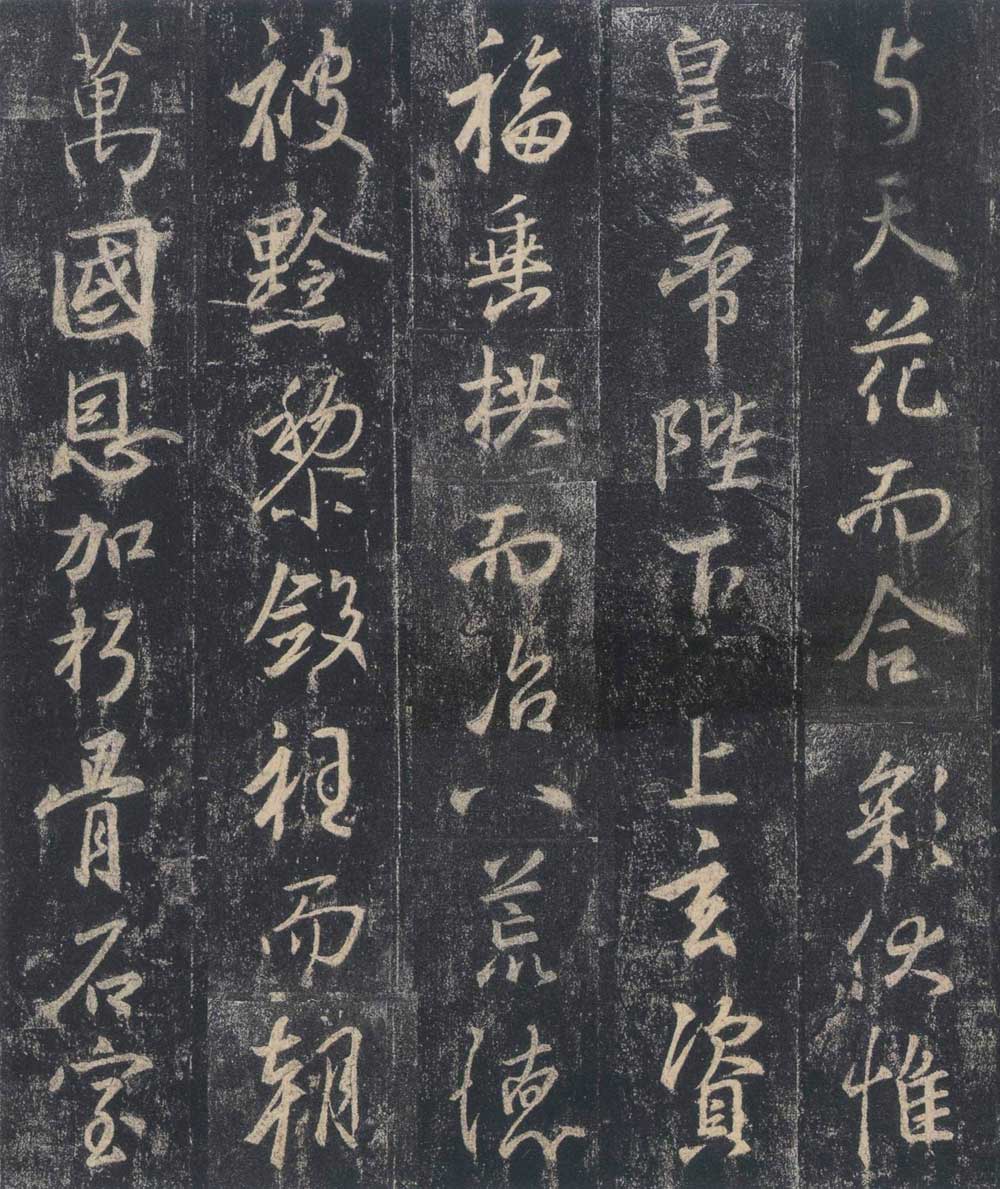
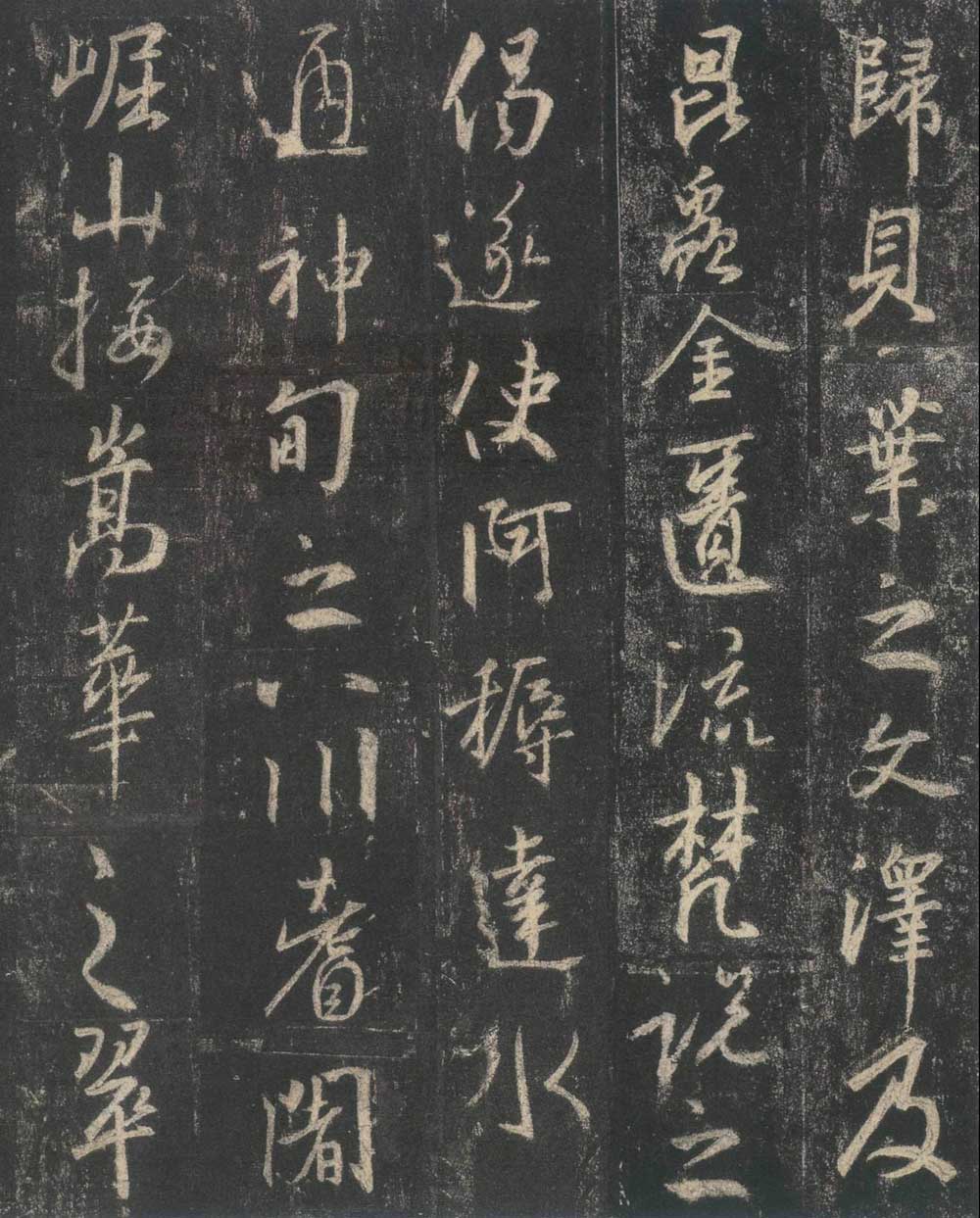
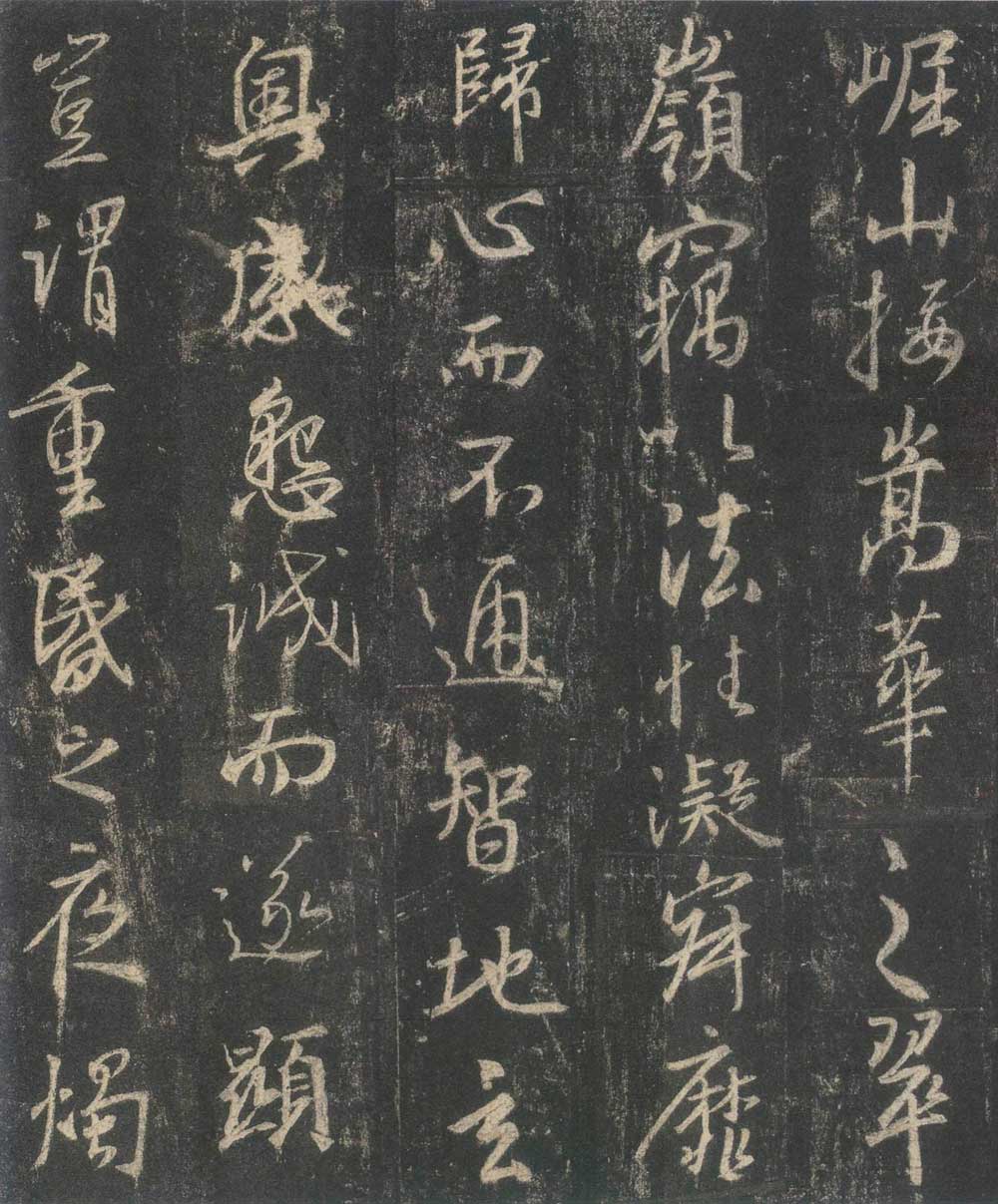
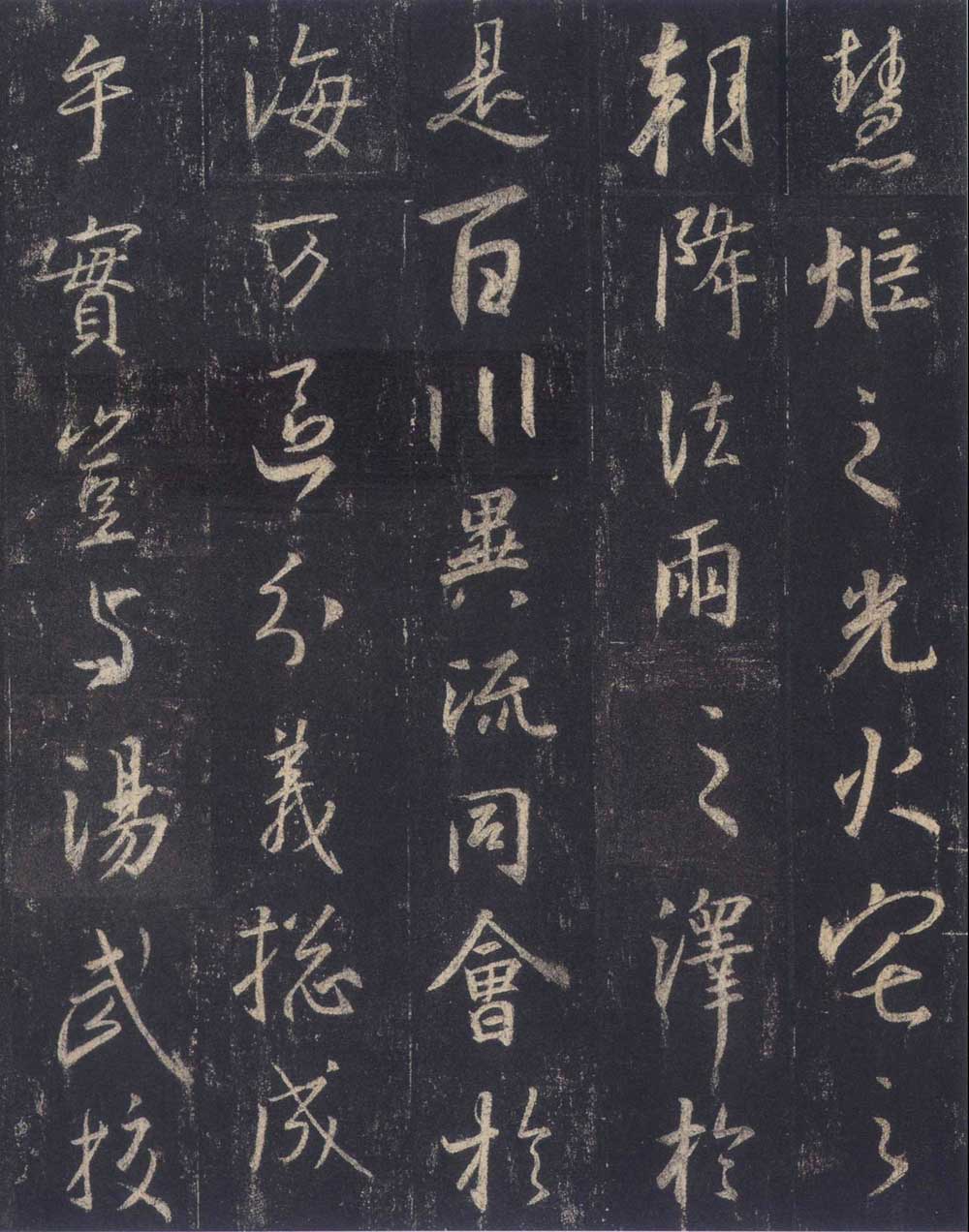
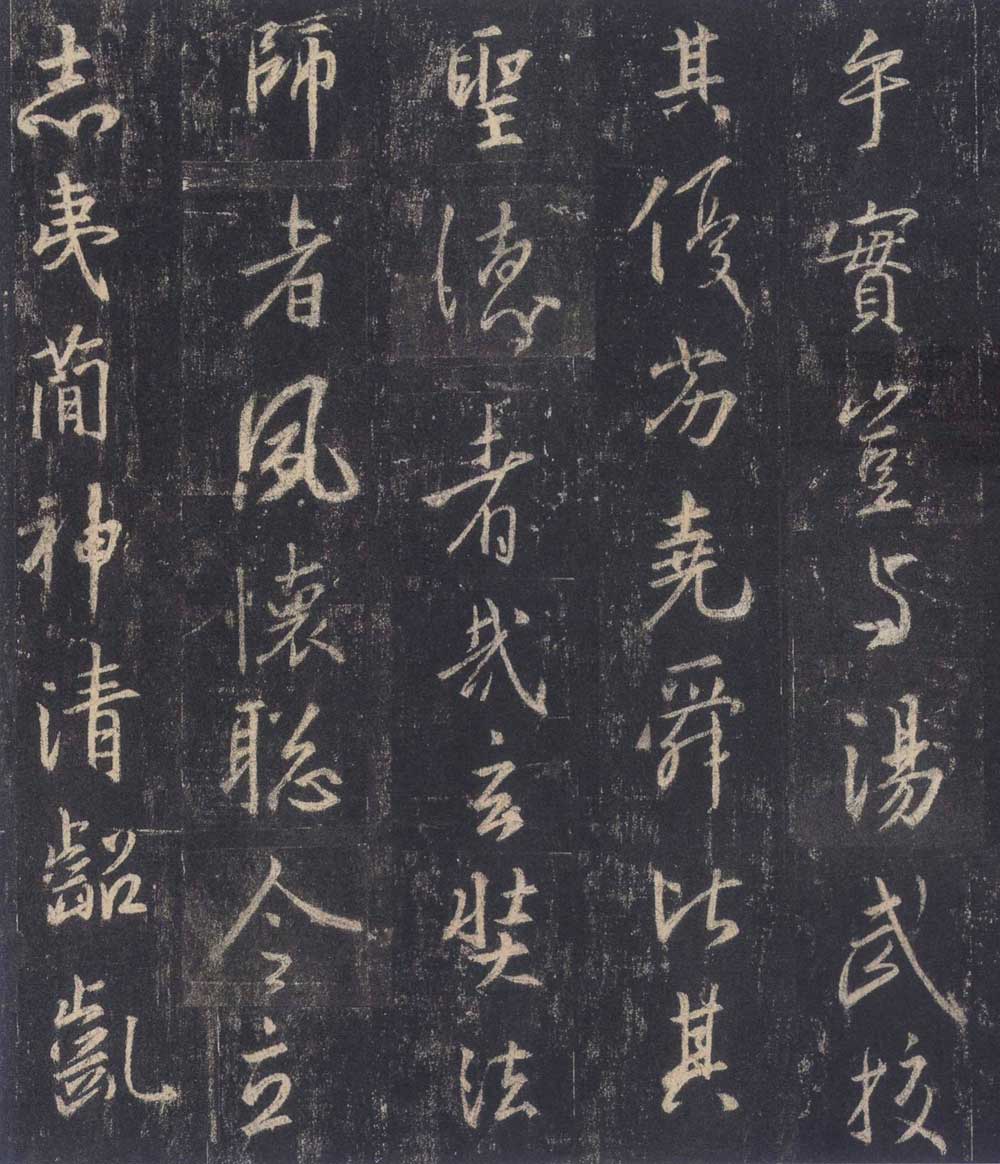
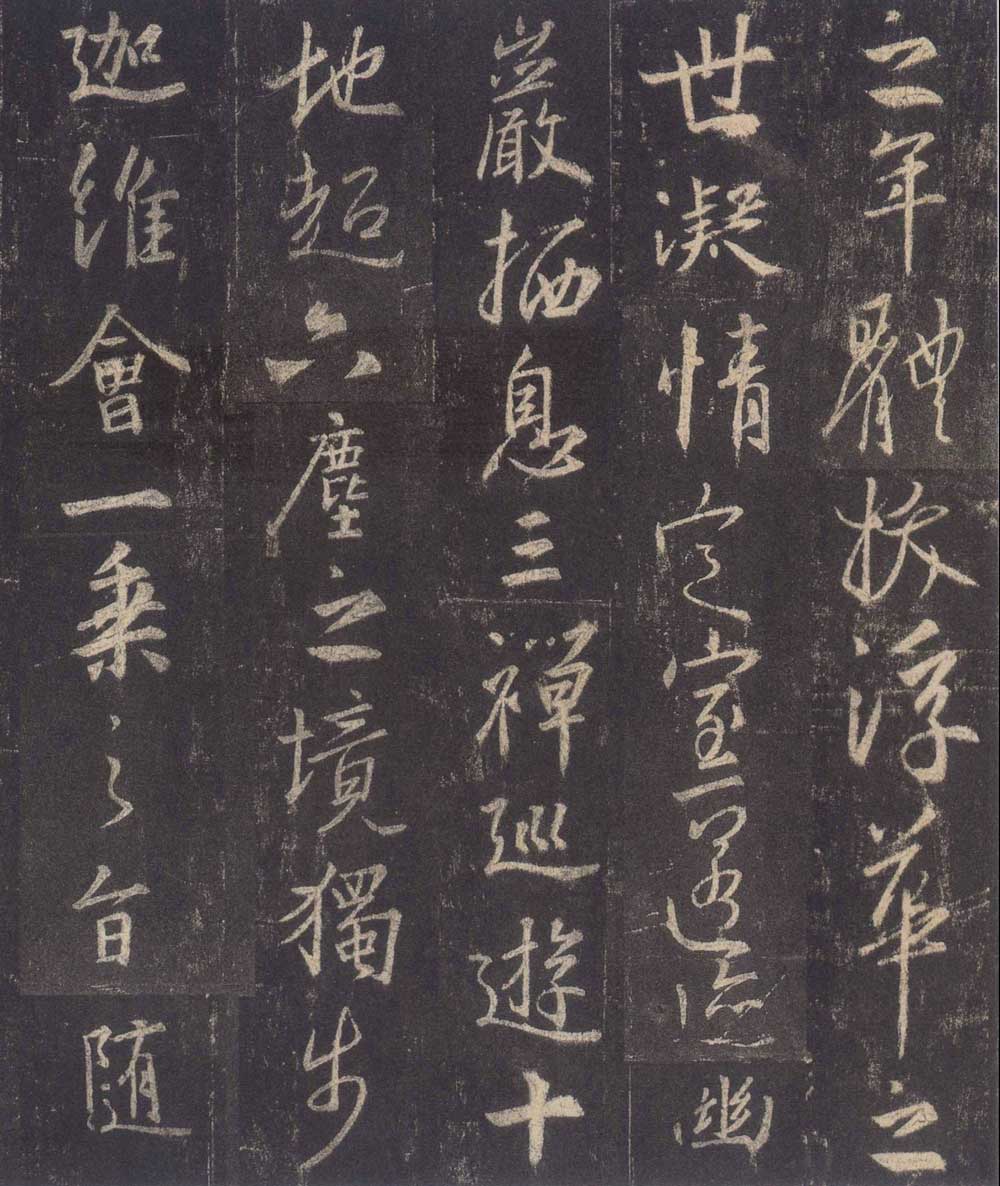
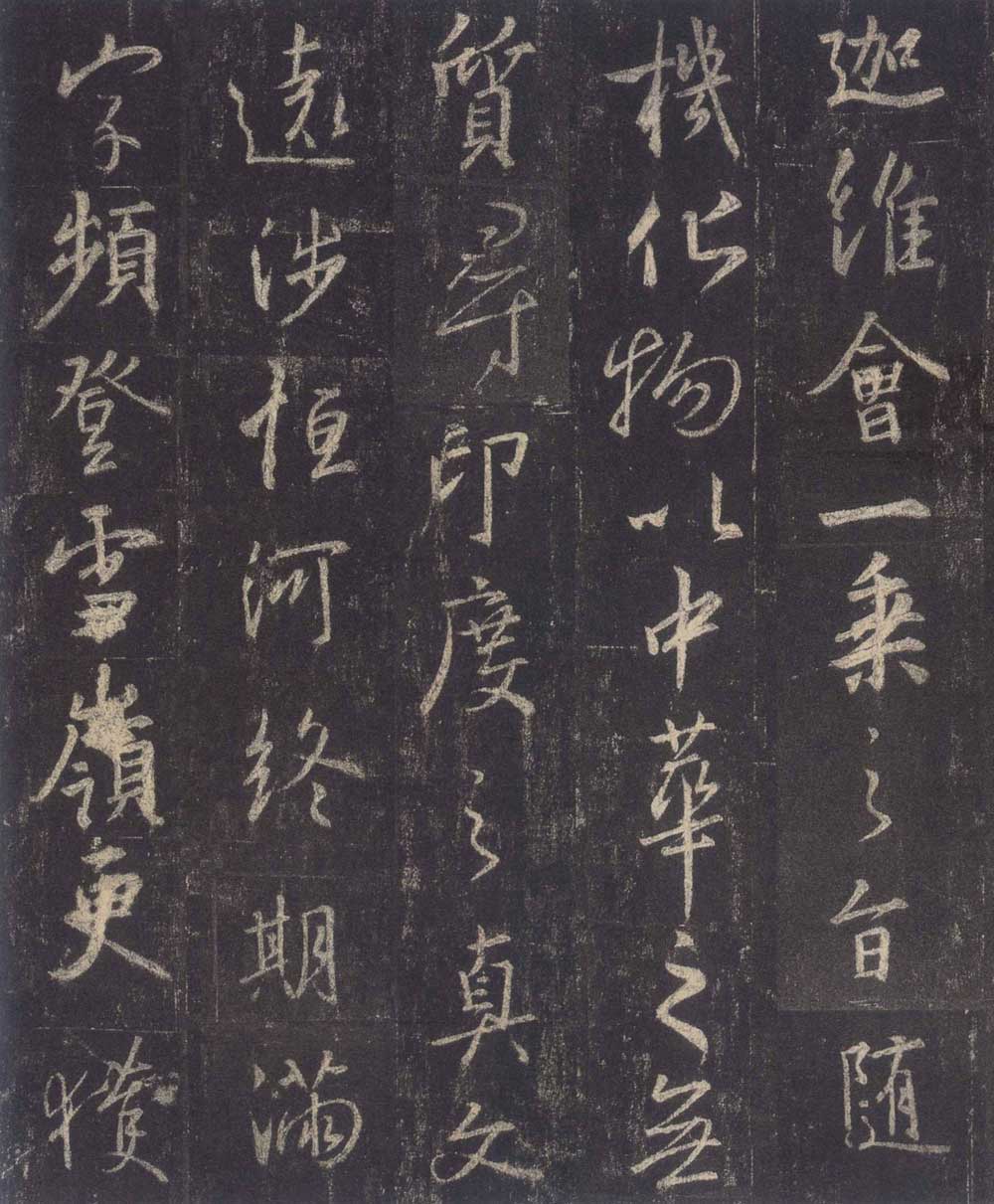
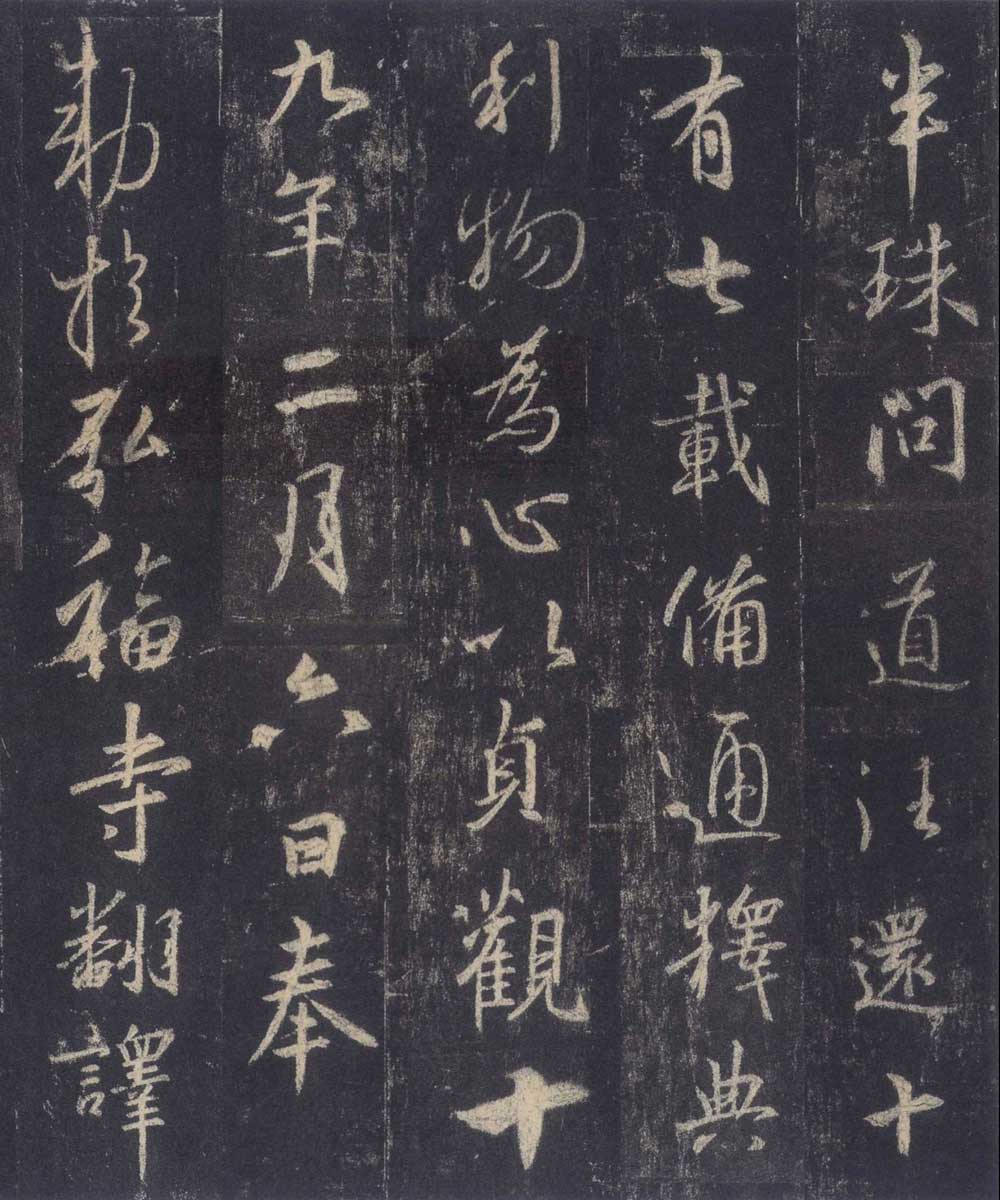
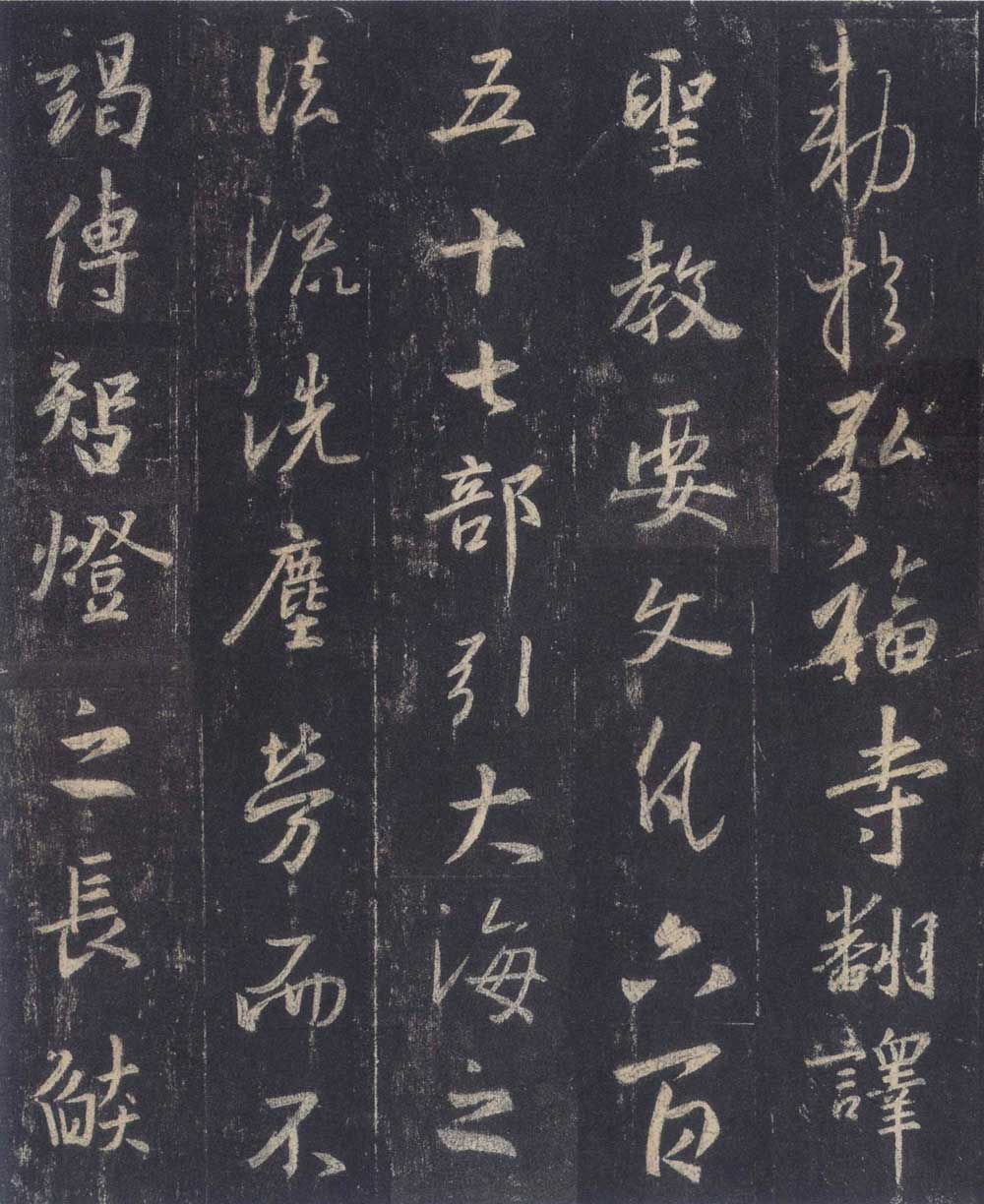
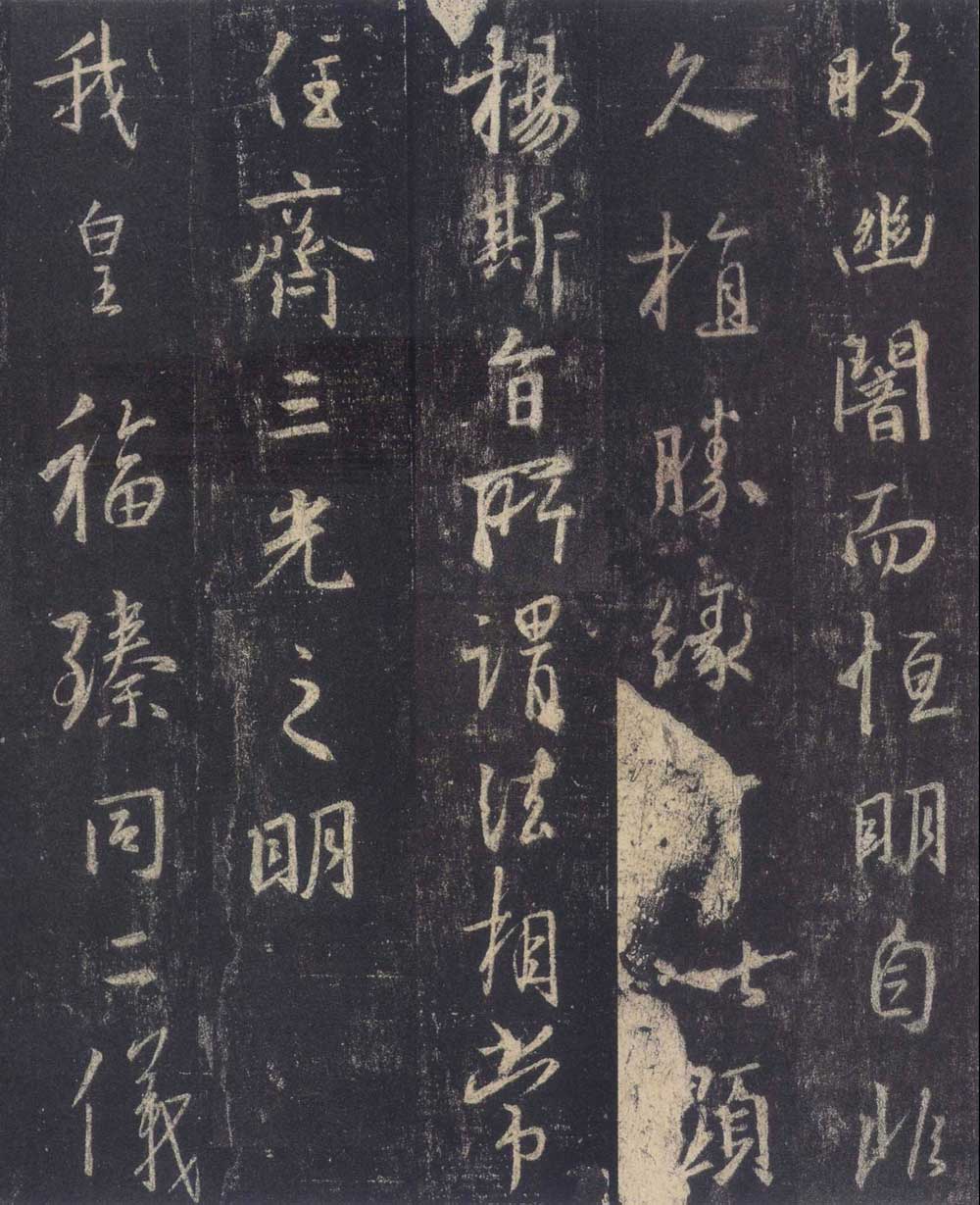
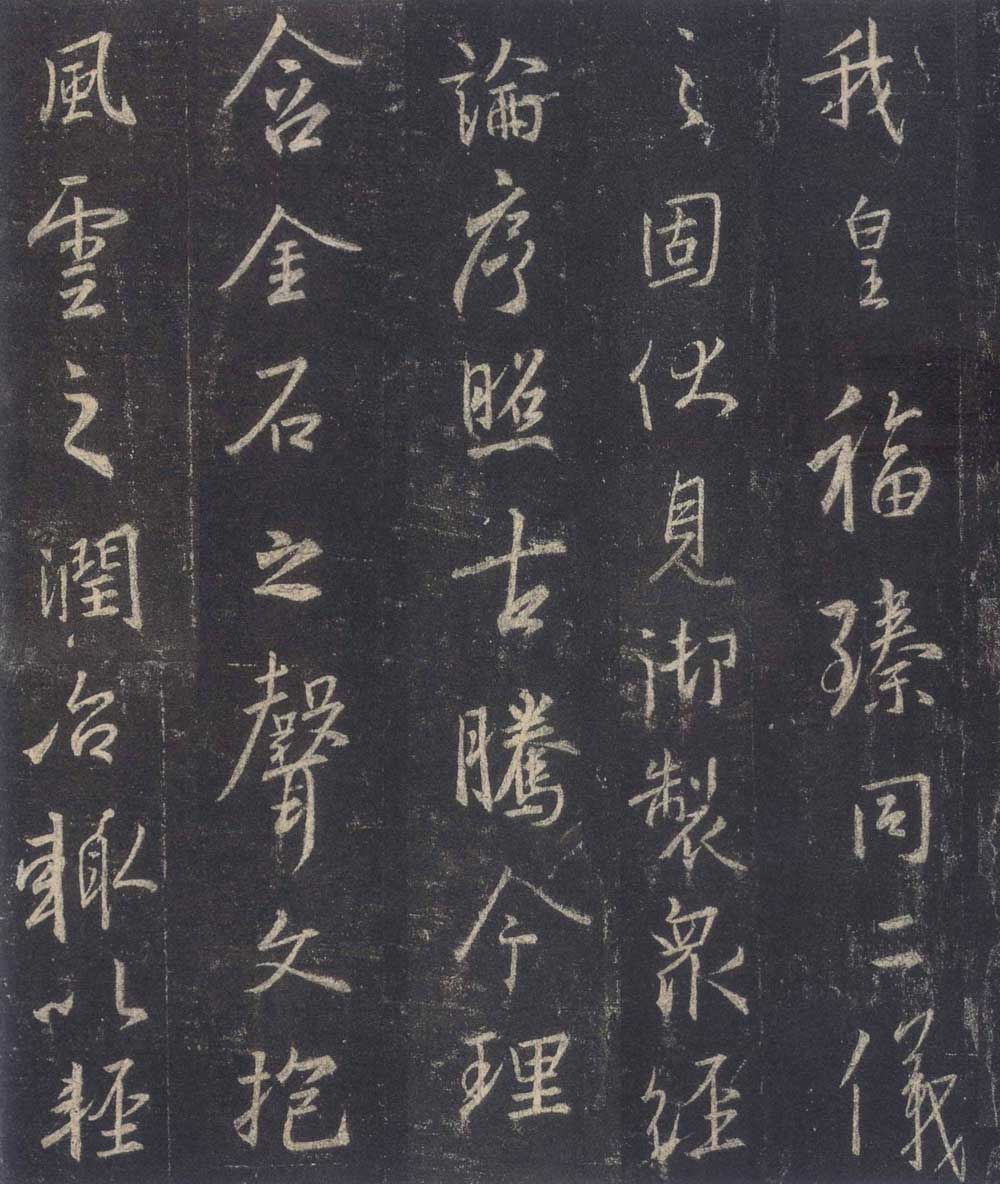
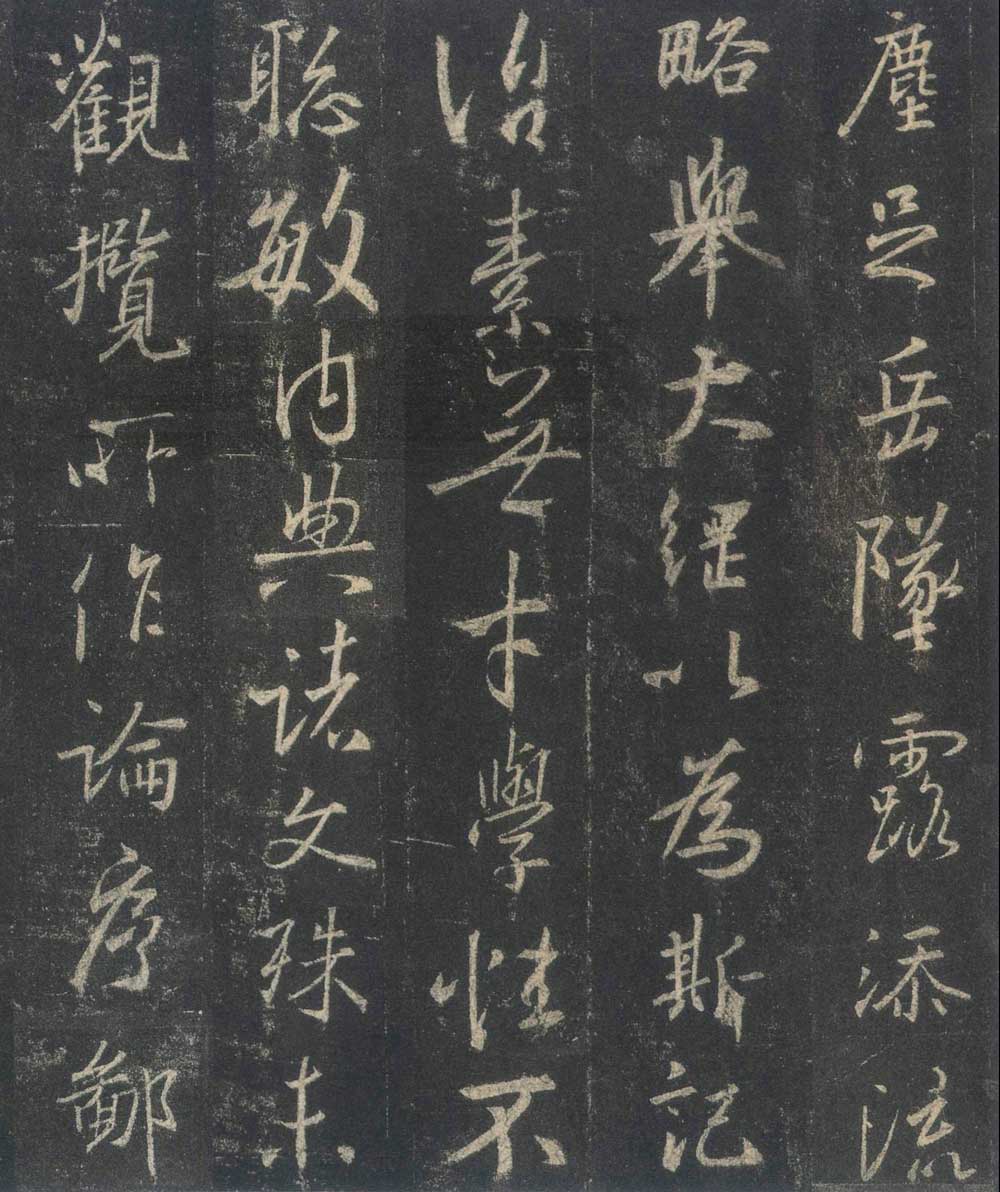
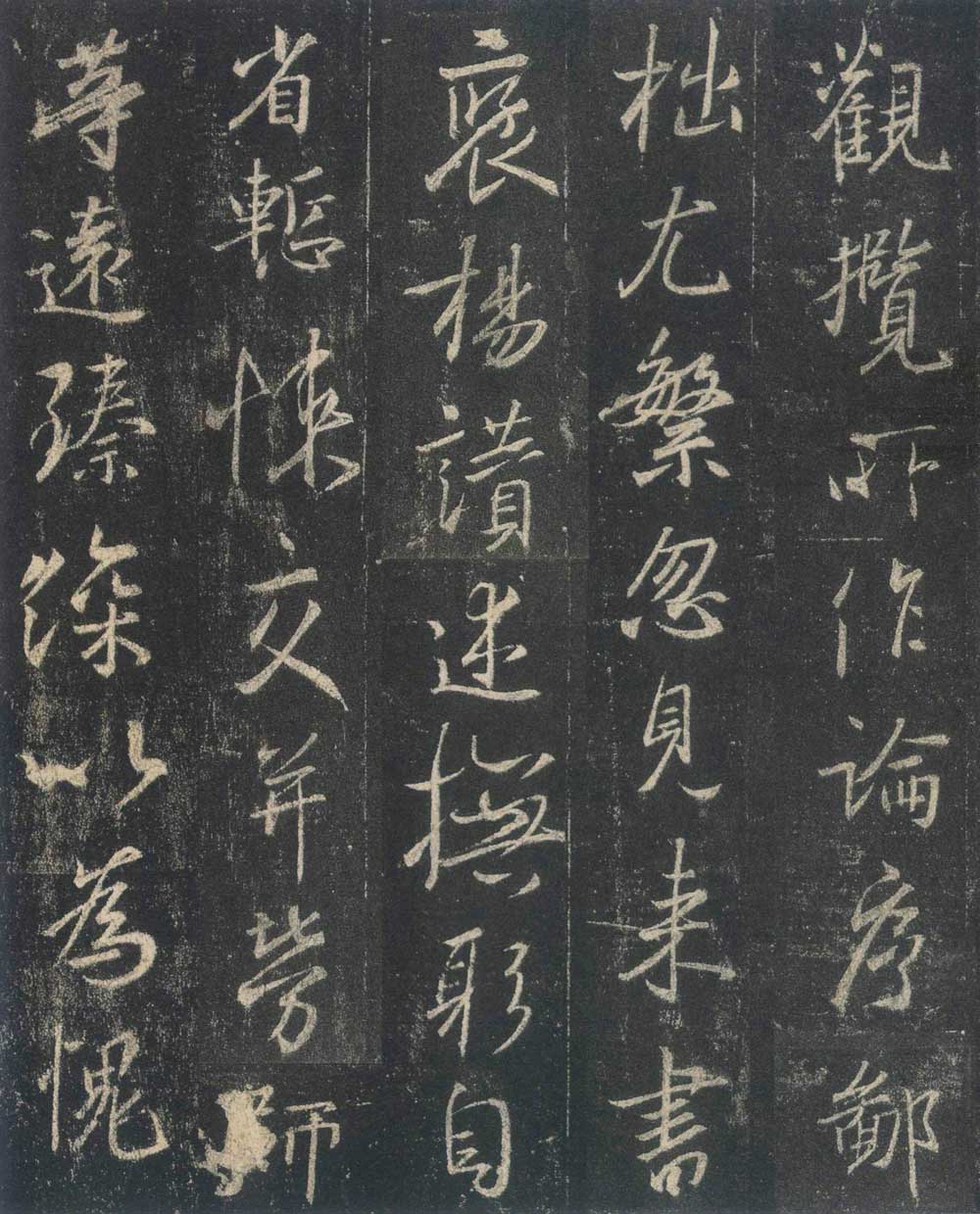
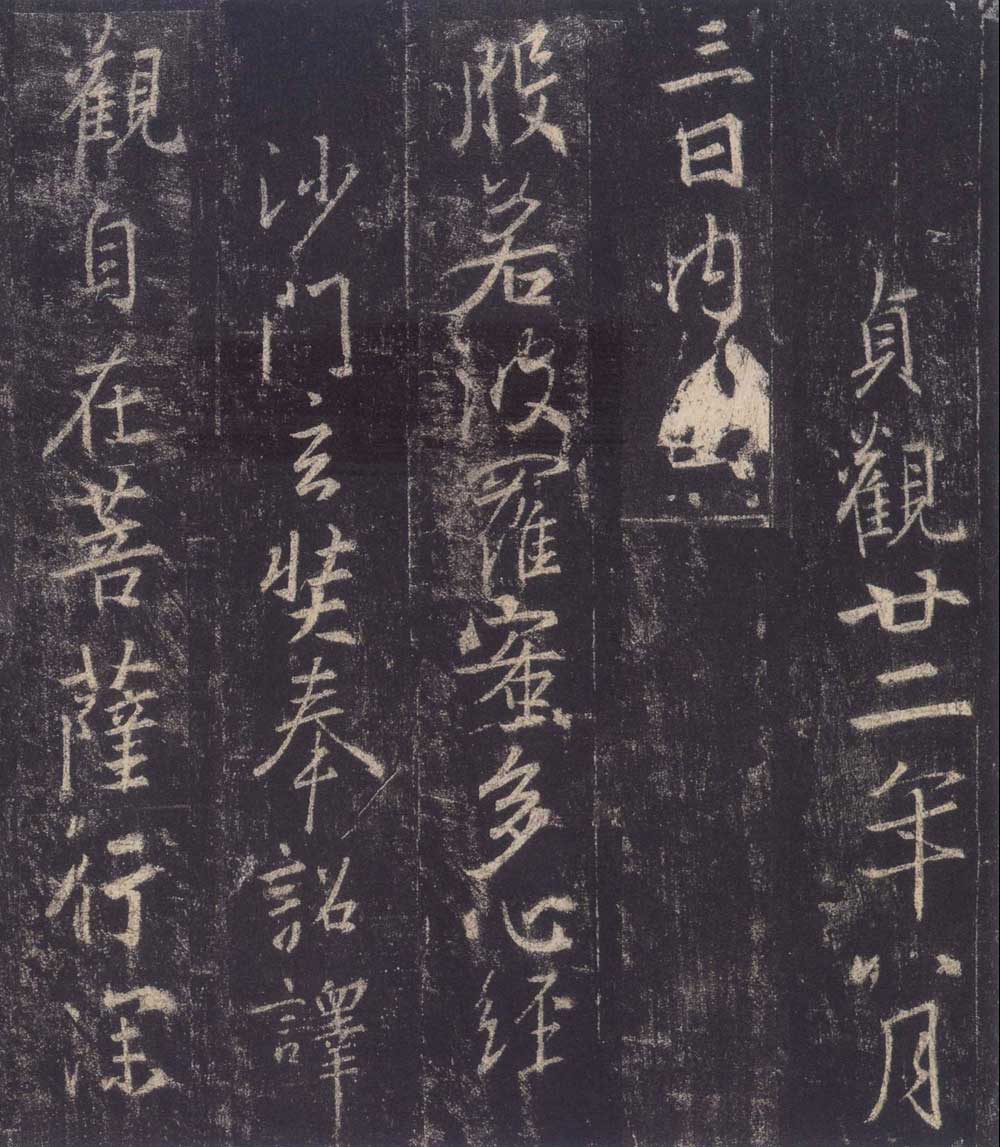
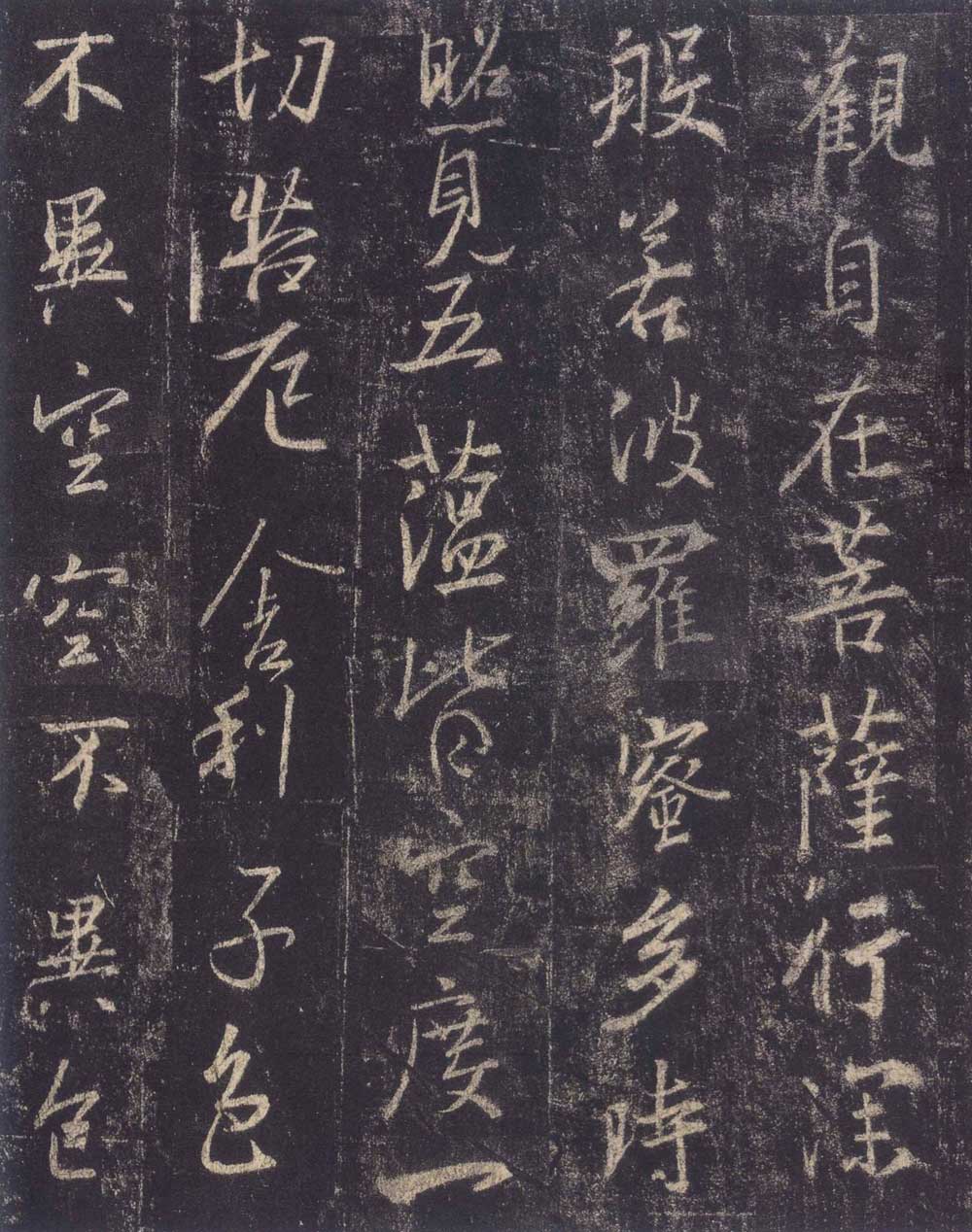
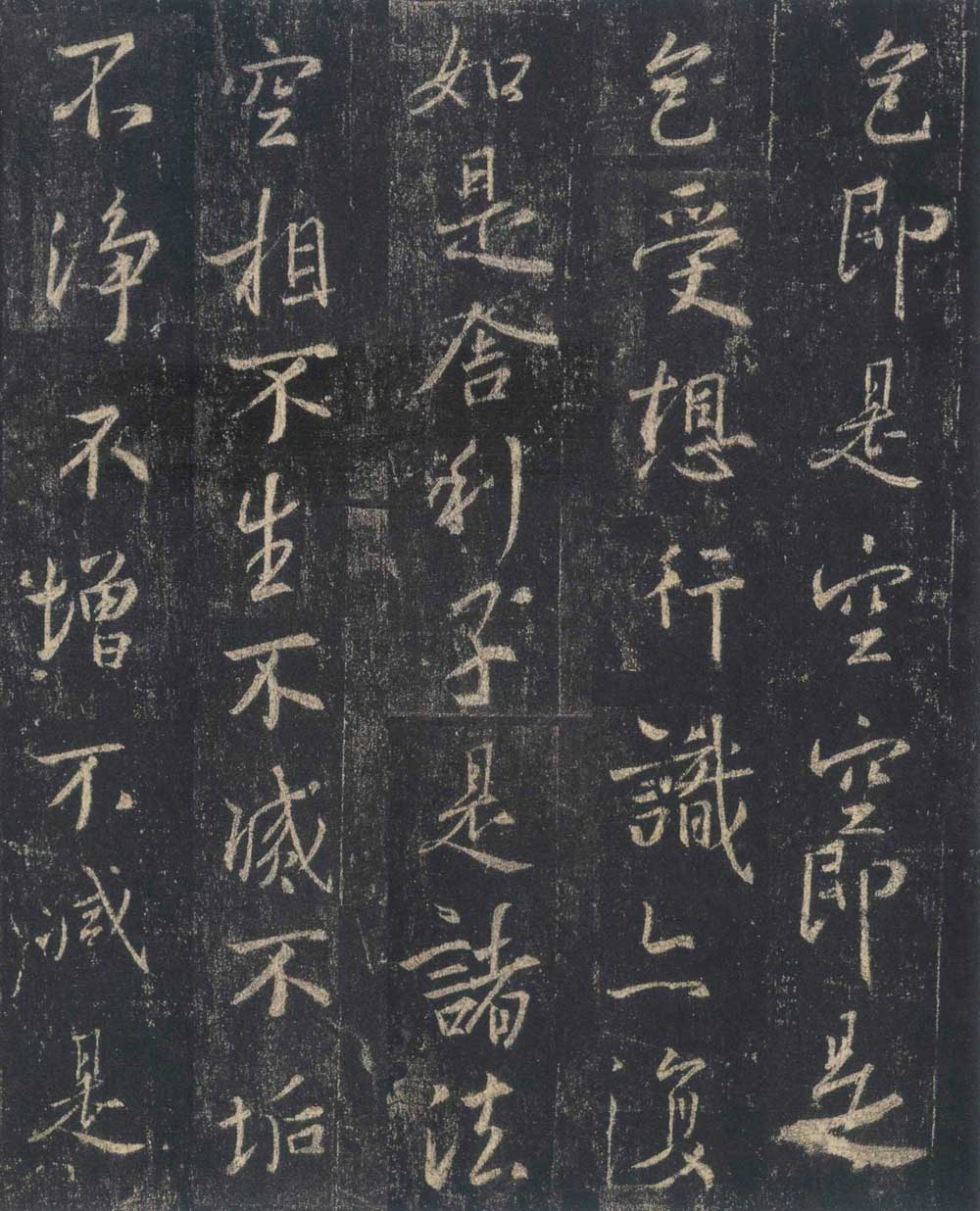
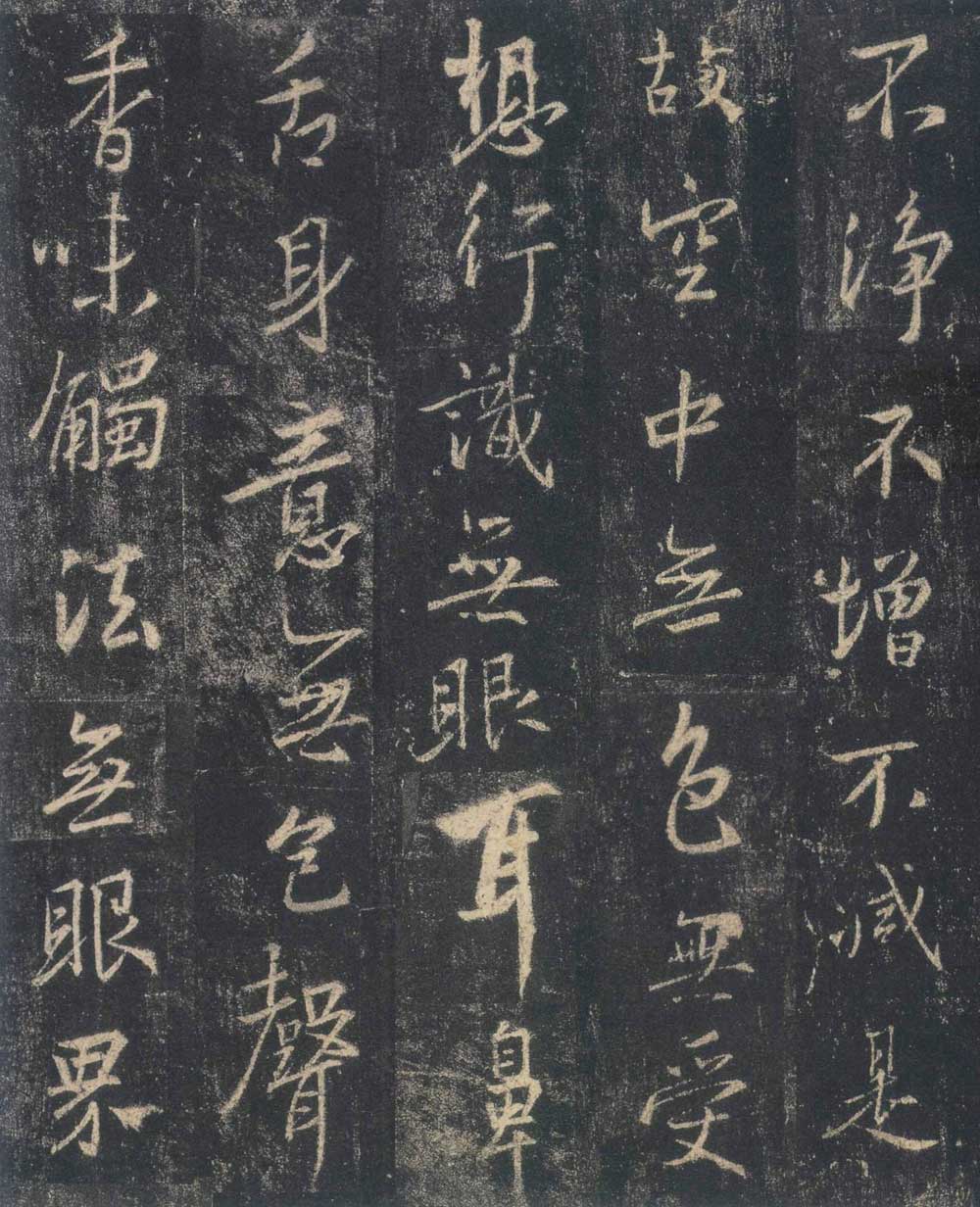
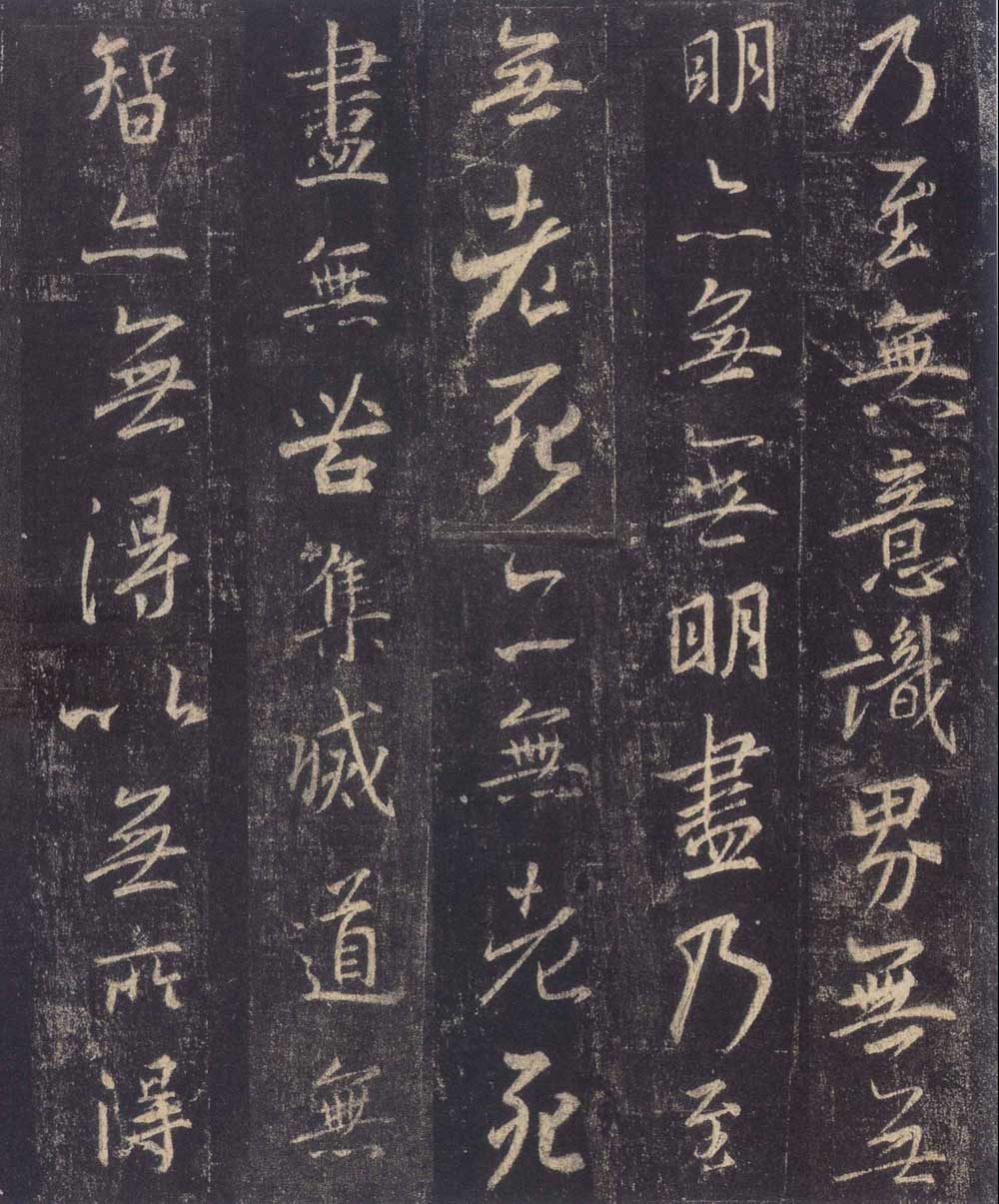
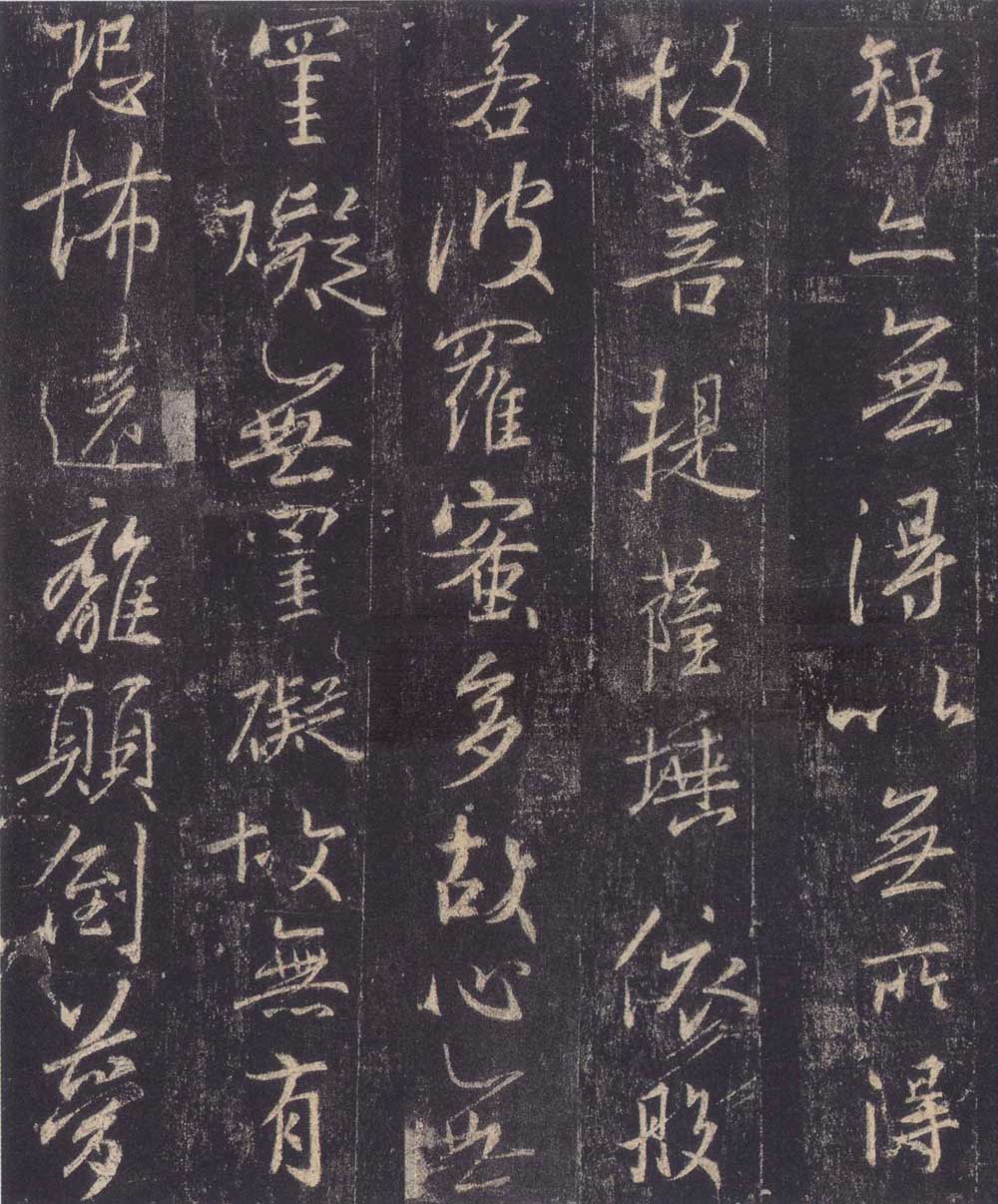
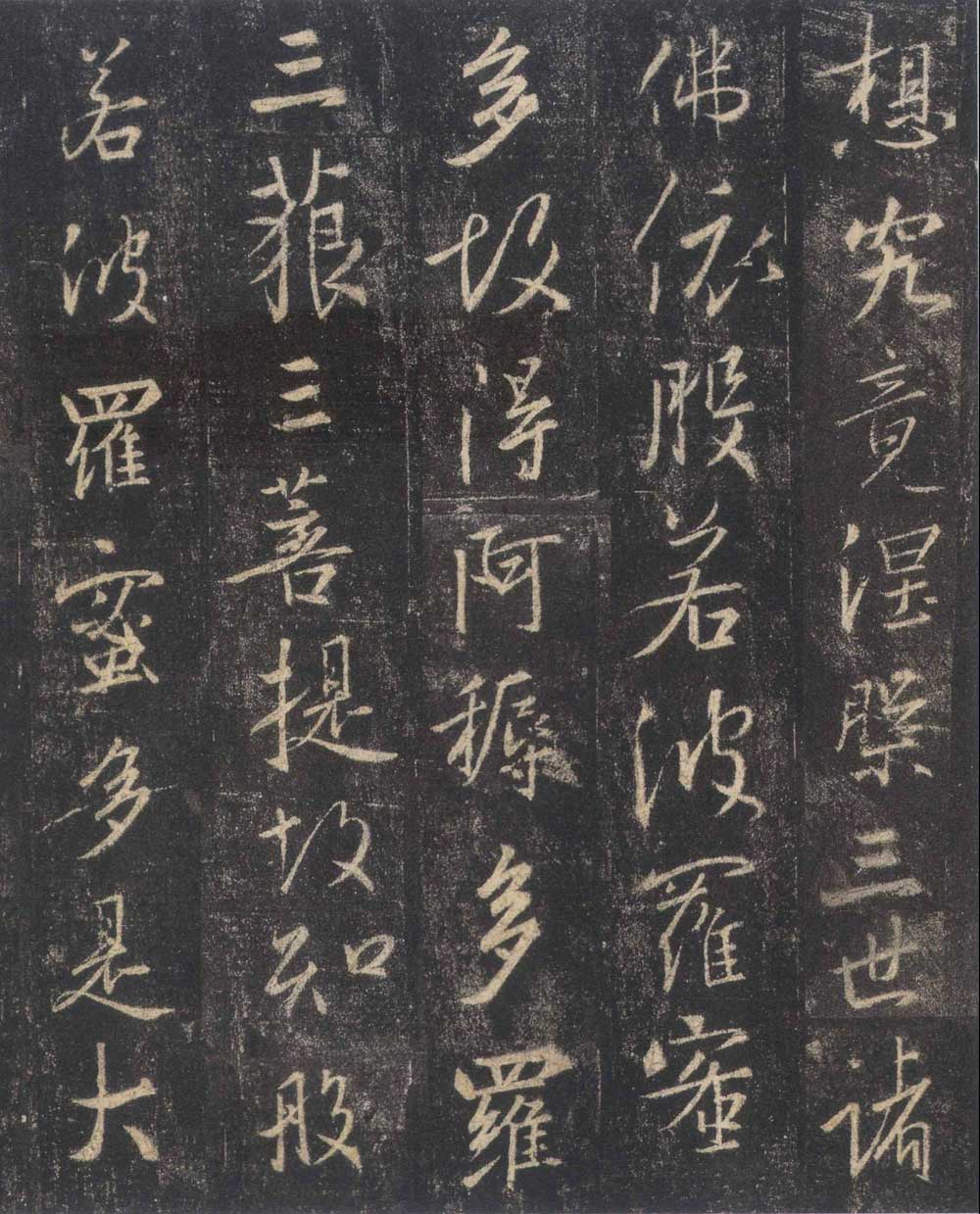
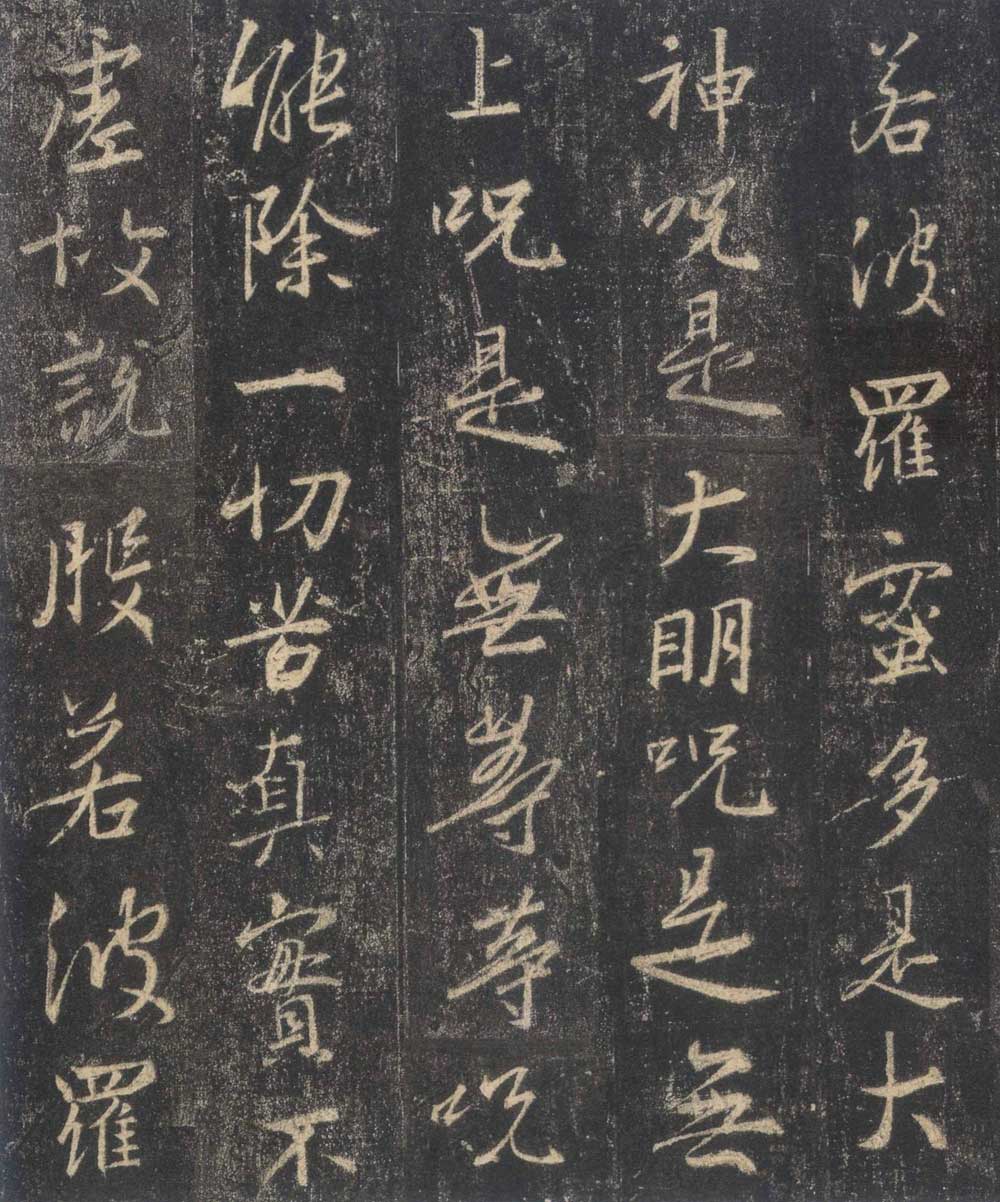
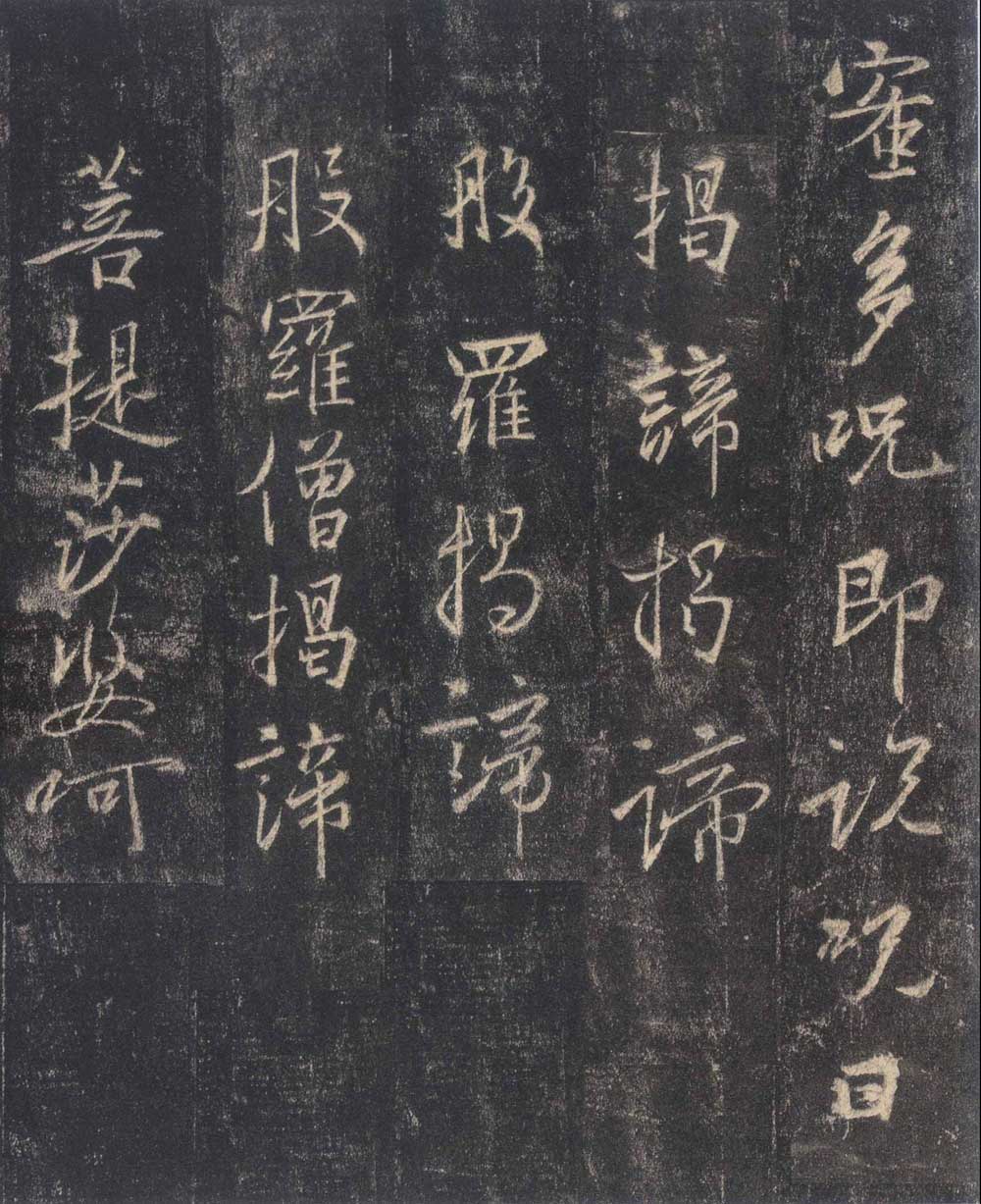
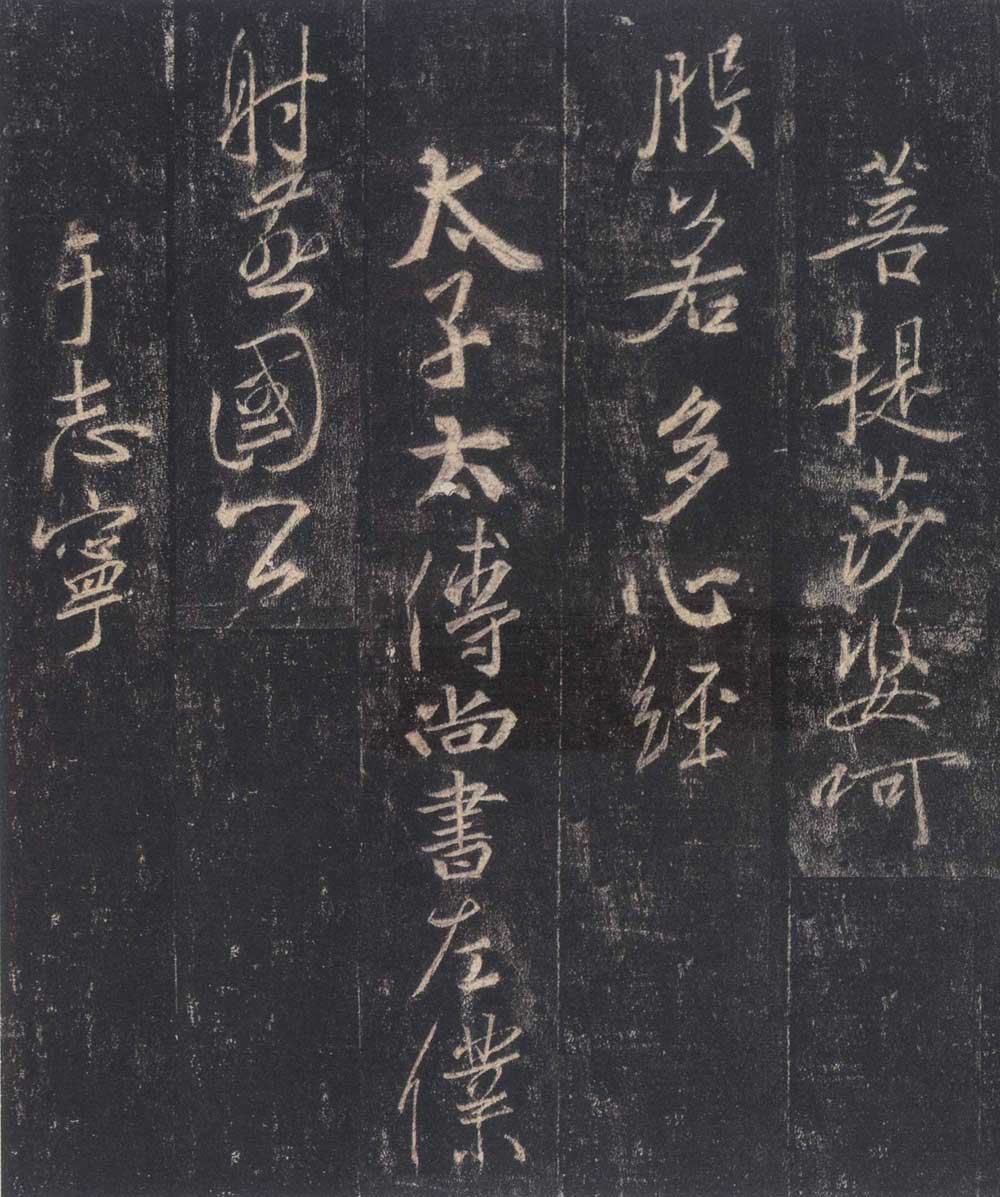
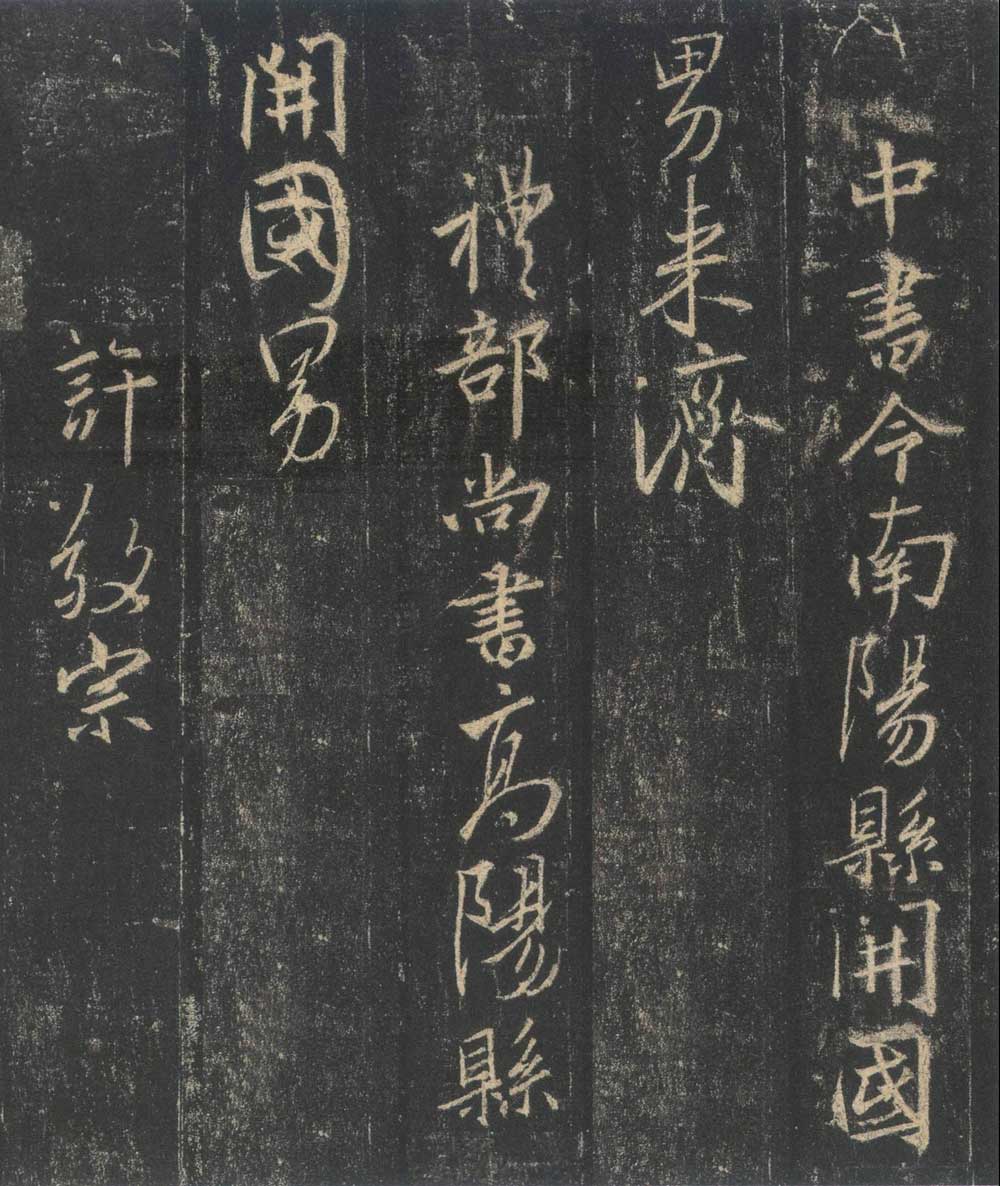
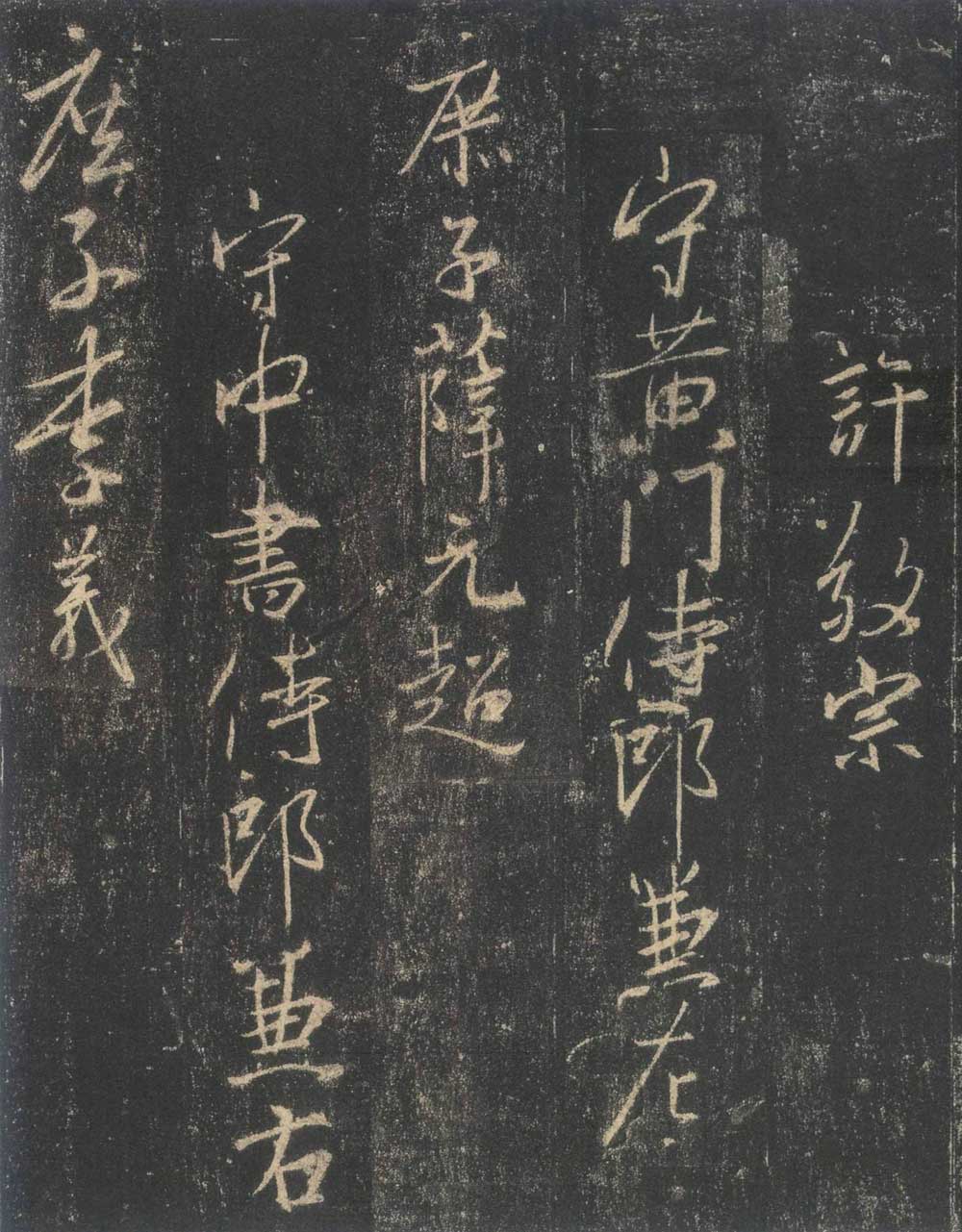
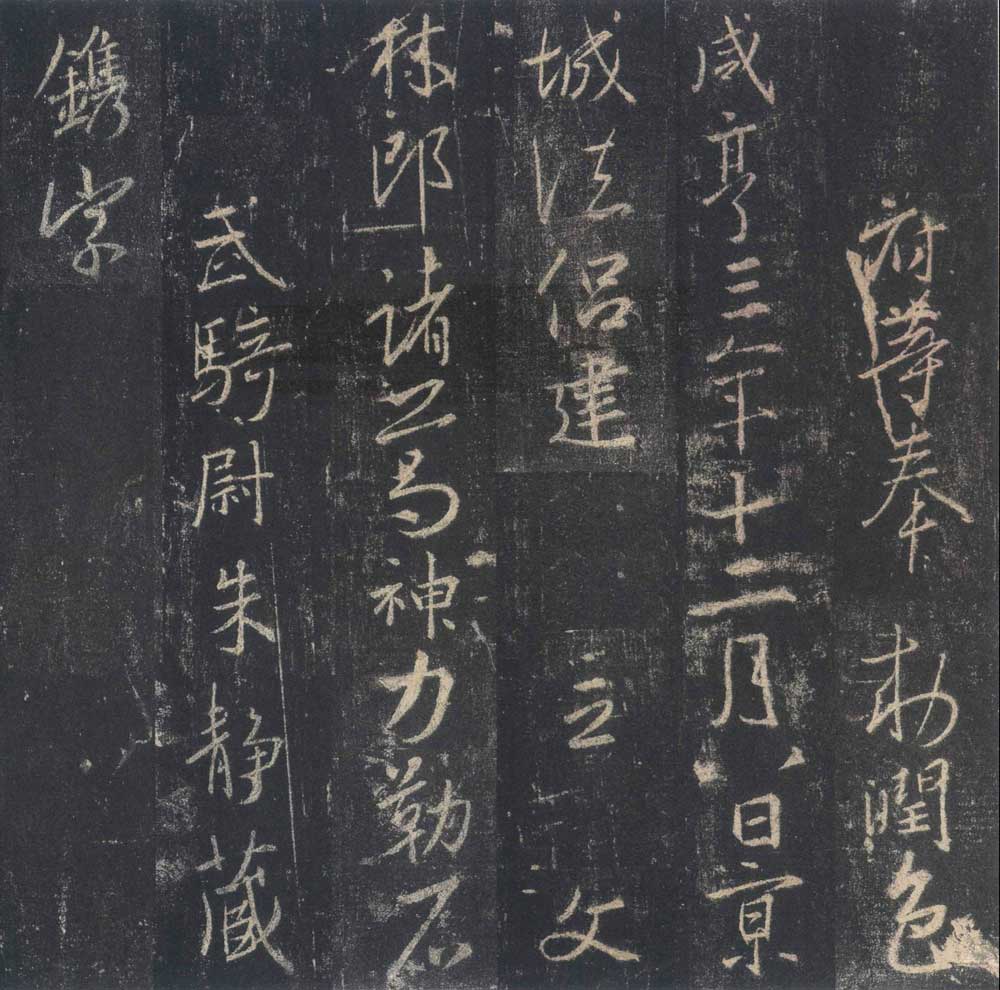
Explanation of "The Holy Preface to the Tripitaka of the Tang Dynasty":
Emperor Taizongwen's system
The collection of Shamen Huairen in Hongfu Temple.
Written by Wang Xizhi, the right general of Jin Dynasty.
盖闻二仪有像。显复载以含生。四时无形。潜寒暑以化物。是以窥天鉴地。庸愚皆识其端。明阴洞阳。贤哲罕穷其数。然而。天地苞乎阴阳,而易识者。以其有像也。阴阳处乎天地。而难穷者。以其无形也。故知像显而微。虽愚不或。形谮莫覩。在智者迷。况乎佛道。崇虚、乘幽,控寂。弘济万品。典御十方。举威灵而无上。抑神力而无下。大之则弥于宇宙。细之则摄于毫厘。无灭无生。历千劫而不古。若隐若显。运百福而长今。妙道凝玄。遵之莫知其际。法流湛寂。挹之则莫测其源。故知蠢蠢凡愚。区区庸鄙。抆其旨趣。能无疑或者焉。然则大教之兴。基乎西土。腾汉庭而皎梦。照东城而流慈。昔者。分形分迹之时。言未驰而成化。当常现常之世。民仰德而知虚。及乎晦影归真。迁仪越世。金容掩色。不镜三千之光。丽象开图。空端四八之相。于是微言广被。拯含类于三途。遗训遐宣。导群生于十地。然而真教难仰。莫能一其旨归、曲学易遵。耶正于焉。分就所以空有之论。或习俗而是非。大小之乘。乍谐时而隆替。有玄奘法师者。法门之领袖也。幼怀贞敏。早悟三空之心。长契神情。先苞四忍之行。松风水月。未是比其清华。仙露明珠。讵能方其朗润。故以智通无累。神测未形。超六尘而迥出只千古而无对。凝心内境。悲正法之陵迟。栖虑玄门。慨深文之讹谬。思欲分条。抒理广彼前闻。截伪存真。开兹后学。是以翘心净土。法游西域。乘危远迈。杖(?)策孤证。积雪晨飞。途闻失地。鹜砂夕起。空外迷天。万里山川。拨云霞而进影。百重寒暑。蹑霜雨而前踪。诚重劳轻求。深弘达周。游西宇十有七年。穷历道邦。询求正教。双林八水。味道餐风。鹿菀鹫峰。瞻奇仰异。承至言于先圣。受真教于上贤。探赜妙门。精穷奥业。一乘五津之道。驰骤于心田。八藏三箧之文。波涛于口海。爰自所历之国。总将三藏要文。凡六百五十七部。译布中夏。宣扬胜业。引慈云于西极。注法雨于东垂。圣教缺而复合。苍生罪而还福。湿火宅之干焰。共拔迷途。朗爰水之昏波。同臻彼岸。是知。恶因业坠。善以缘升。今坠之端。惟人所托。壁未桂生高岭。云露方得泫其花。莲出渌波。飞尘不能污其叶。非莲性自洁。而桂质本贞。良田所附者高。则微物不能累。所凭者净。则浊类不能沾。夫以卉木无知。犹资善而成善。况乎。人伦有识。不缘庆而求庆。方翼兹经流施。将日月而无穷。斯福遐敷与乾坤而永大。朕才谢珪璋。言惭博达。至于内典。尤所未闲。昨制序文。涂为鄙拙。唯恐秽翰墨于金简。标瓦砾于森林。忽得来书。谬承褒赞。循躬省虑。弥盖厚颜。善不足称,空劳致谢。皇帝在春宫述三藏。圣记。
夫显扬正教,非智无以广其文。崇阐微言。非贤莫能定其旨。盖真如圣教者。诸法之玄宗。众经之辄(足属)也。综括宏远。奥旨遐深。极空有之精微。体生减之机要。词茂道旷。寻之者不究其源。文显义幽。履之者莫测其际。故知圣慈所被。业无善而不臻。妙化所敷。缘无恶而不翦。开法纲之纲纪。弘六度之正教。拯群有之涂炭。启三藏之秘扃是以。名无翼而长飞。道无根而永固。道名流庆。历遂古而镇常。赴感应身。经尘劫而不朽。晨钟夕梵。交二音于鹫峰。慧日法流。转双轮于鹿菀。排空宝盖。接翔云而共飞。庄野春林。与天花而合彩。
伏惟皇帝陛下。上玄资福。垂拱而治八荒。德被黔黎。敛衽而朝万国。恩加朽骨。石室归贝叶之文。泽其昆虫。金匮流梵说之偈。遂使阿(禾辱)达水。通神旬之八川。耆阇崛山。接嵩华之翠岭。窃以性德凝寂。麋归心而不通。智地玄奥。感恳诚而遂显。岂谓重昏之夜。烛慧炬之光。火宅之朝。降法雨之泽。于是百川异流。同会于海。万区分义。总成乎实。岂与汤武校其优劣。尧舜比其圣德者哉。玄奘法师者。夙怀聪令。立志夷简。神清龆龀之年。体拔浮华之世。凝情定室。匿迹幽巖。栖息三禅。巡游十地,超六尘之境。独步迦维。会一乘之旨。随机化物。以中华之无质。寻印度之真文。远涉恒河。终期满字。频登雪岭。更获半珠。问道法还。十有七载。备通释典。利物为心。以贞观十九年九月六日奉。
敕于弘福寺。翻译圣教要文凡六百五十七部。引大海之法流。洗尘劳而不竭。传智灯之长焰。皎幽闇而恒明。自非久值胜缘。何以显扬斯旨。所谓法相常住。齐三光之明。
我皇福臻。同二仪之固。伏见御制。众经论序。照古腾今。理含金石之声。文抱风云之润。治辄以轻尘足岳。坠露添流。略举大纲。以为斯记。
治素无才学。性不聪敏。内典诸文。殊未观览。所作论序。鄙拙尤繁。忽见来书。褒扬赞述。抚躬自省。惭悚交并。劳师等远臻。深以为愧。
贞观廿二年八月三日内府。
般若波羅蜜多心經
沙门玄奘奉诏譯
Avalokitesvara Bodhisattva. I have been practicing deep Prajnaparamita for a long time. See that the five aggregates are all empty. Overcome all hardships. Relics. Color is not empty. Empty has no different colors. Form is emptiness. Emptiness is form. The same goes for feeling, thinking and doing. Relics. All dharmas are empty. Neither birth nor death. Not dirty, not clean, neither increasing nor decreasing. It is in the sky. Colorless. No thoughts, no thoughts, no knowledge. No eyes, ears, nose, tongue, body or mind. Colorless sound, fragrance and touch. No vision. Even the unconscious realm. There is no ignorance. There is no end to ignorance either. Even without old age and death. There is no old age and death. Wu Ku Ji Ruan Dao. There is no wisdom and no gain. To gain nothing. Bodhisattva. According to Prajna Paramita. The heart is innocent. There is no reason for this. There is no terror. Stay away from upside-down dreams. Ultimate nirvana. Buddhas of the three generations. According to Prajna Paramita. Obtain Anuttara Samyak Sam Bodhi. Therefore, we know Prajna Paramita. It’s the Great God Mantra. This is the Great Ming Mantra and the Supreme Mantra. It's a curse without waiting. Able to eliminate all pain. It's true. To say the Prajnaparamita mantra is to say the mantra
Reveal the Emperor, Reveal the Emperor, Prajna Reveal the Emperor, Prajna Reveal the Emperor, Bodhi Sengshaha
Prajna Heart Sutra
The Crown Prince, Tai Fu, Shangshu Zuo Pu, shot the Duke of Yan at Zhining.
Zhongshu ordered the founder of Nanyang County to come to Ji
Xu Jingzong, the founding father of Gaoyang County, Minister of Rites
Xue Yuanchao, the minister of Huangmen and his concubine
Li Yifu, the minister of the Shou Zhongshu and his concubine on the right, and others
imperial edict
On December 8, the third year of Xianheng, the capital was established by the Dharma couple.
Wen Linlang Zhuge's magical power to pull the stone
Engraved by Wuqi Lieutenant Zhu Jingzang

